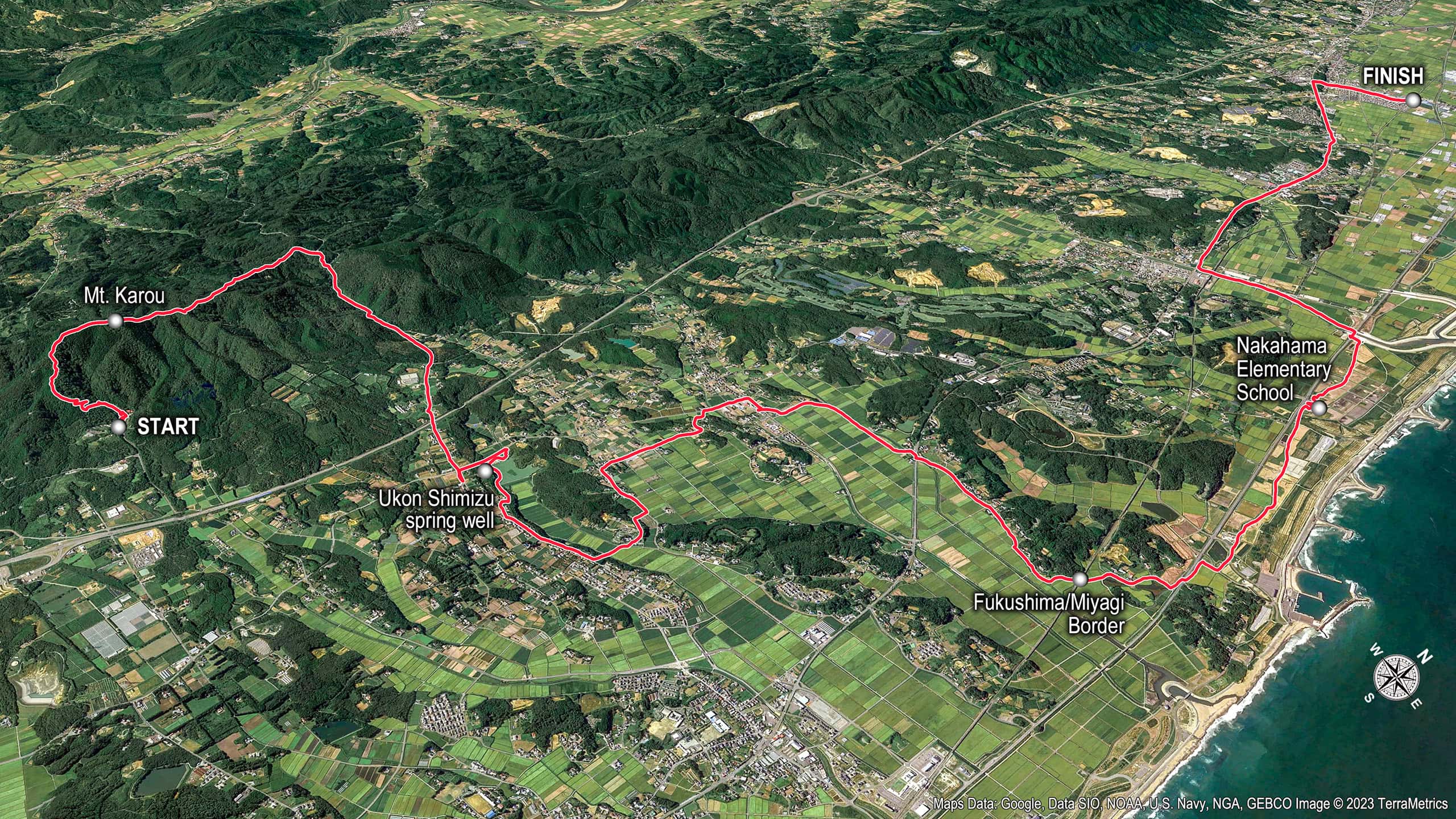

Last night’s weather forecast for today was that it would be mostly cloudy with a chance of occasional rain. That worried us as our second day of the Michinoku Coastal Trail (MCT) thru-hike would cover the first decent mountain tail.
Luckily, when we peeked through the window of our hotel room this morning, the dawn sky reflecting the calm ocean was gorgeous and soon turned into a perfect sunny blue. We kept our fingers crossed that it would stay like this all day.
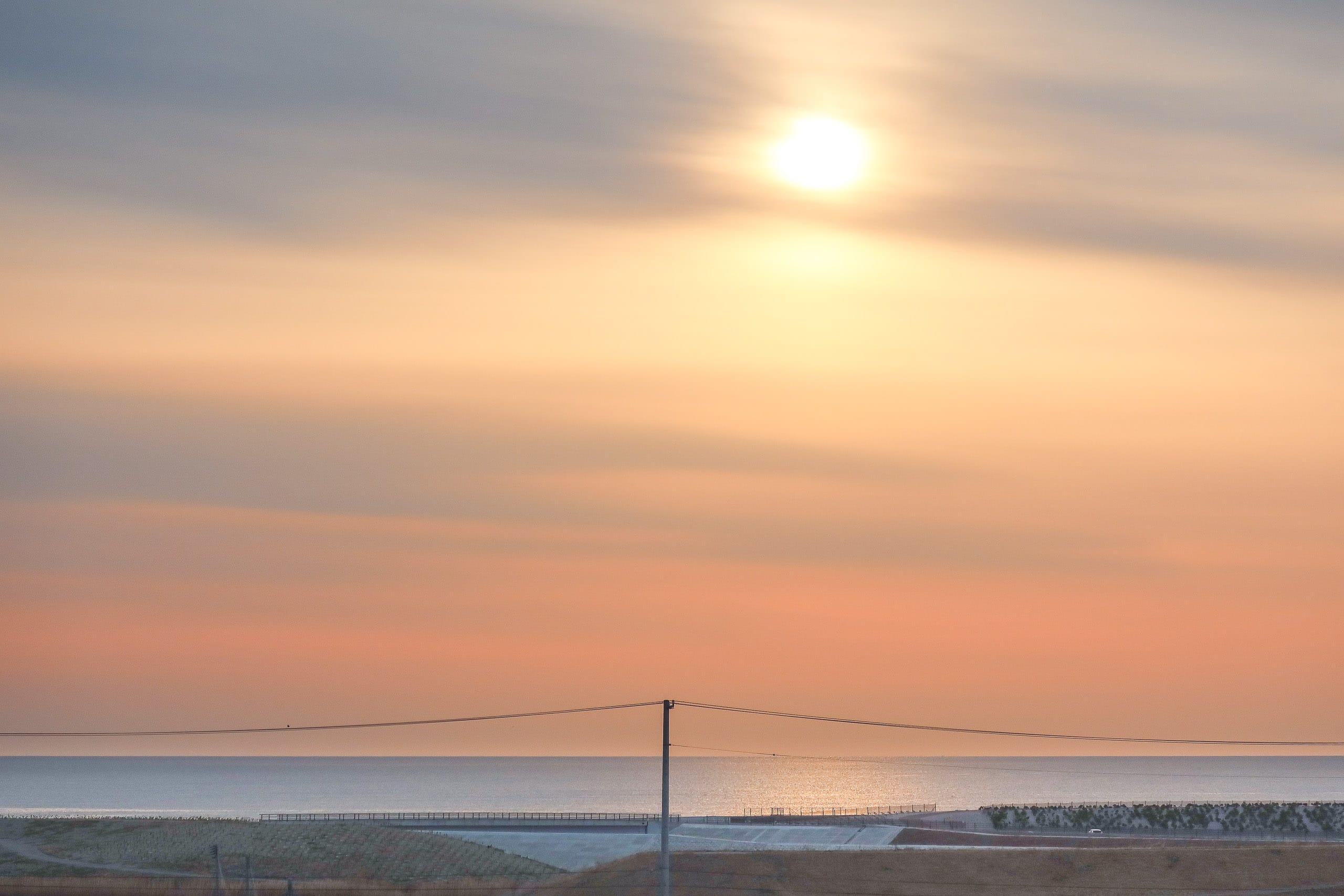
Mt. Karou
When we came out of the hotel carrying only very light, small backpacks, a taxi we had arranged last night was already there, waiting for us. A smooth 15-minute ride through quiet weekend early morning neighborhoods and agricultural lands quickly took us back to the Mt. Karou 鹿狼山 trailhead again.
Mt. Karou, the mountain of deer and wolves, is considered a symbol of Shinchi Town 新地町 and holds a special place in the hearts of its residents. It is a very popular mountain for casual day hiking for locals throughout the year. Evidently, by our arrival at still early 8:30 a.m., a spacious parking lot in front of the trailhead was already almost full.
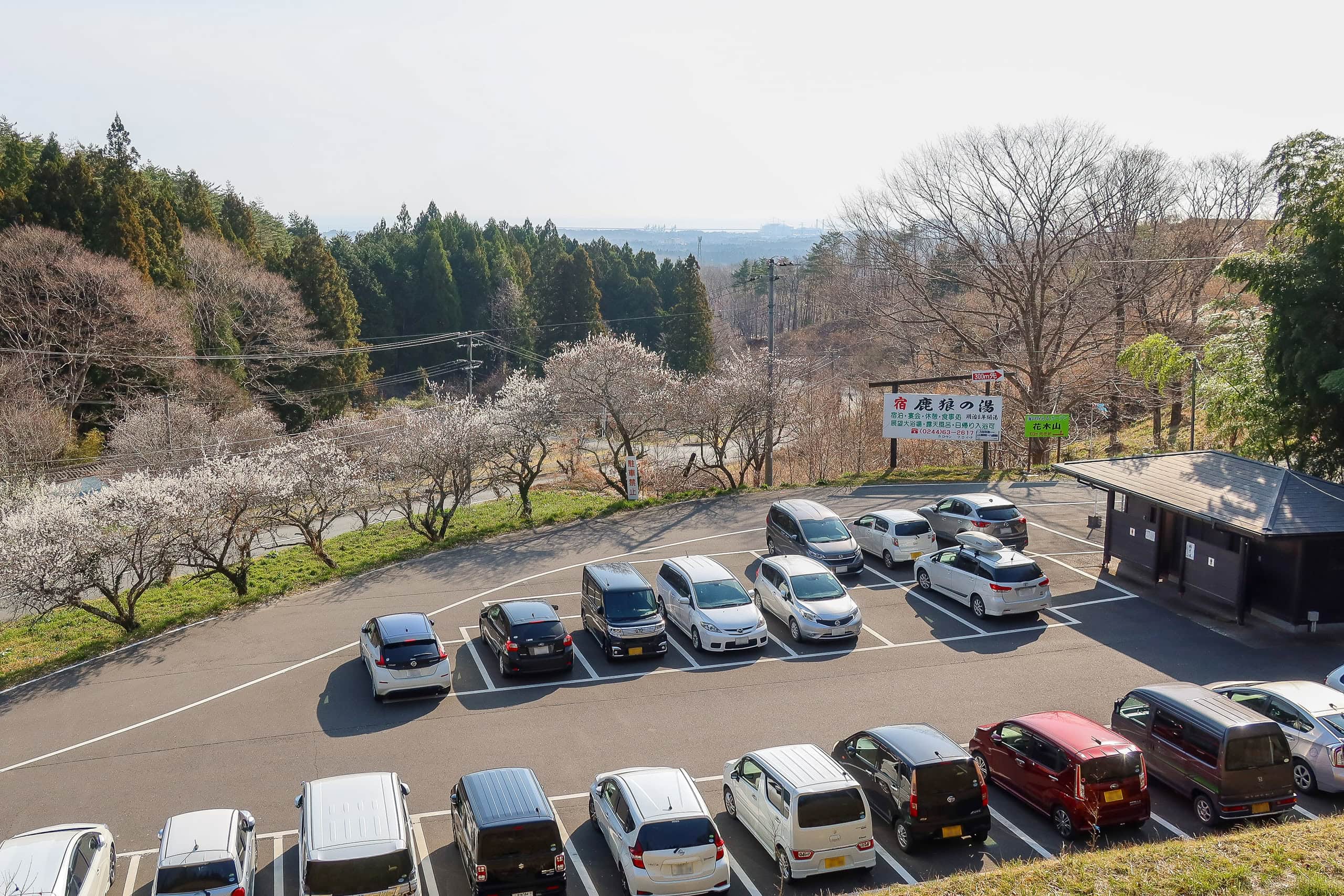
While we were getting drinks from a vending machine and getting ready, some local elders made our jaw drop by coming down through the stone Trii gate, guarding the trailhead with a divine servant deer and wolf. Looked like they had already done their morning routine trek. They must have started really early, most likely before dawn…
Feeling a bit intimidated, we quickly collected ourselves and entered the trailhead gate.
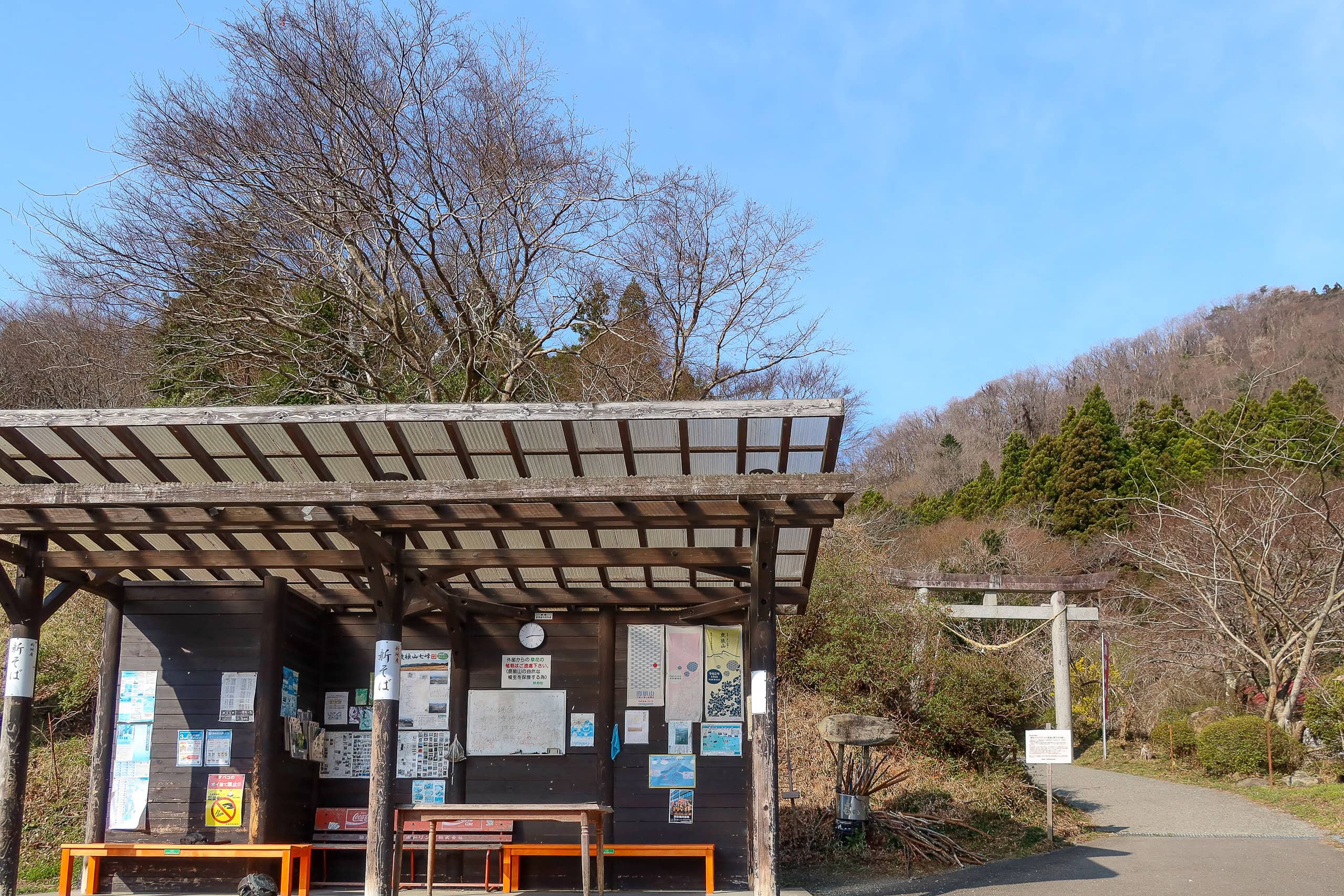

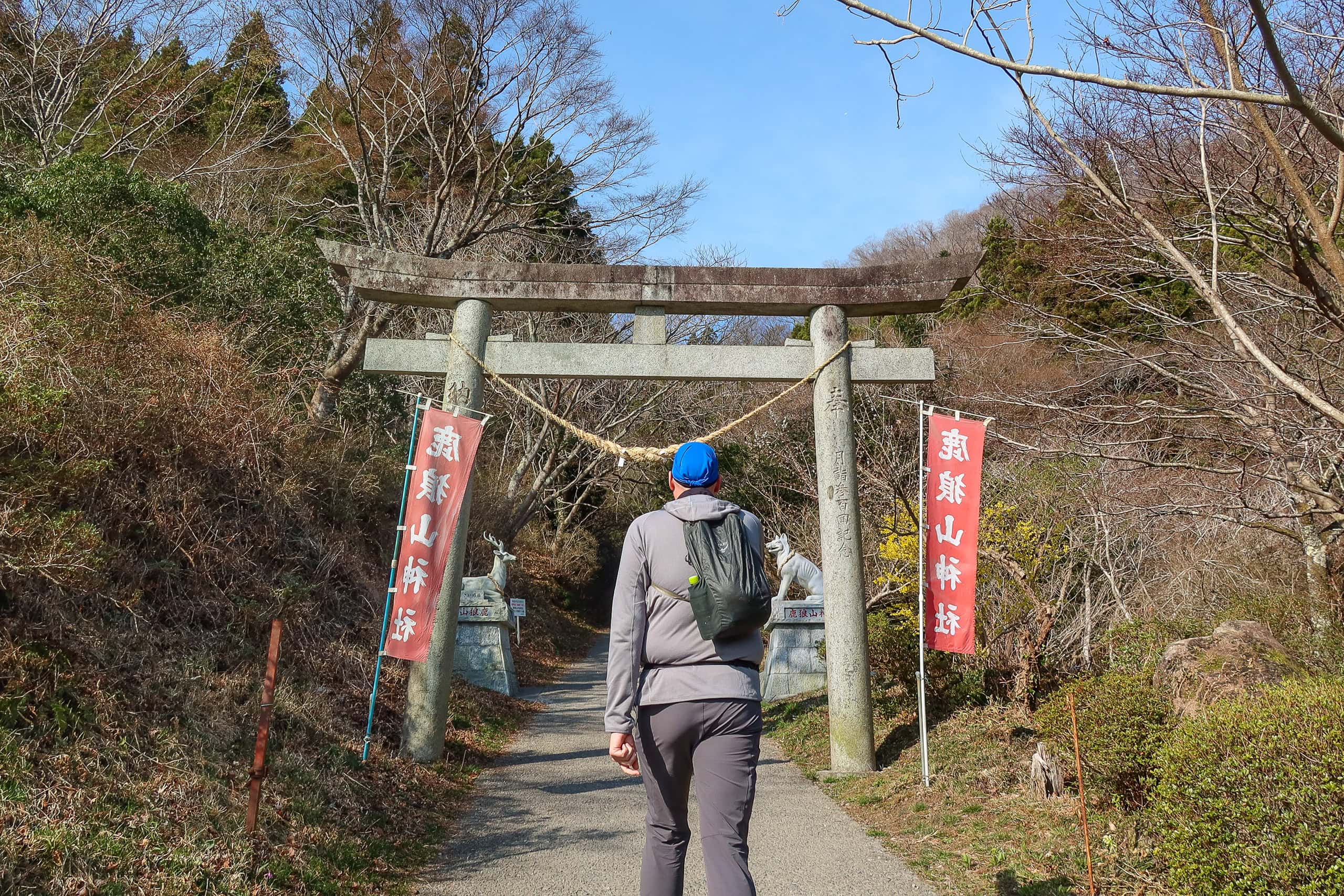
A route information board by the trailhead showed that Mt. Karou has multiple trails from different trailheads to the top. The MCT route looked to match the red/orange line, which is called the forest route. However, without knowing these different routes, MCT hikers can just follow the trail markers with the MCT logos.
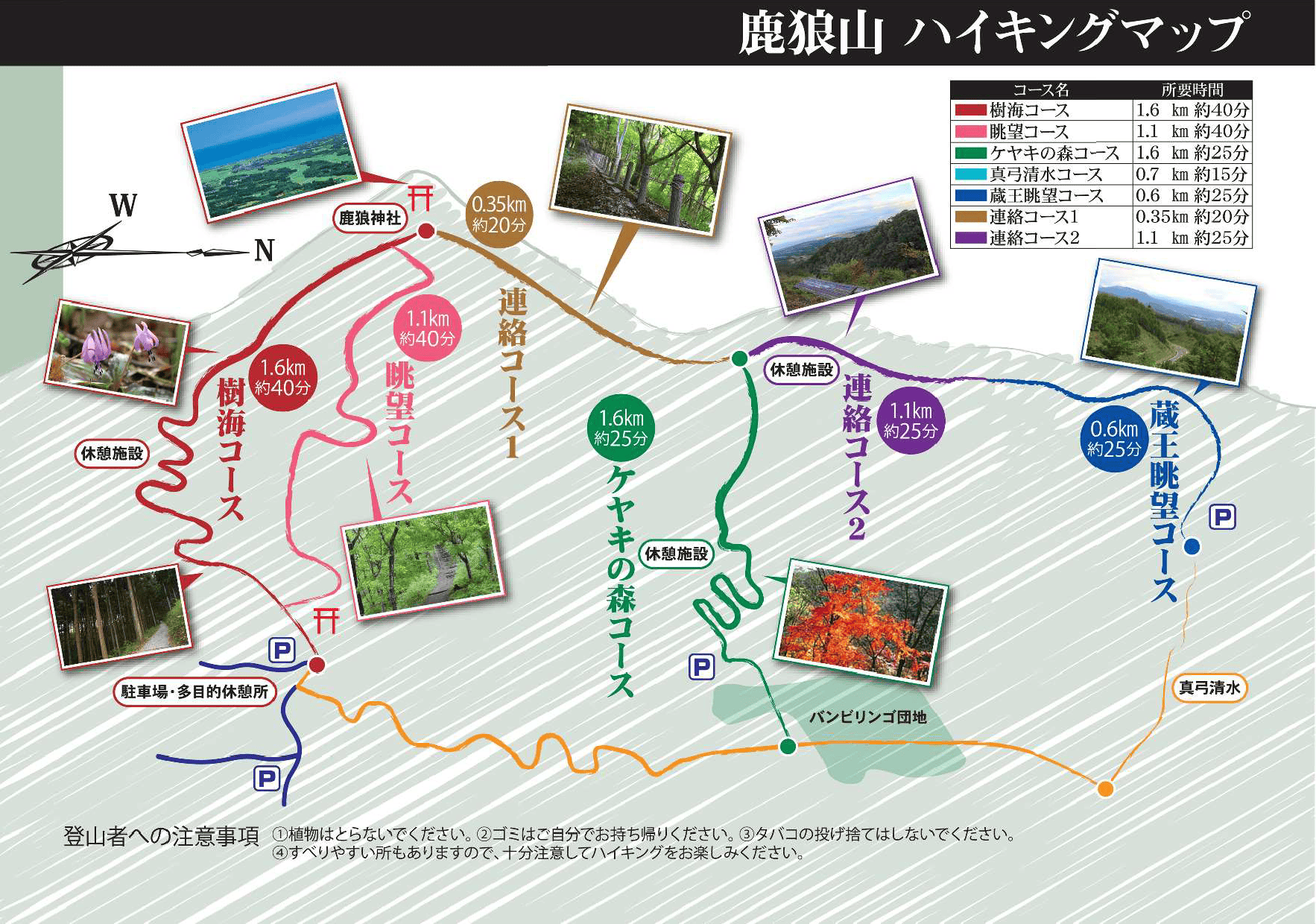
It must be a season for the tiny, cute dog’s-tooth violet — Japanese name: Katakuri — blooming clusters of them continued here and there on the earthen trailside along the route. The trail through the shadowed valley near the trailhead was lined with dried hydrangea bushes, which would be so beautiful in the June-July rainy season.
The lower part of the trail was shielded with thick evergreen forests, probably Japanese cedar or cypress grown for logging. On the other hand, trees in most of the middle to high parts of the mountain were deciduous and still leafless in this early springtime.
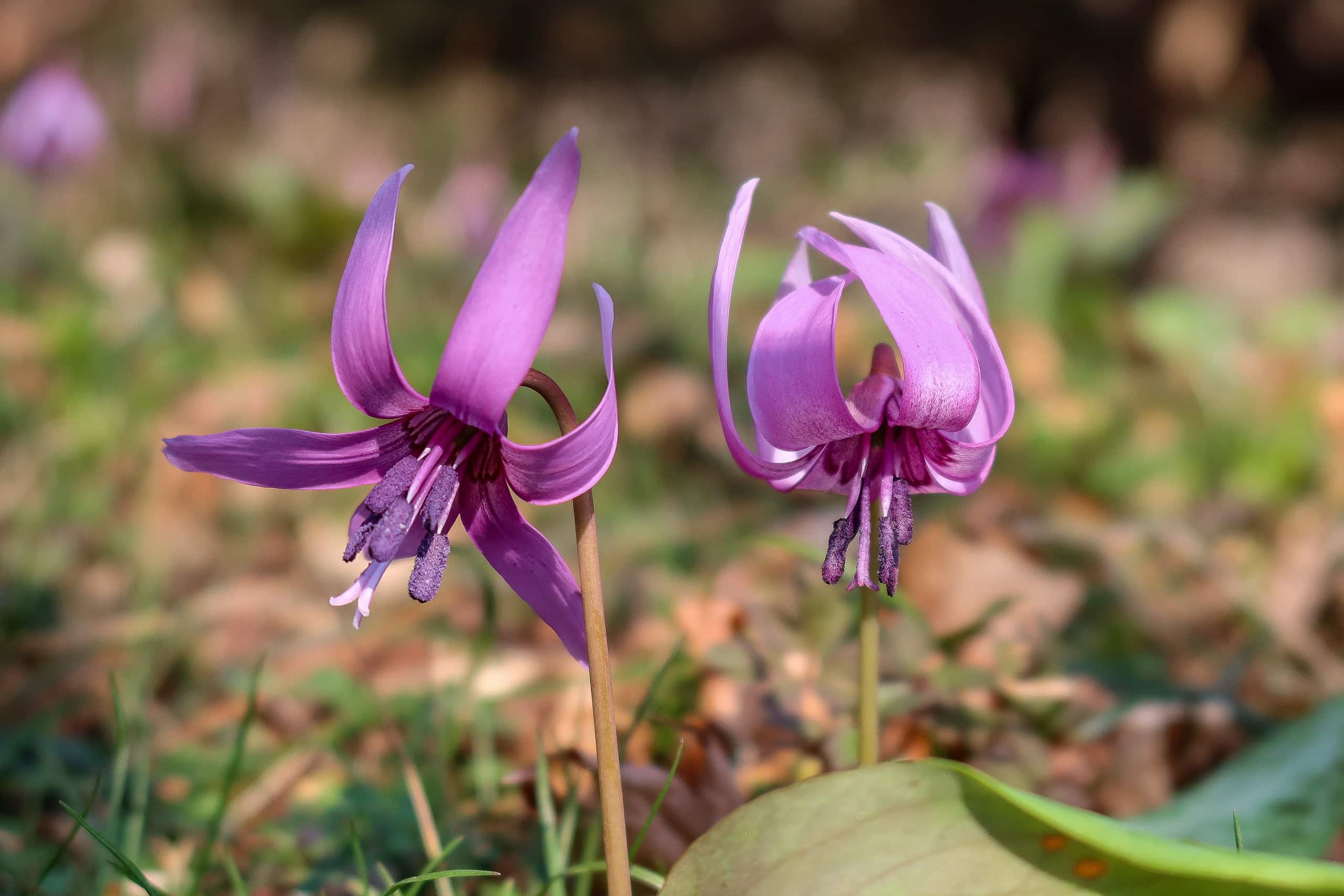
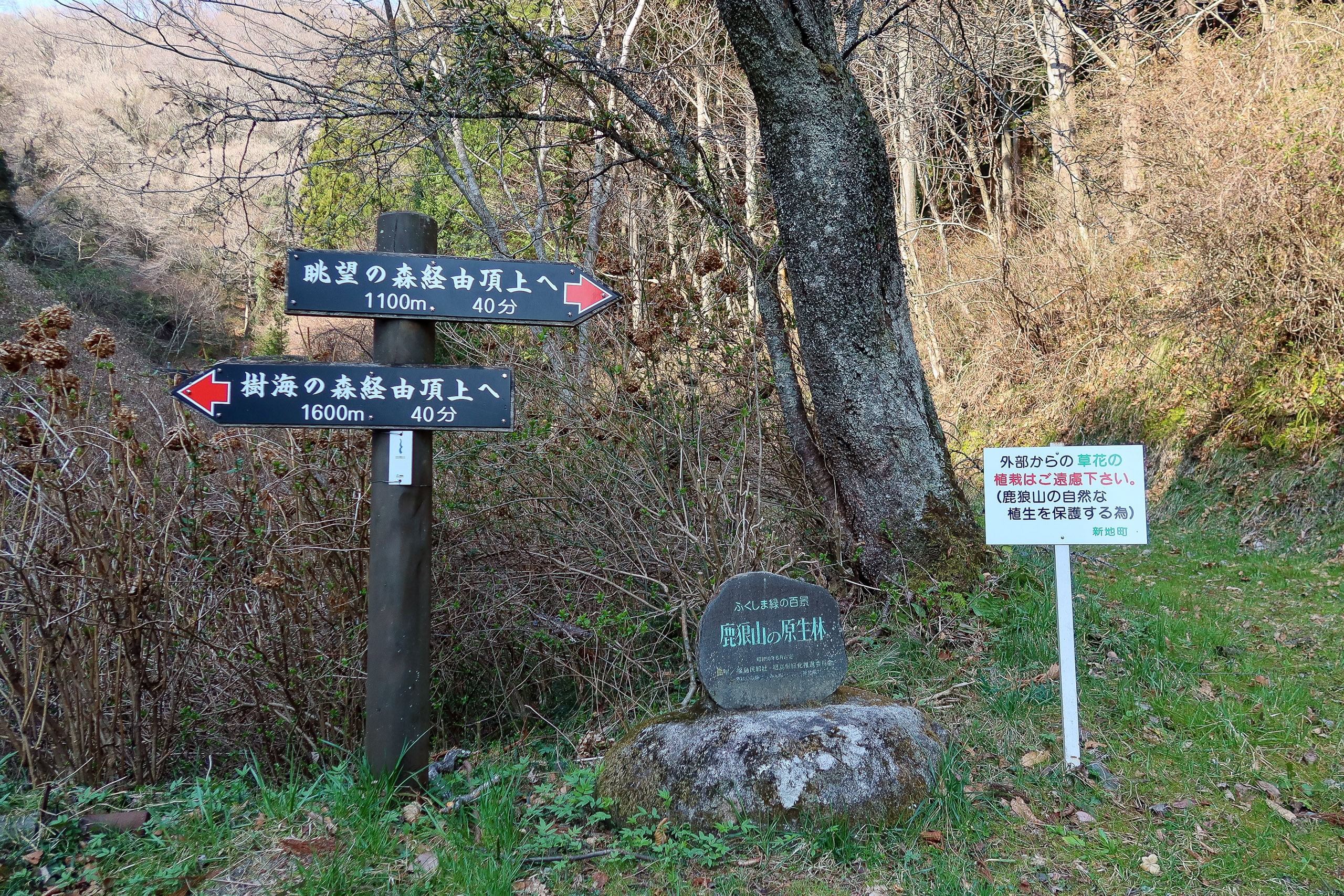
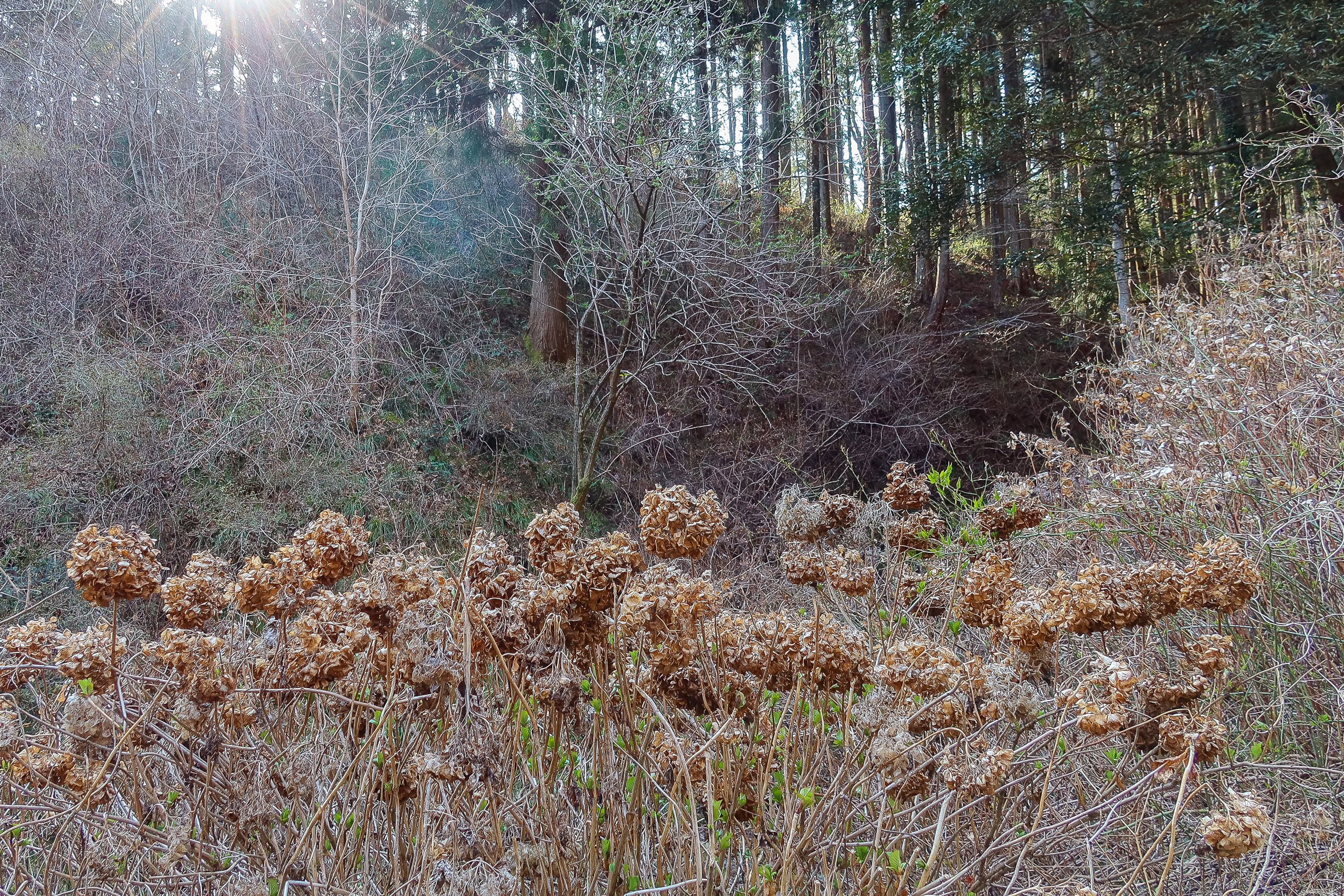
Small signs were placed at every 100 meters to count down the distance left to the top. Some showed names and pictures of the various birds inhabiting the mountain, while others featured a cute illustration of the same old man in ancient-style clothes, whose arms were exceptionally long and thin.
Later, an information board at the mountaintop explained who he was. Local legends say a god with extraordinarily long arms lives on Mt. Karou. His name is Tenaga Myojin 手長明神, literally meaning the long arms god, and his arms can extend his arms to reach the ocean to gather seashells. His ancient shell mounds still remain at an archaeological site in Shinchi Town…
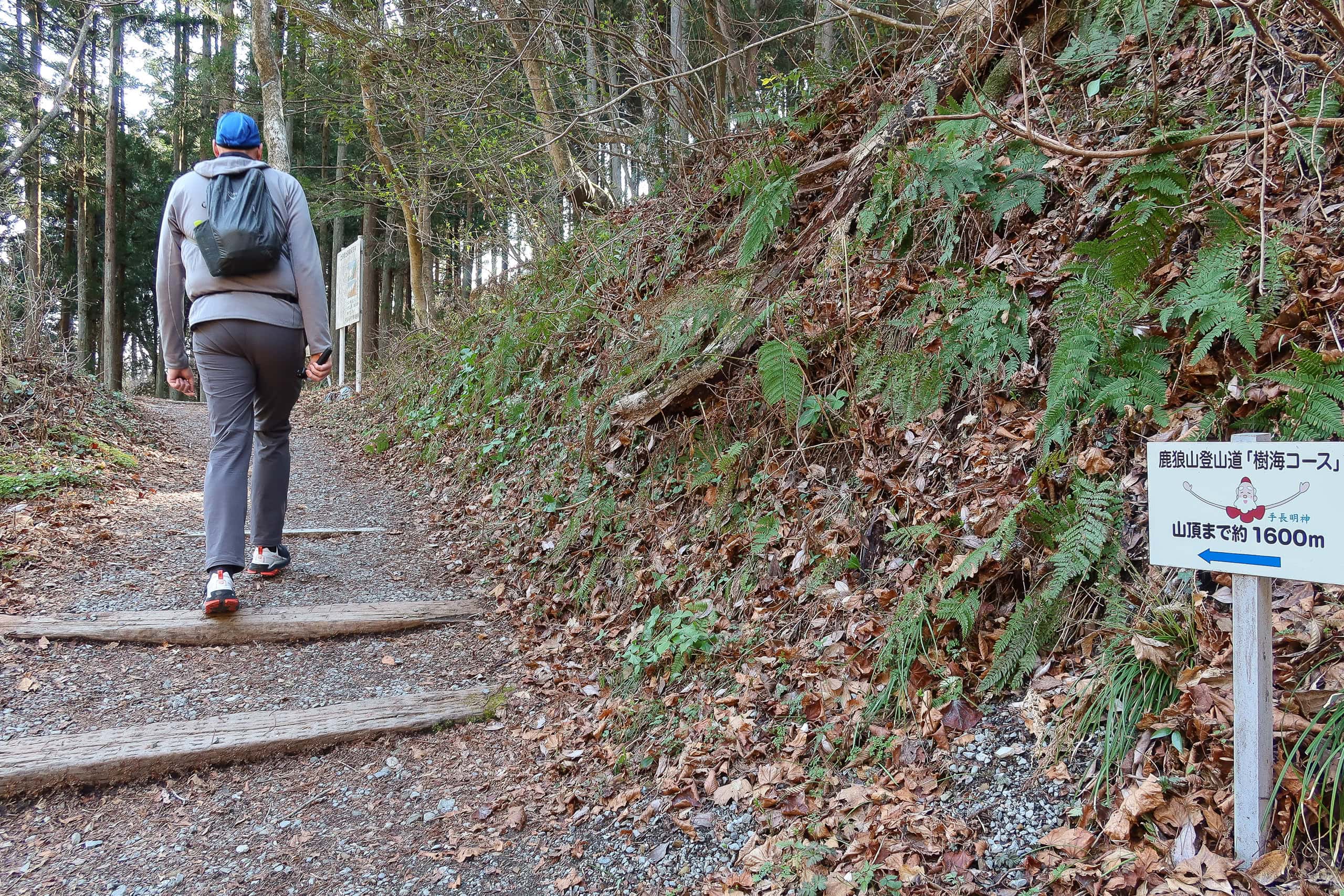
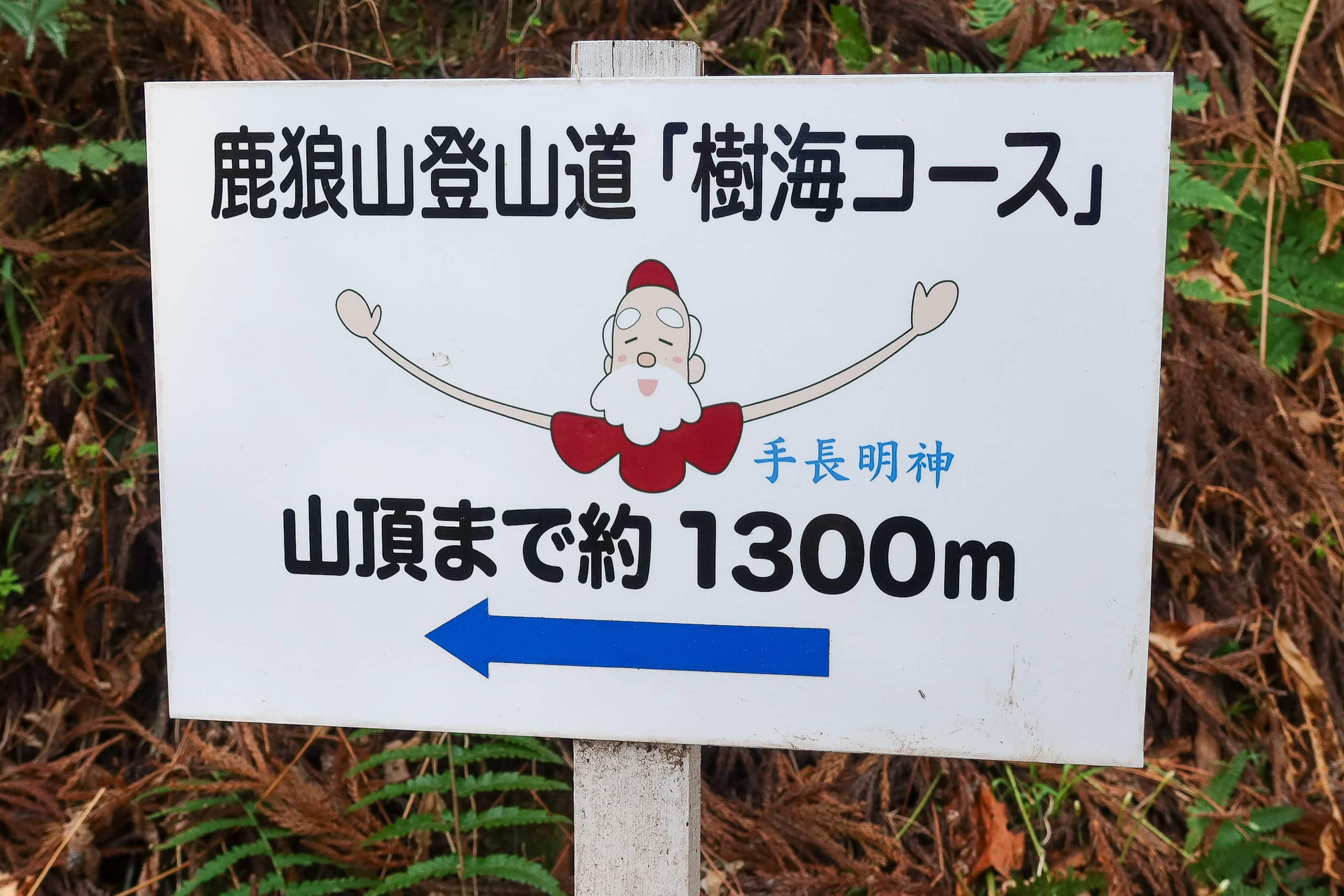
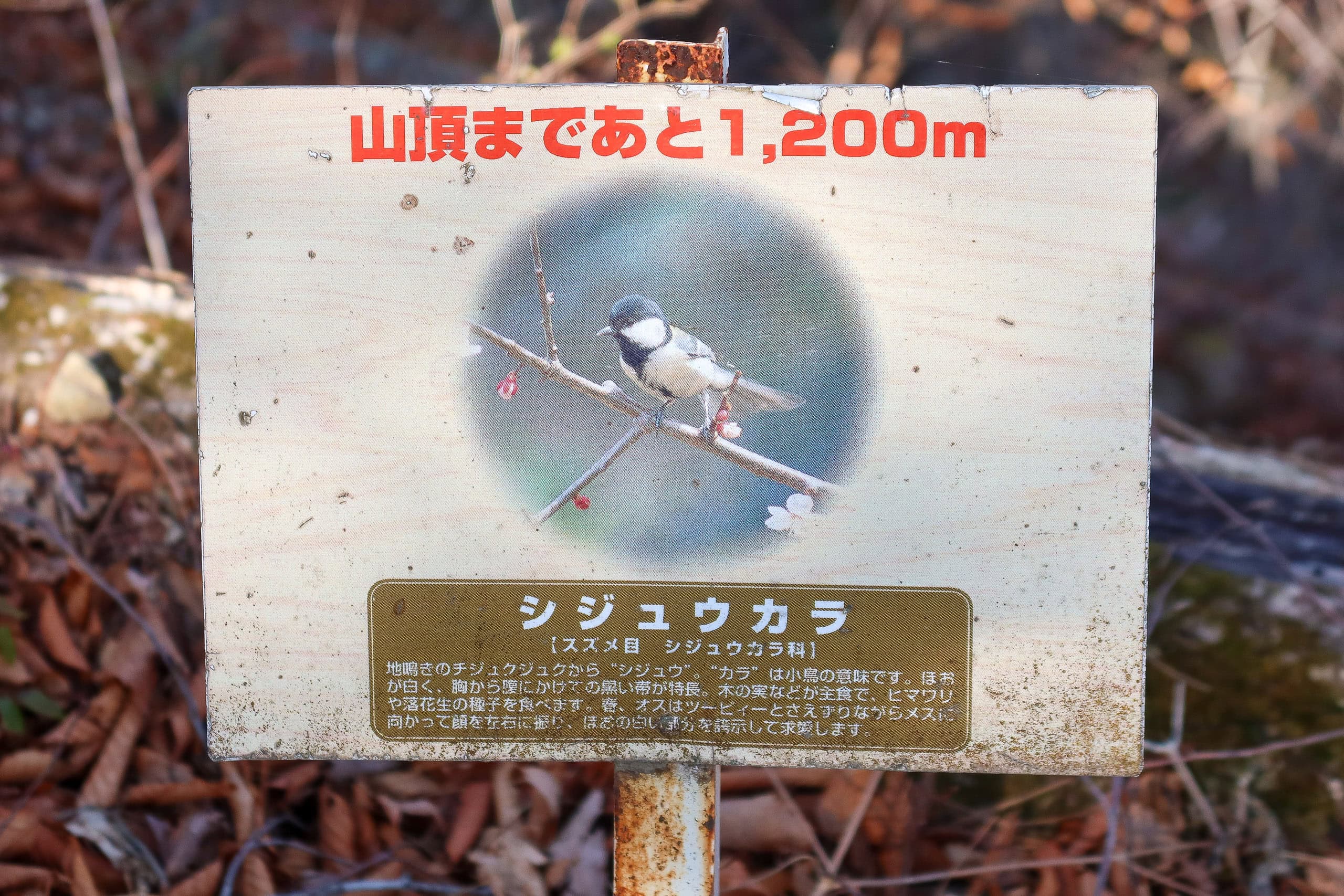
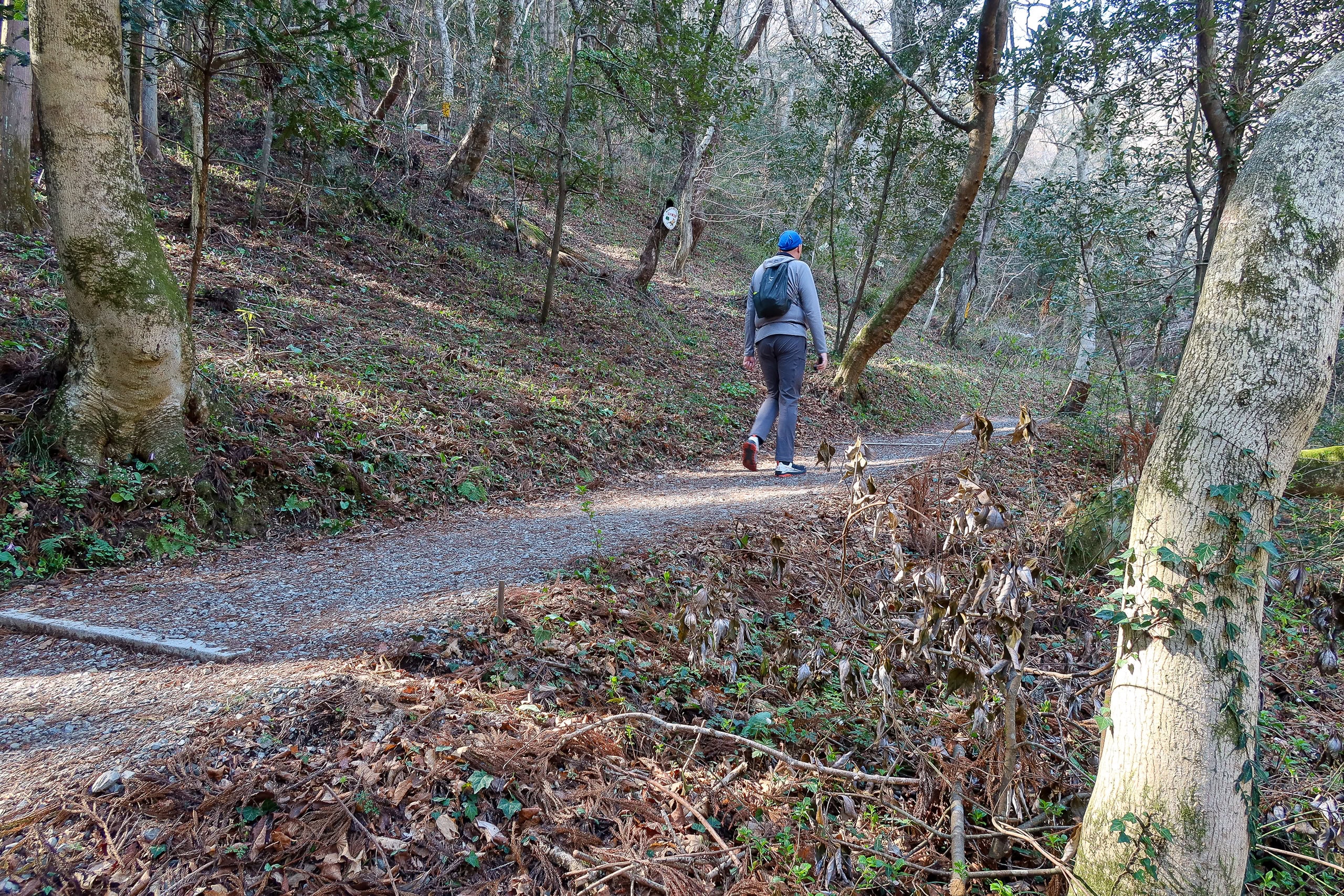
Generally, about a 40-minute leisurely walk should take up to the mountaintop along the forest route.
While walking up the gradually ascending, well-maintained trail, we passed quite a few other people from both directions: solo hikers, families with kids, middle-aged couples, girlfriend groups, and dog walkers. One thing for sure was that they all looked local, enjoying weekend day hikes, not MCT hikers.
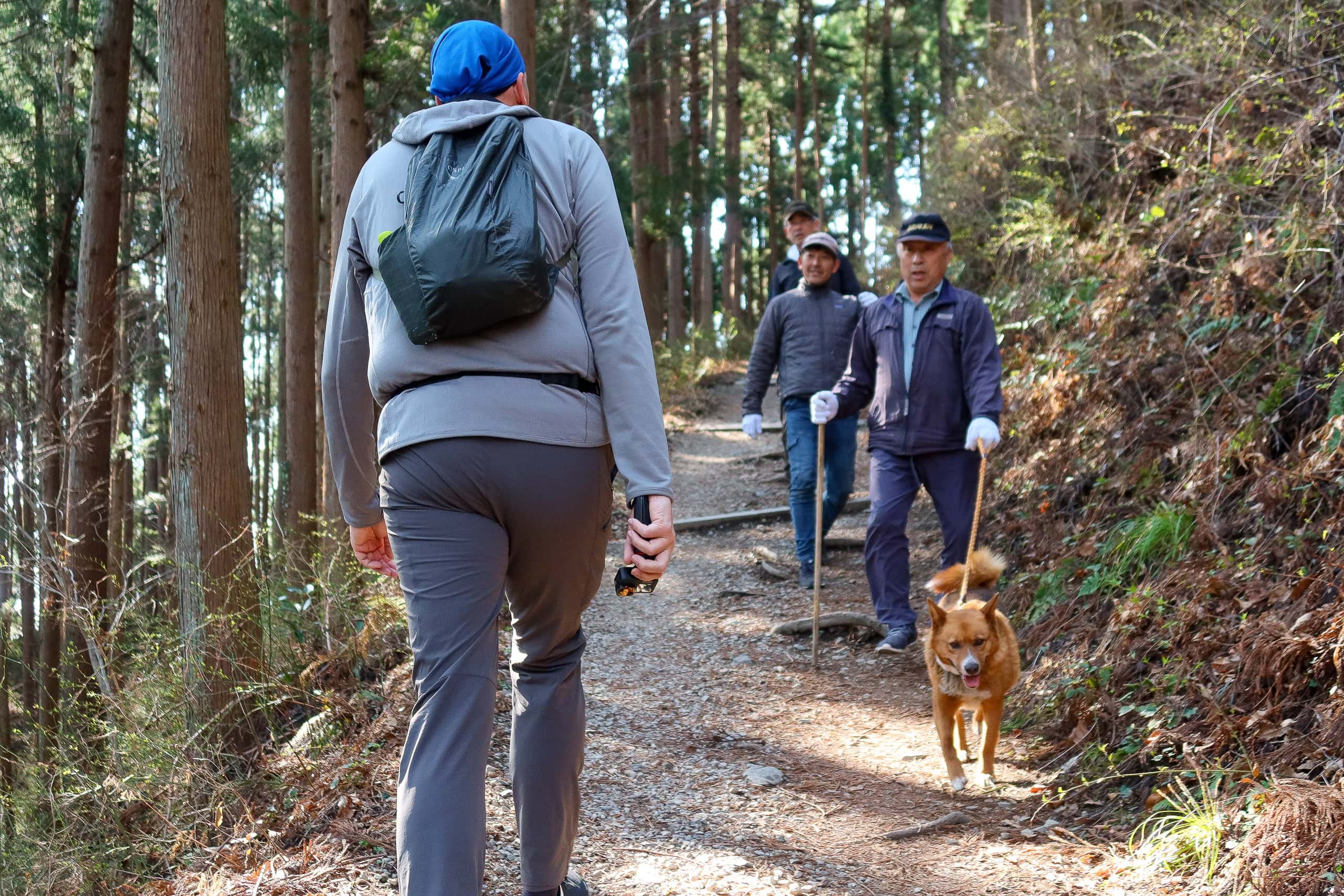
At one point, we heard, through densely standing trees, something like kids’ voices from the upfront. Soon, it became clear they were from young parents with two little boys walking down the trail toward us. We had no idea whether they were on the way back from the top or just walking around only the lower paths, but the little ones still retained their full energy and trotted down far ahead of their mom and dad. The voices were theirs, playfully shouting “goodbye” to everyone they passed by as if they didn’t want to miss any opportunities to say the words they had just learned.
Of course, they gave us the same joyous “goodbye” with giggles and continued running down while we waved to them. With slightly embarrassed smiles, their parents followed and said, “Sorry, the boys are too excited.”
We smiled back, “No problem at all.” It was good to see kids enjoying nature.
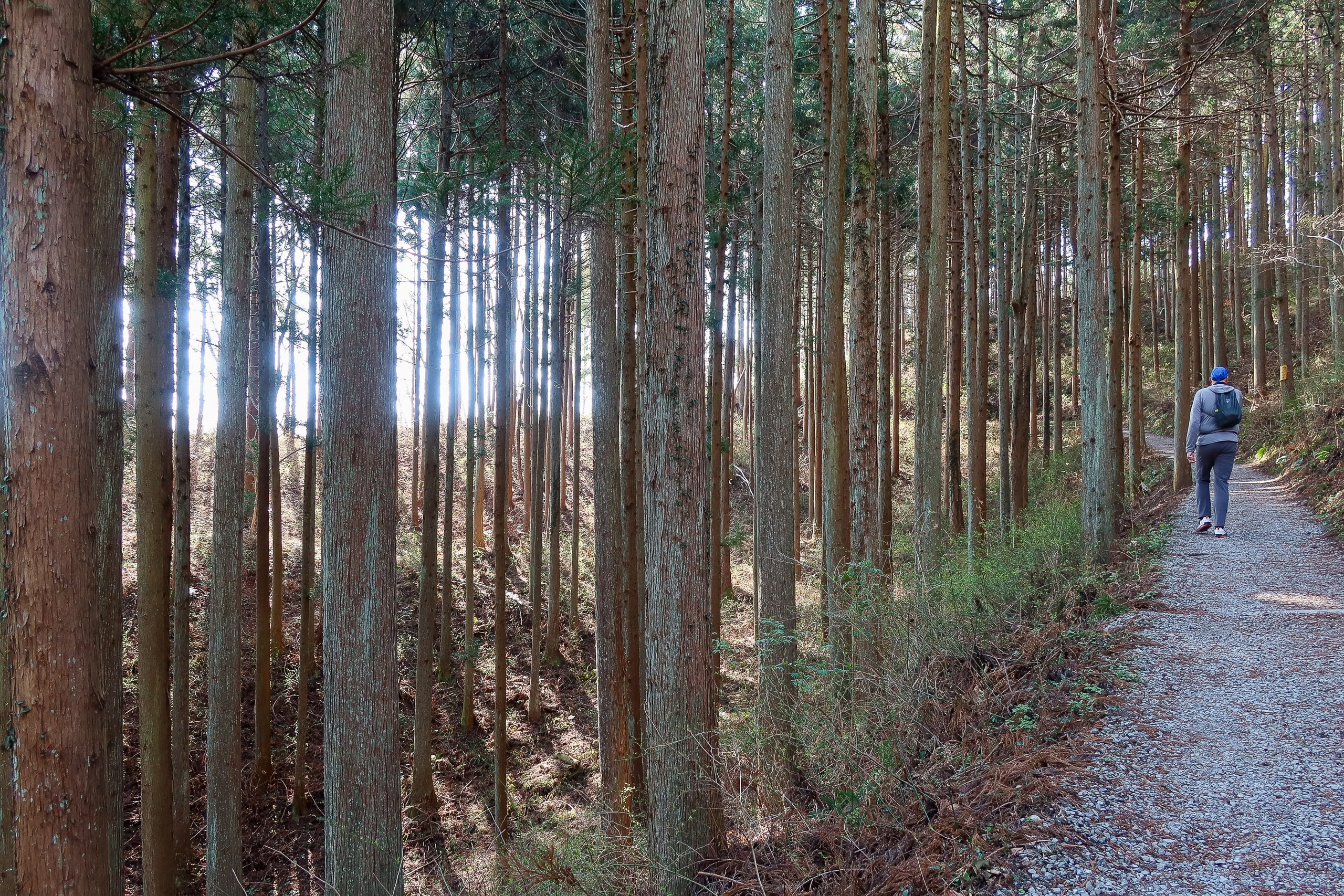
After passing the goodbye kids, we found a rest hut about halfway up on the trail that gave us a pretty good view. Even if the lower half of the sight was covered with overgrown trees (only for me. Erik got a much better view), I could see the Shinchi Town stretching along the coastline and the foggy Pacific Ocean.
The weather and temperature had been ideal for an enjoyable mountain walk. Thankfully, the sky didn’t show any signs of possible rain.
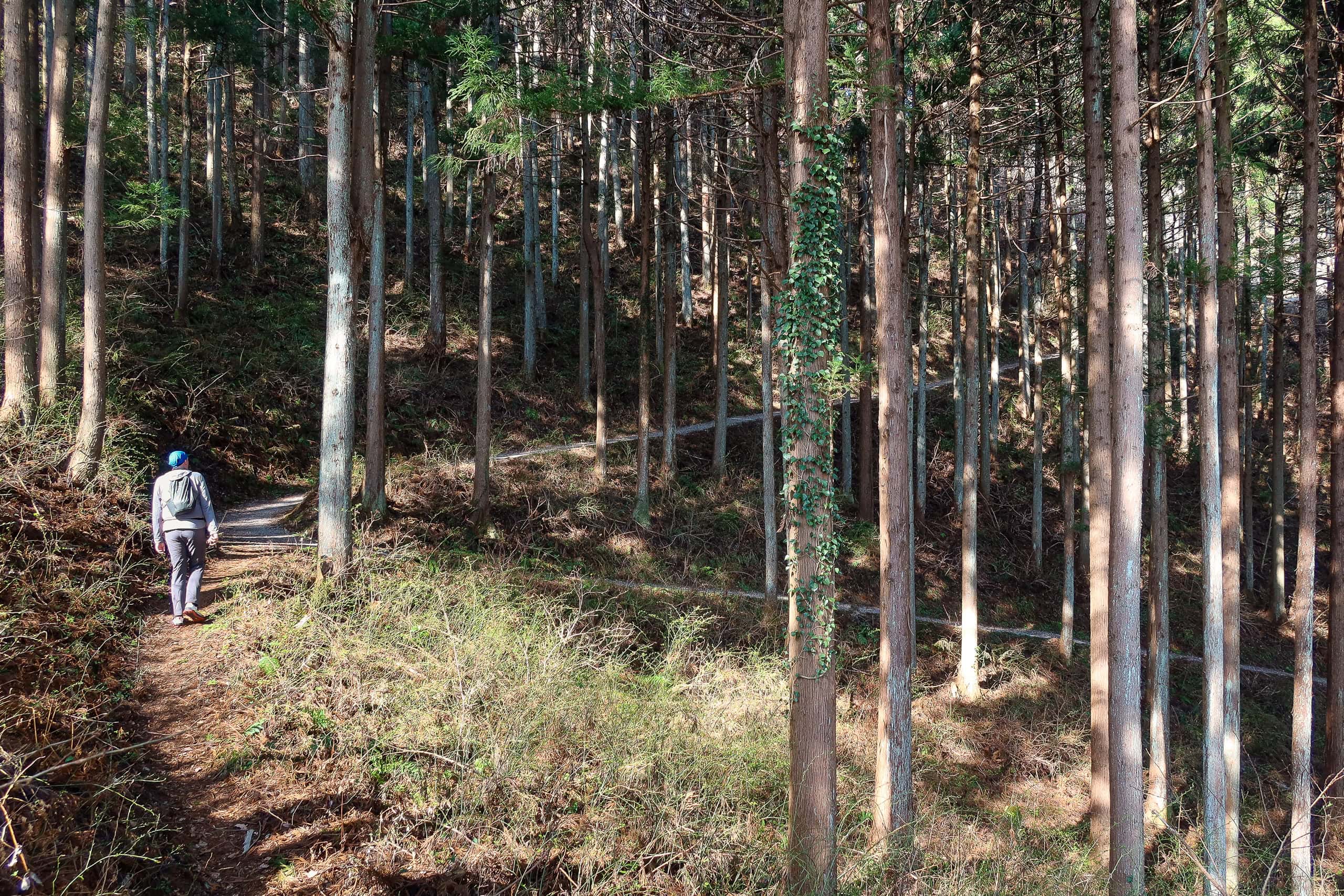
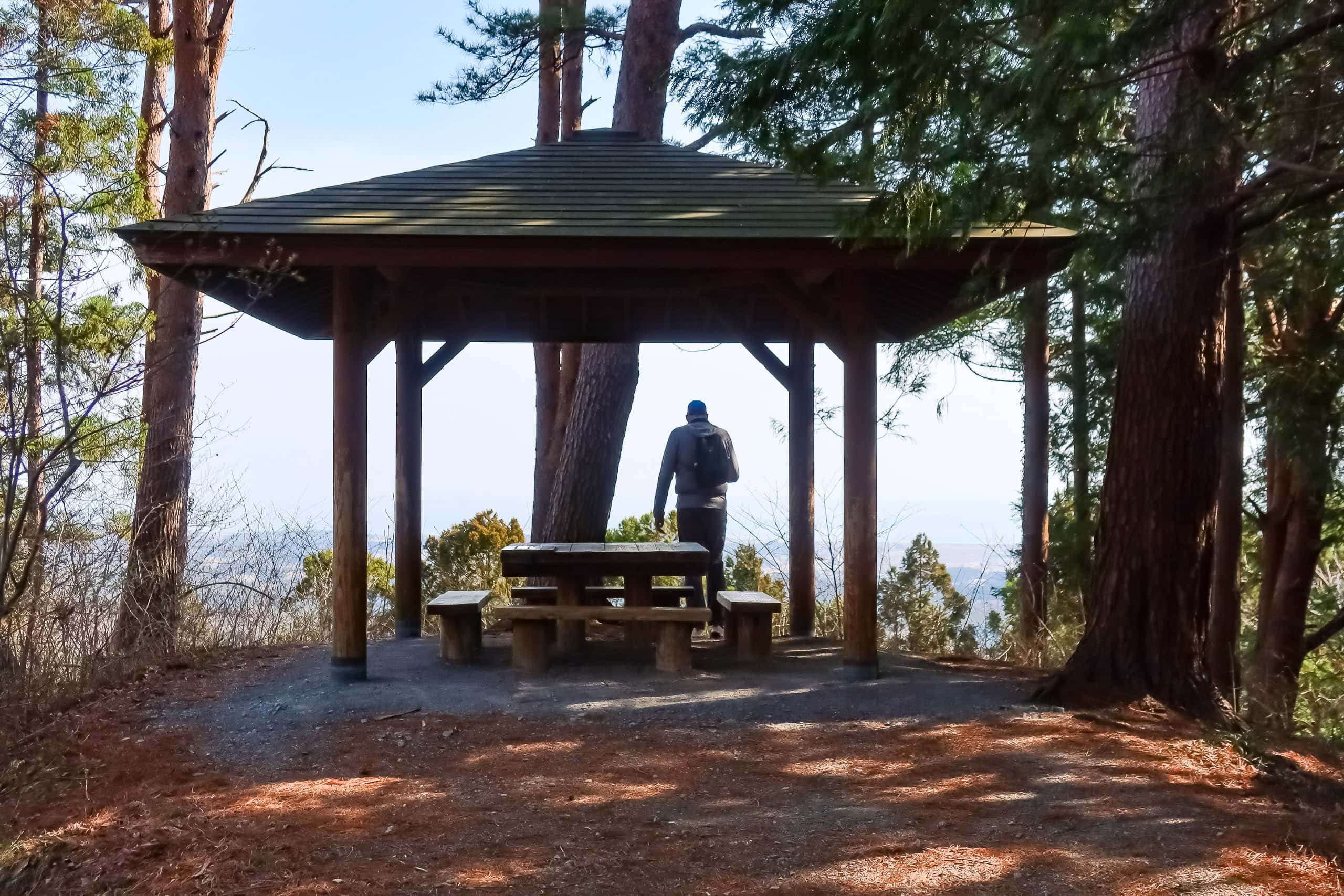
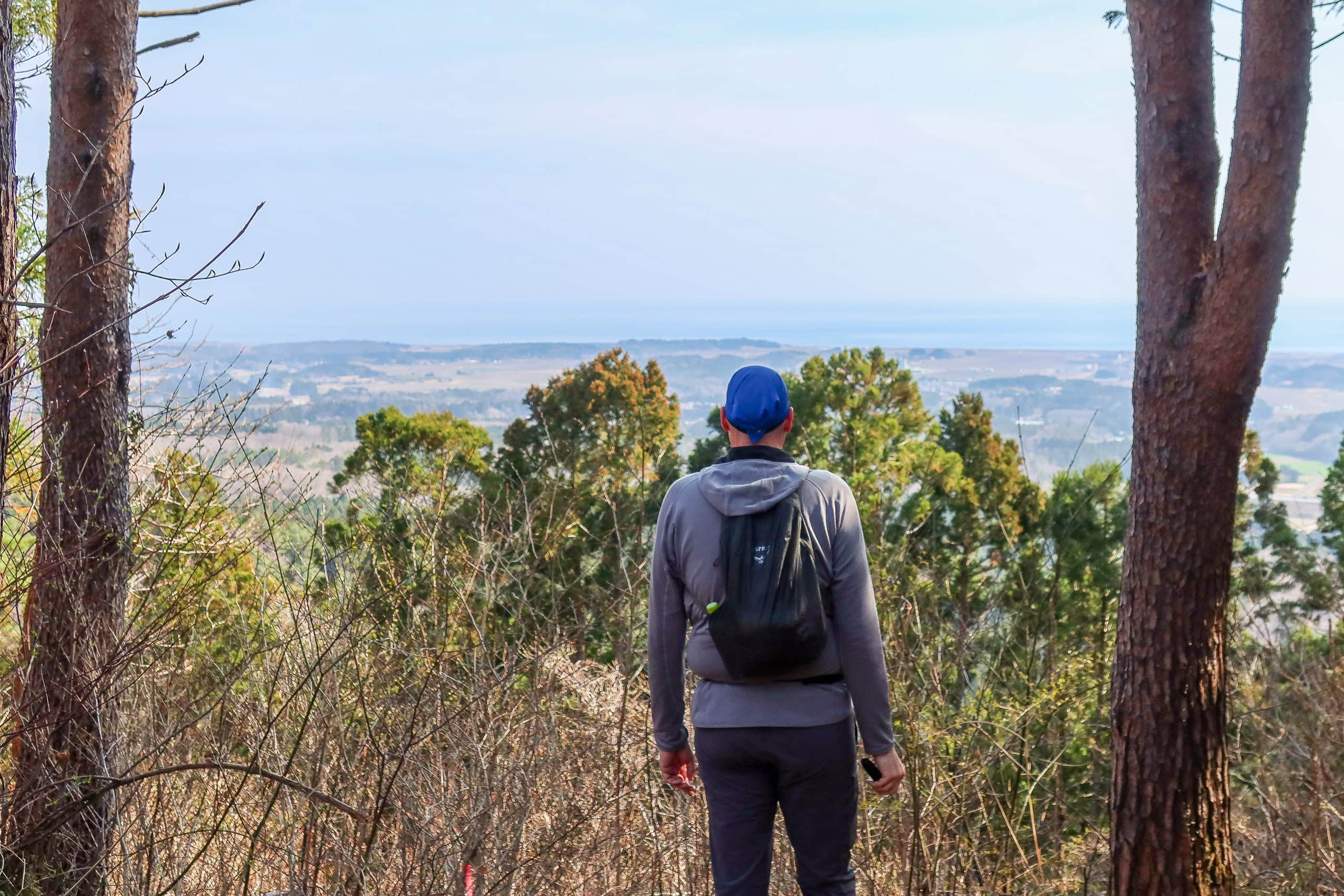
After the viewpoint, we entered the area of bare trees. Through the branches and twigs, we could see the ridgelines of the surrounding mountains.
As trails above here were more exposed, they seemed to have a good amount of snow in winter. Some corners of the trail had signs indicating alternate “safer” paths in case of thick or frozen slippery snow.
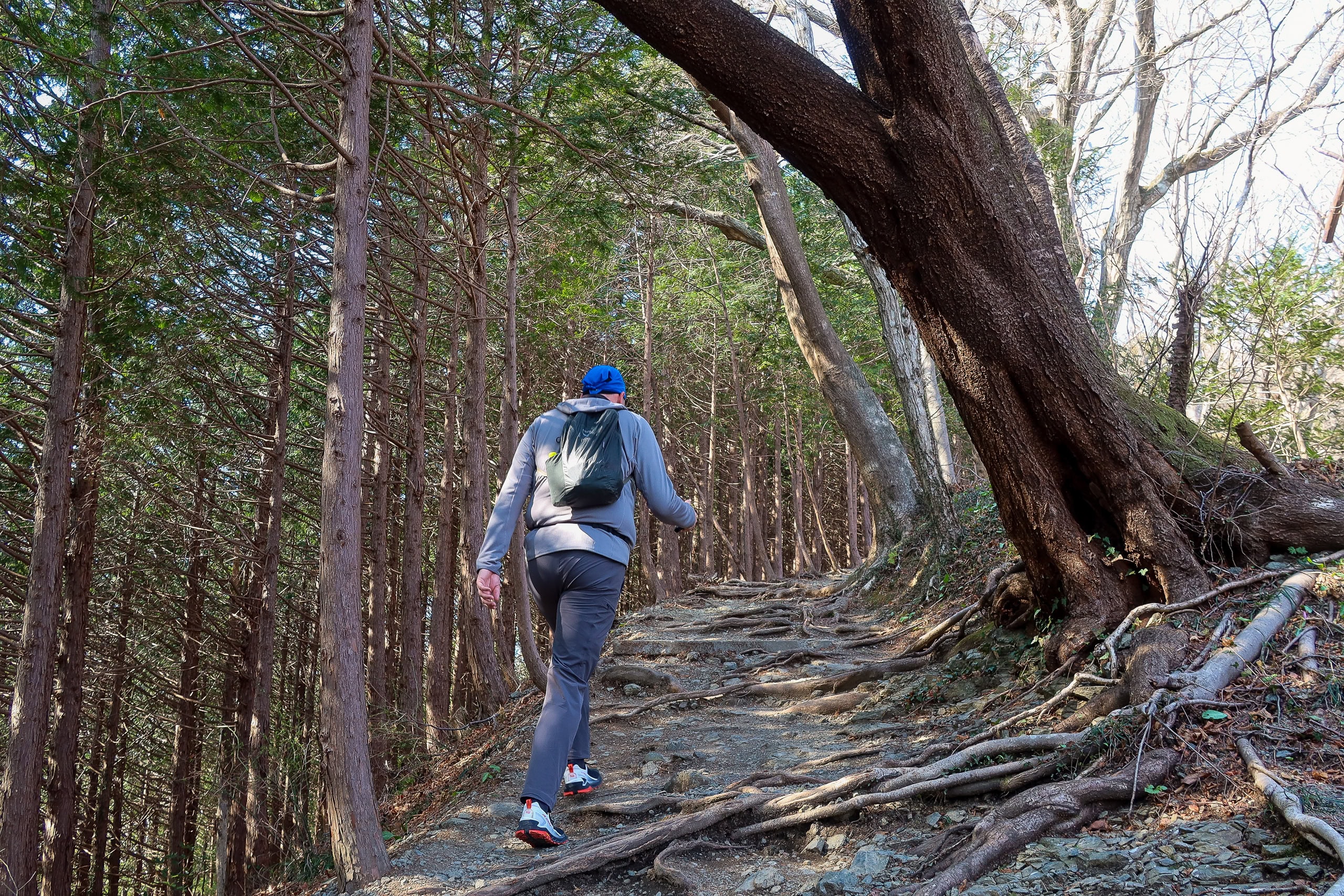
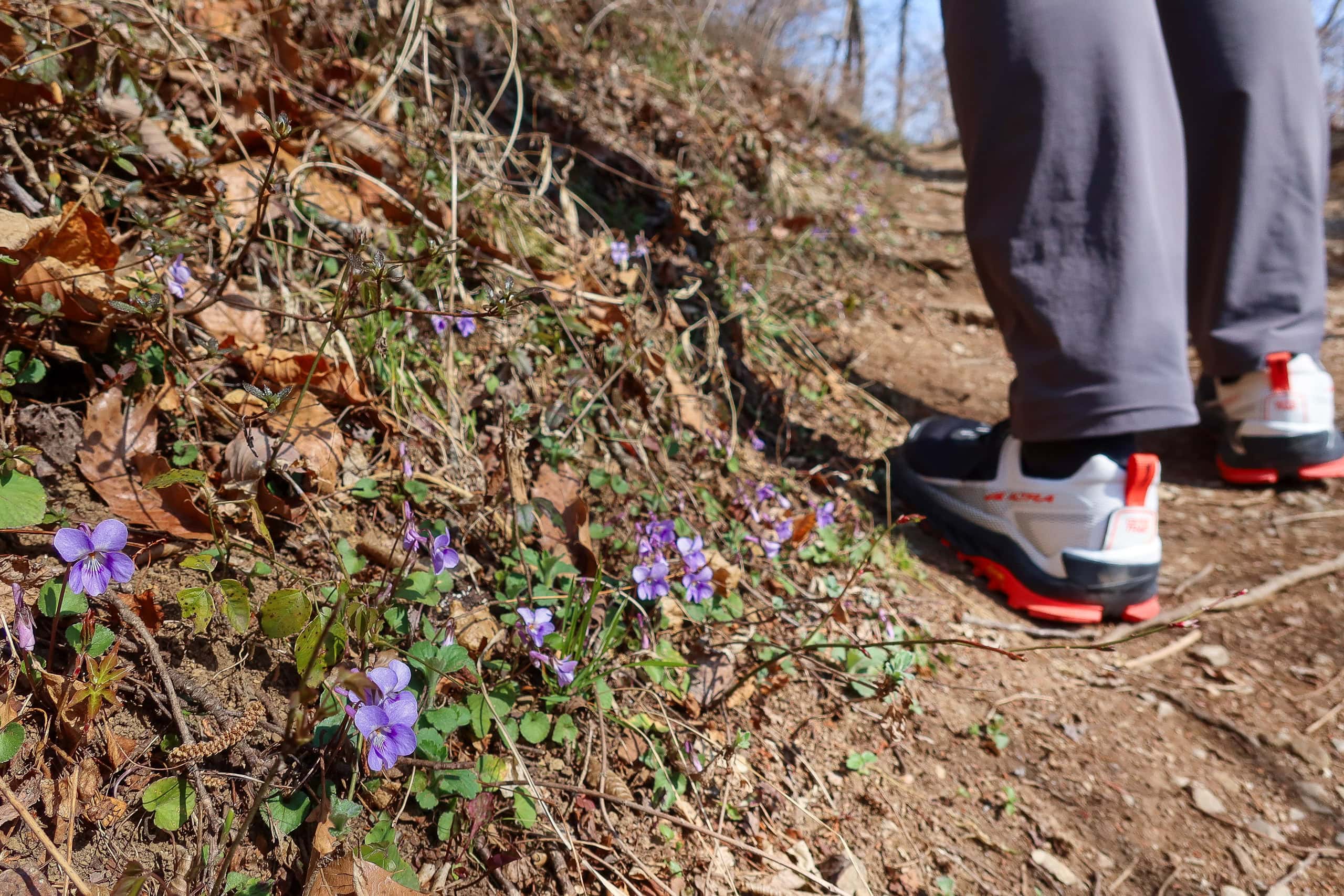
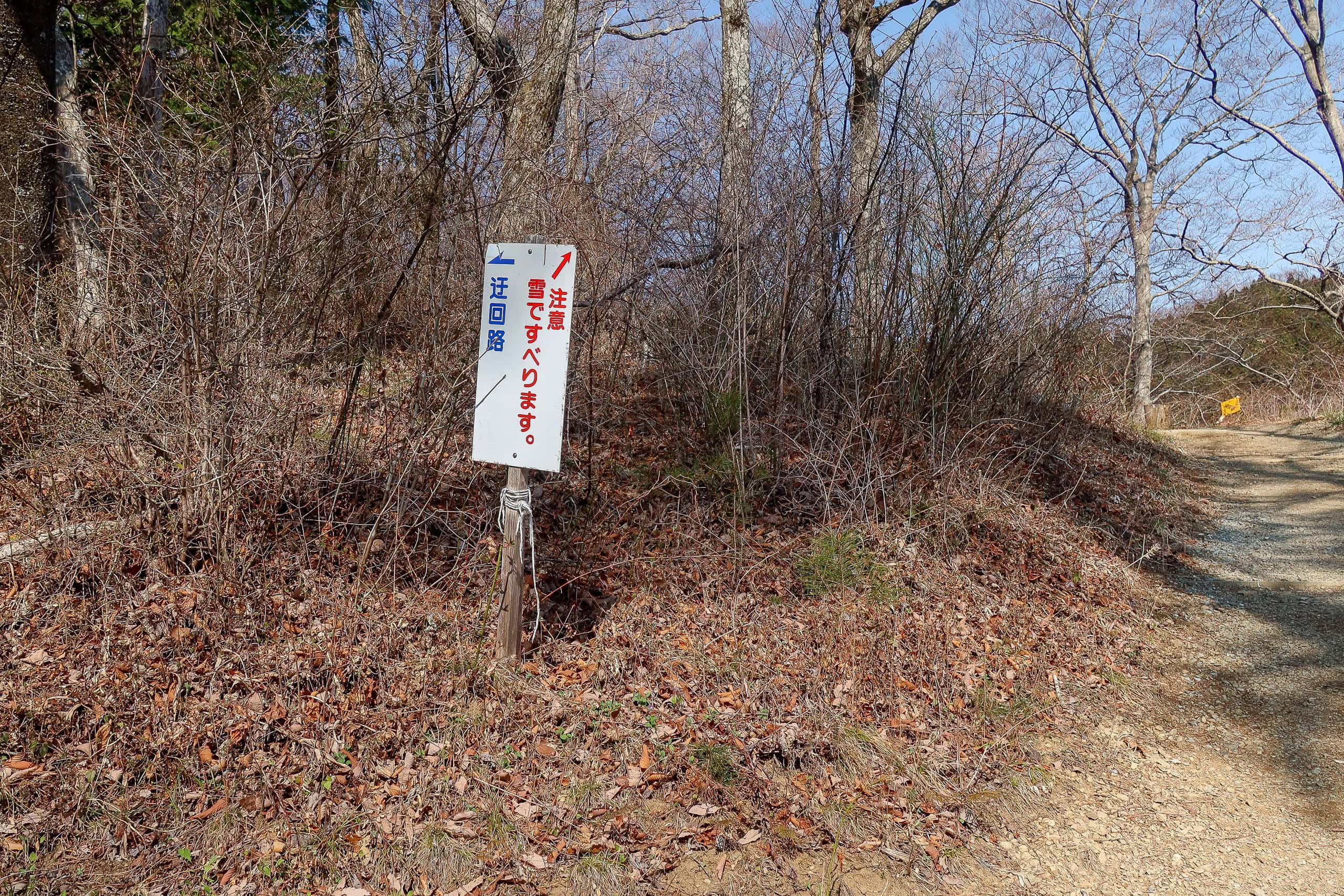
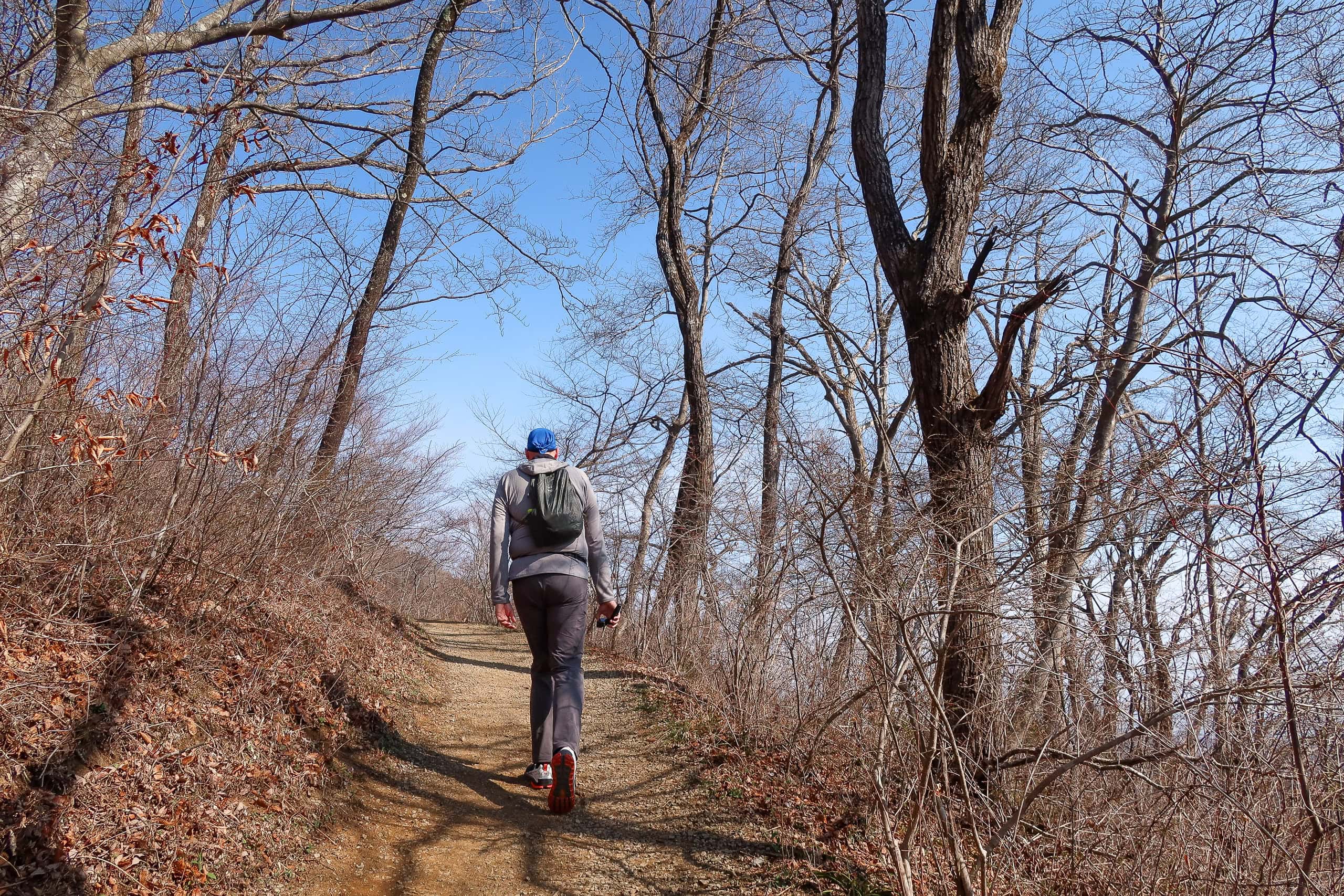
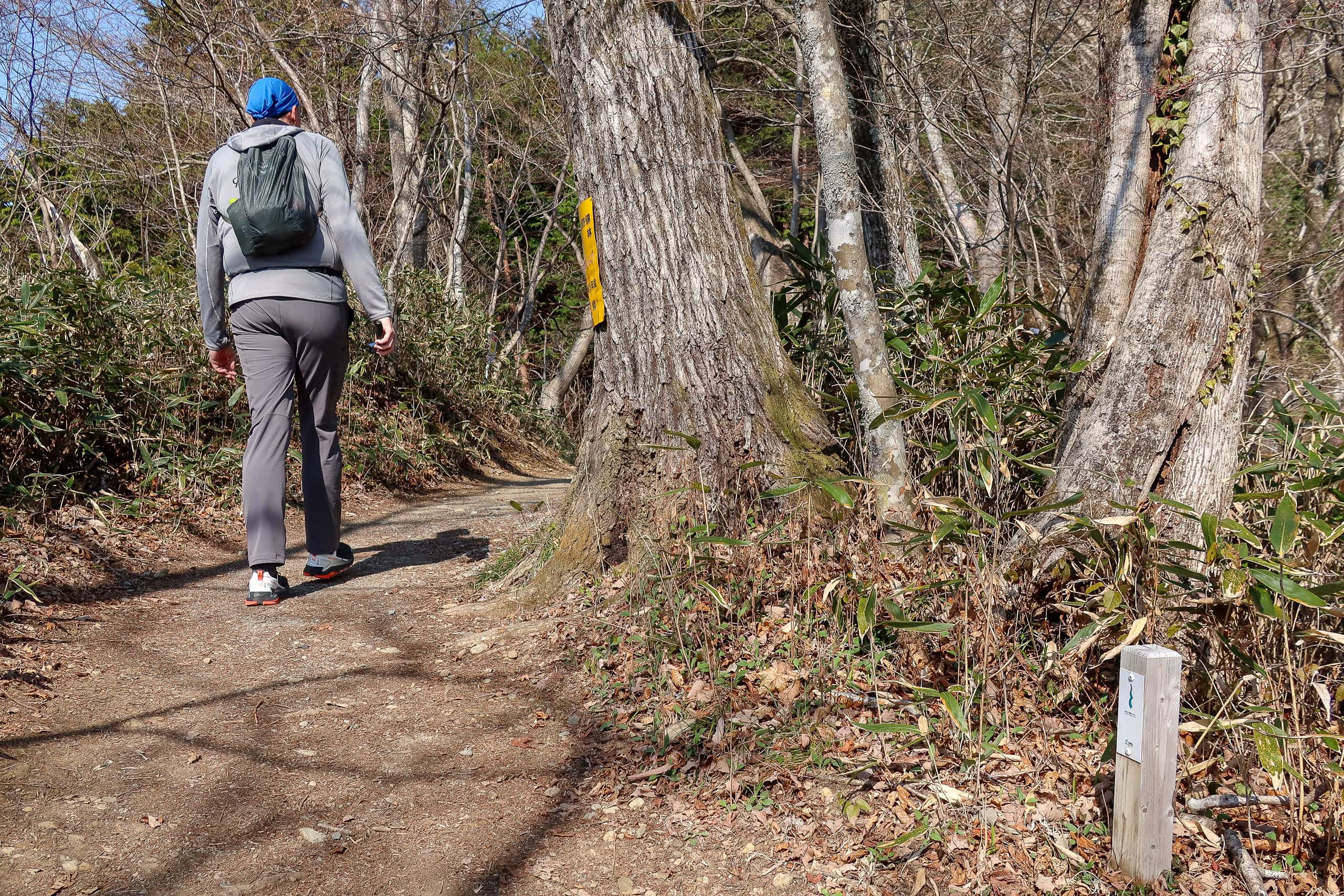
As we were on the flatter ridgeline, approaching the last ascent to the mountaintop, an elderly hiker who looked no younger than 80 years old walked down toward us. The style of his clothes and gear caught our eyes, making us think he might have been a time-traveling mountaineer from the good old days. He continued his firm steps and nodded to us in a dignified manner as he passed us.
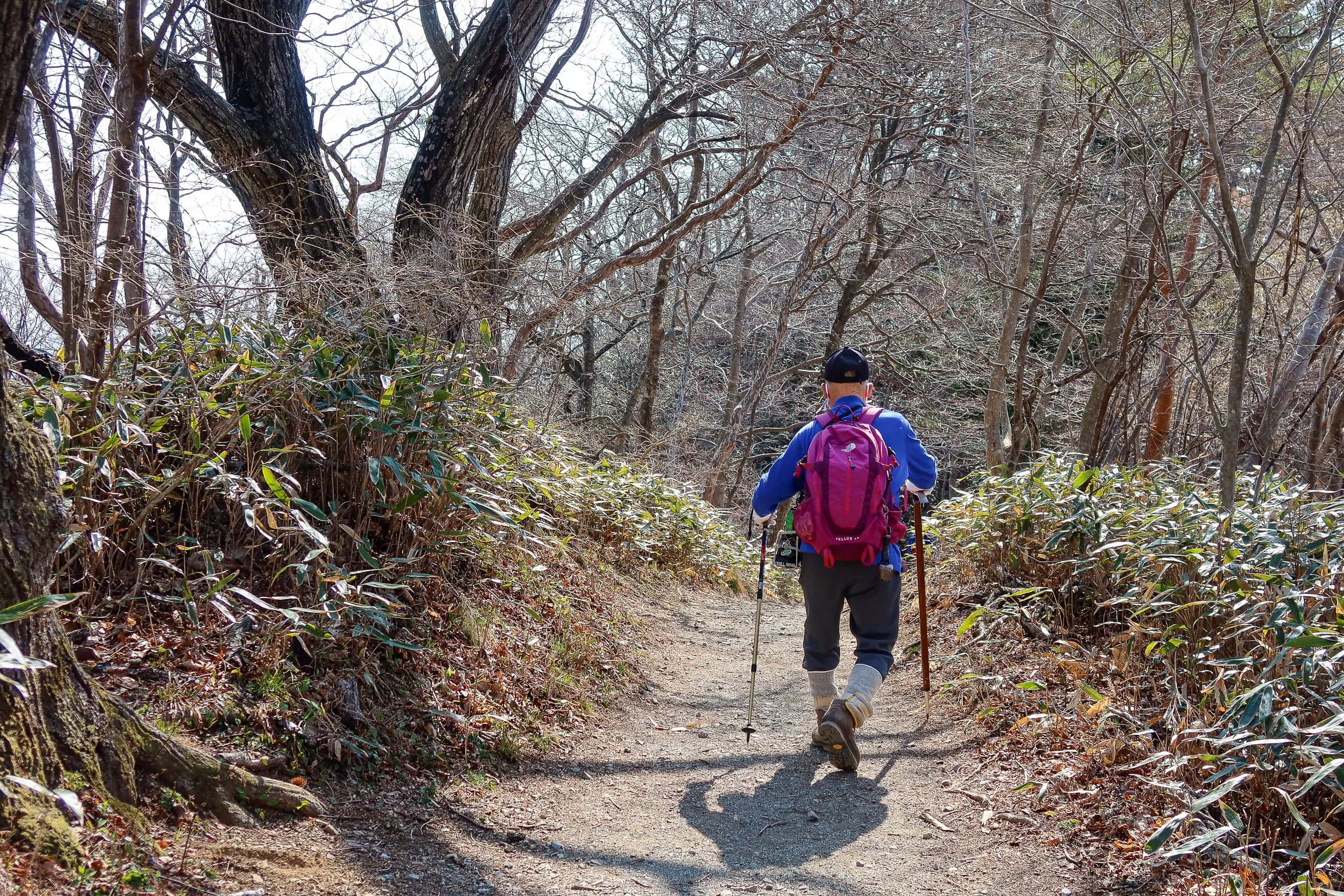
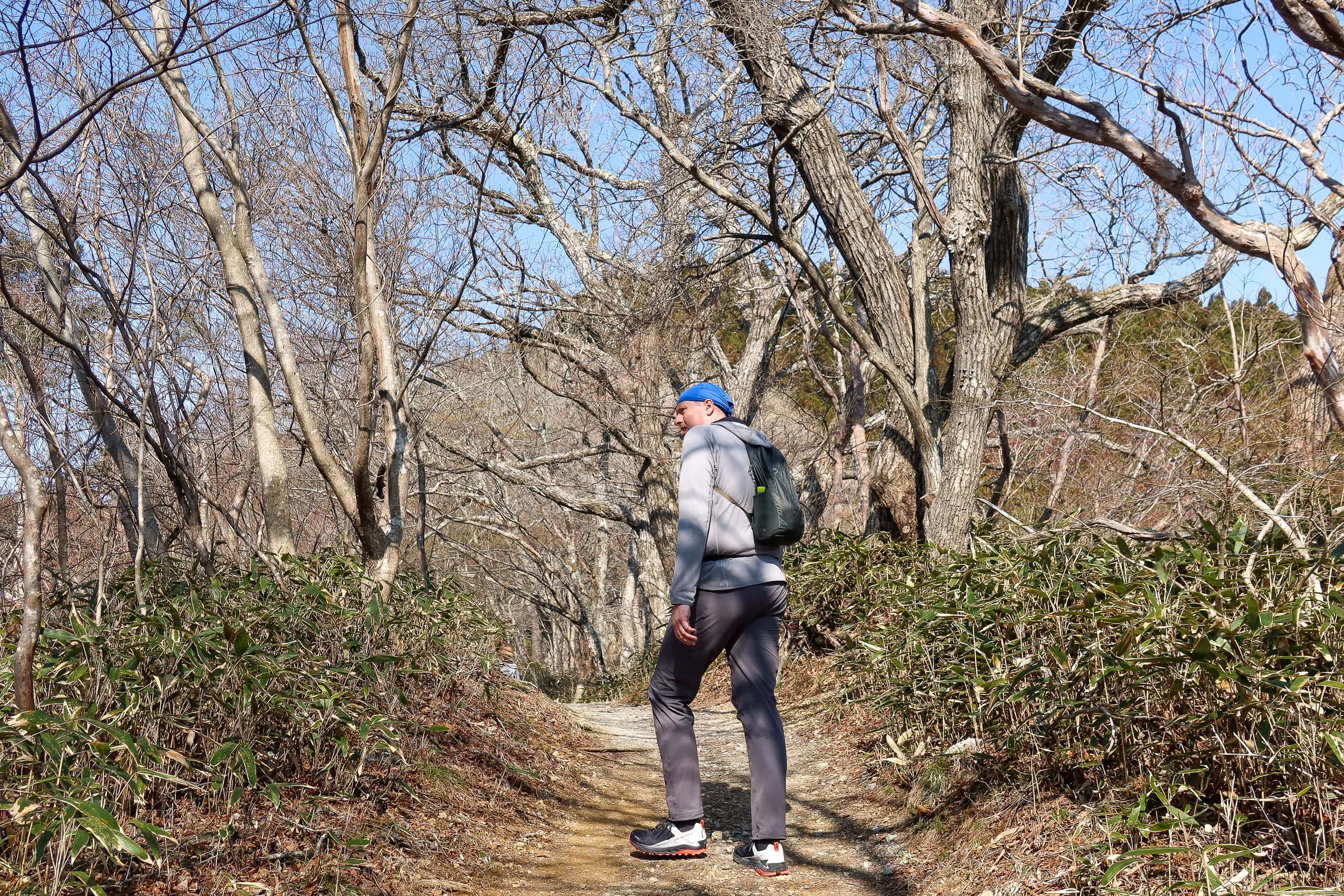
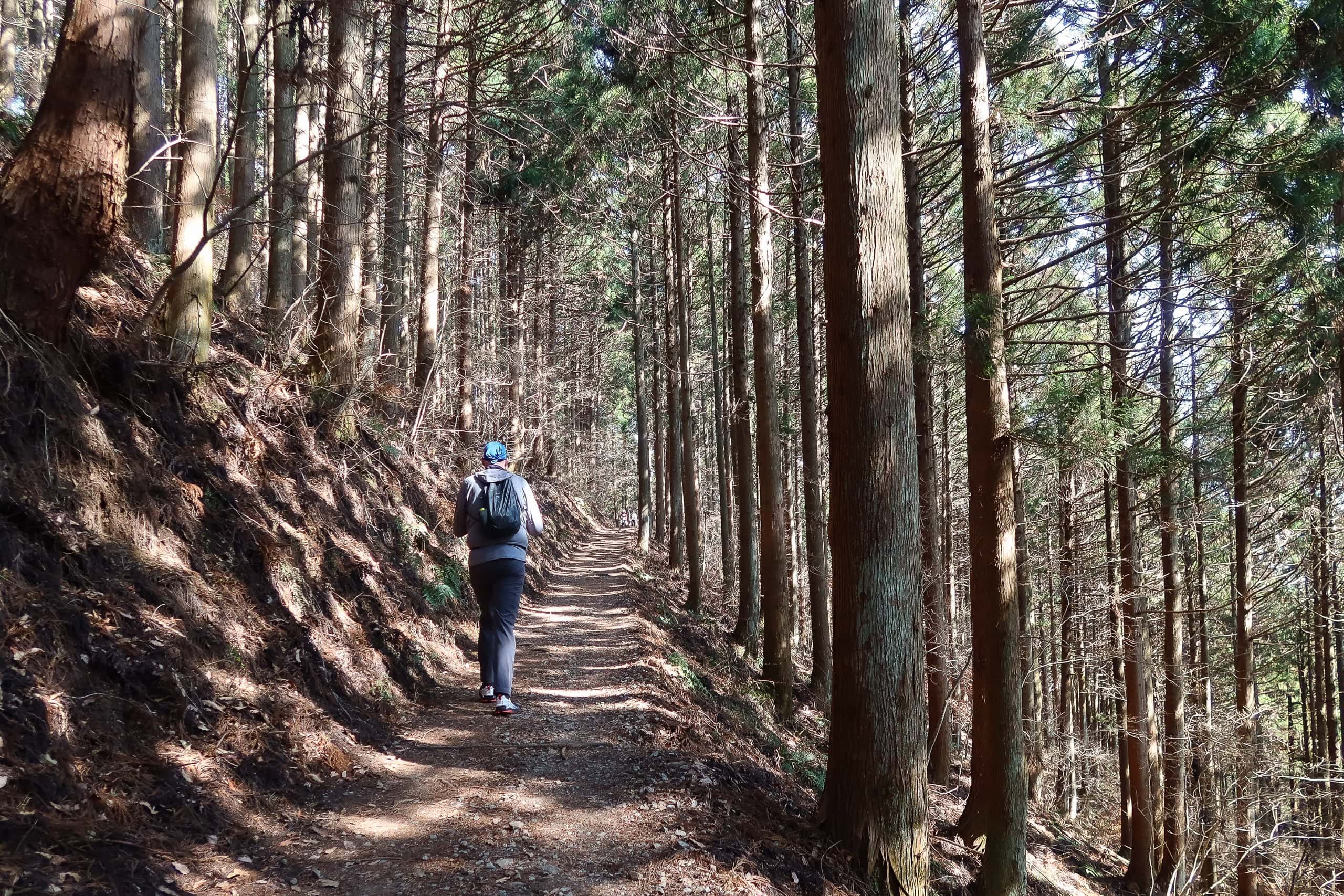

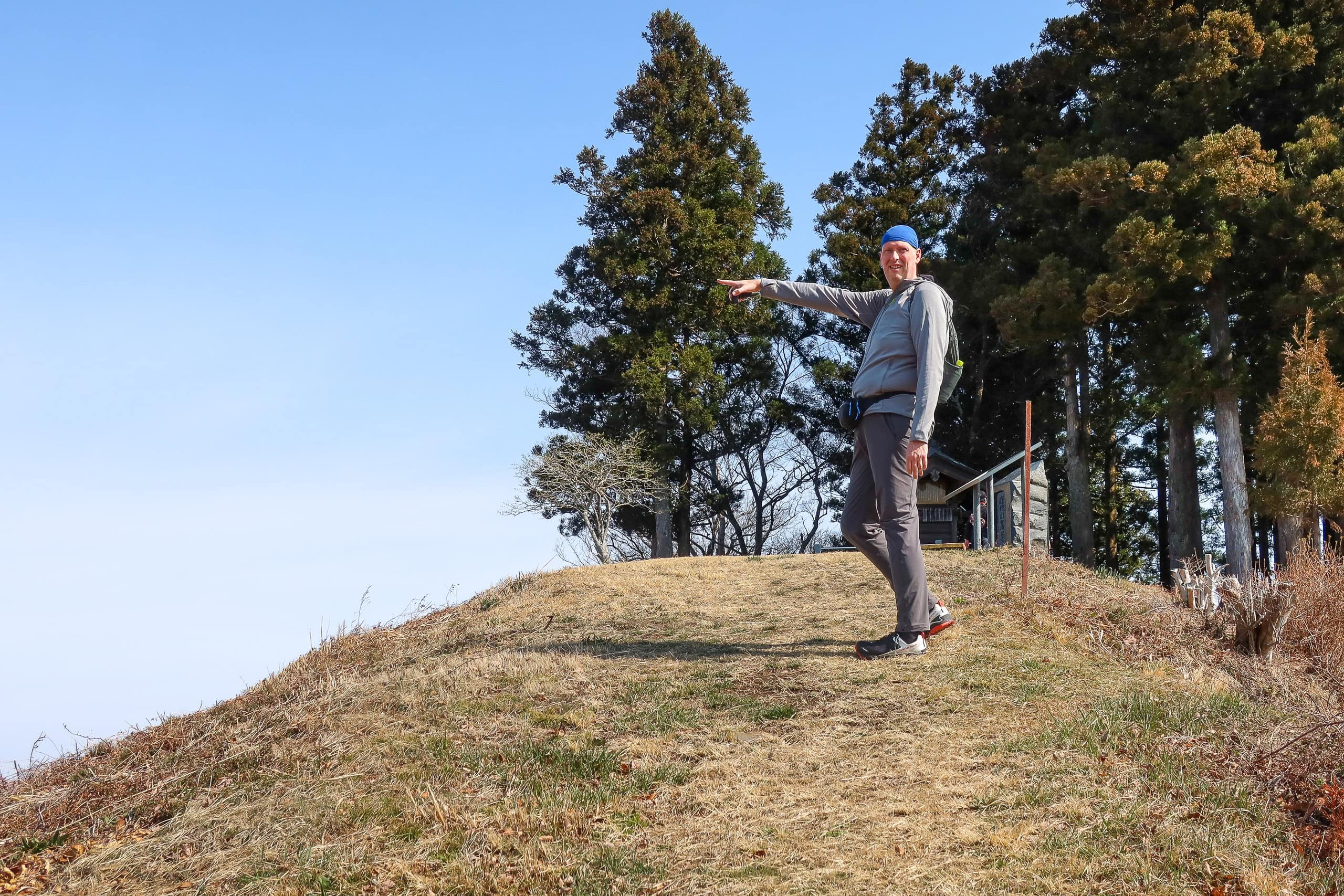
At the altitude of 430m, Mr. Karou’s top was 360 degrees open, nothing interrupting the panoramic view from there.
The west side of the mountain, which we could not have seen from the mid-viewpoint, was now clearly visible: another layer of lower mountains and flat farmlands. Beyond them, we saw significantly higher, still completely snow-covered white ridges.
We checked our iPhones’ Google Maps app to figure out which mountain they were. The highest ridge was Mt. Zao 蔵王, and the others should have been Azuma Mountain Range 吾妻連峰.
It was surreal to see the same mountains we had visited only three months ago from here, at the top of Mt. Karou. We went to those snowy mountains for New Year’s vacation to see the famous snow monster forests from the gondola and to enjoy my first-ever snowshoe hike through the silent snow forests around the beautiful five-colored lakes.
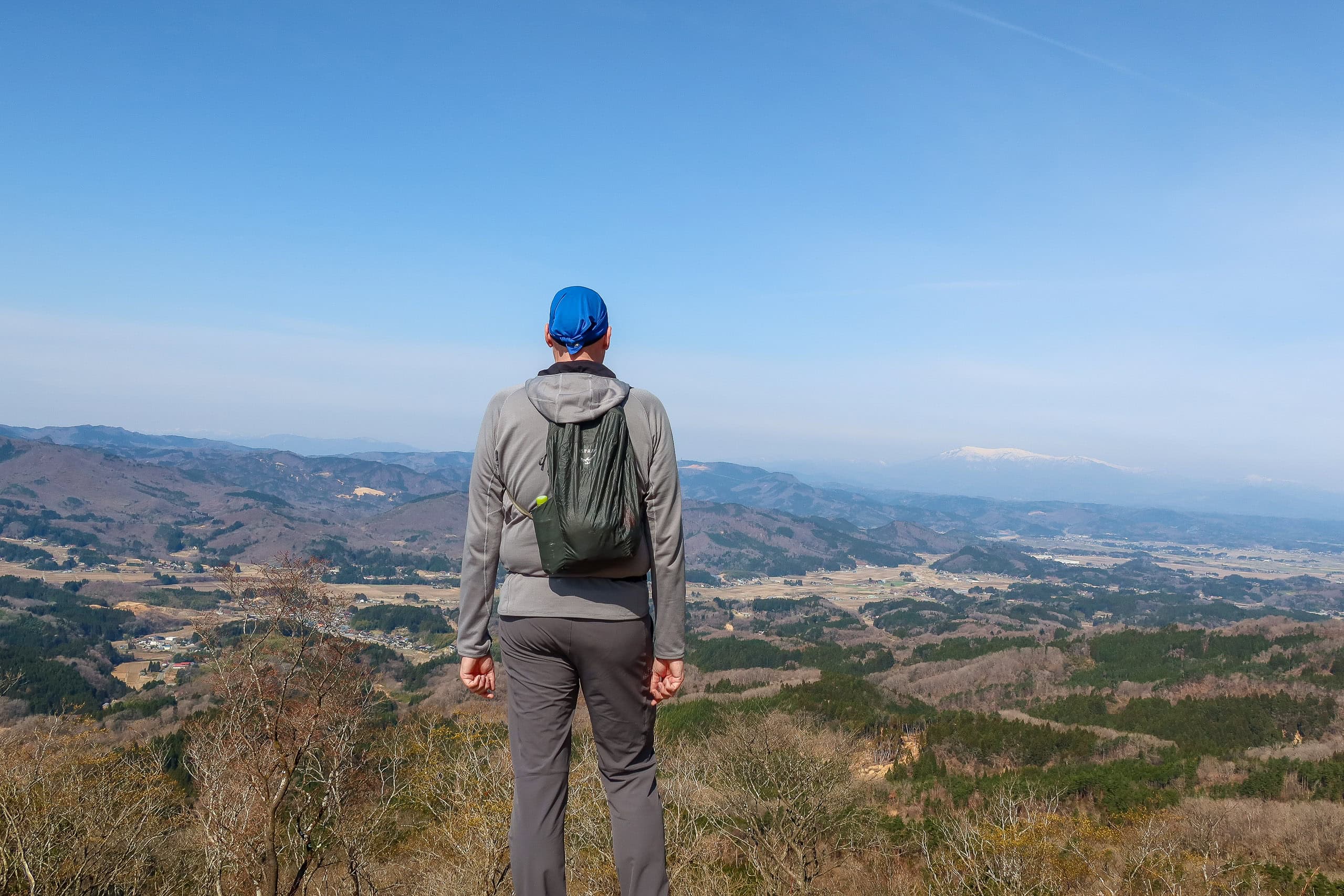
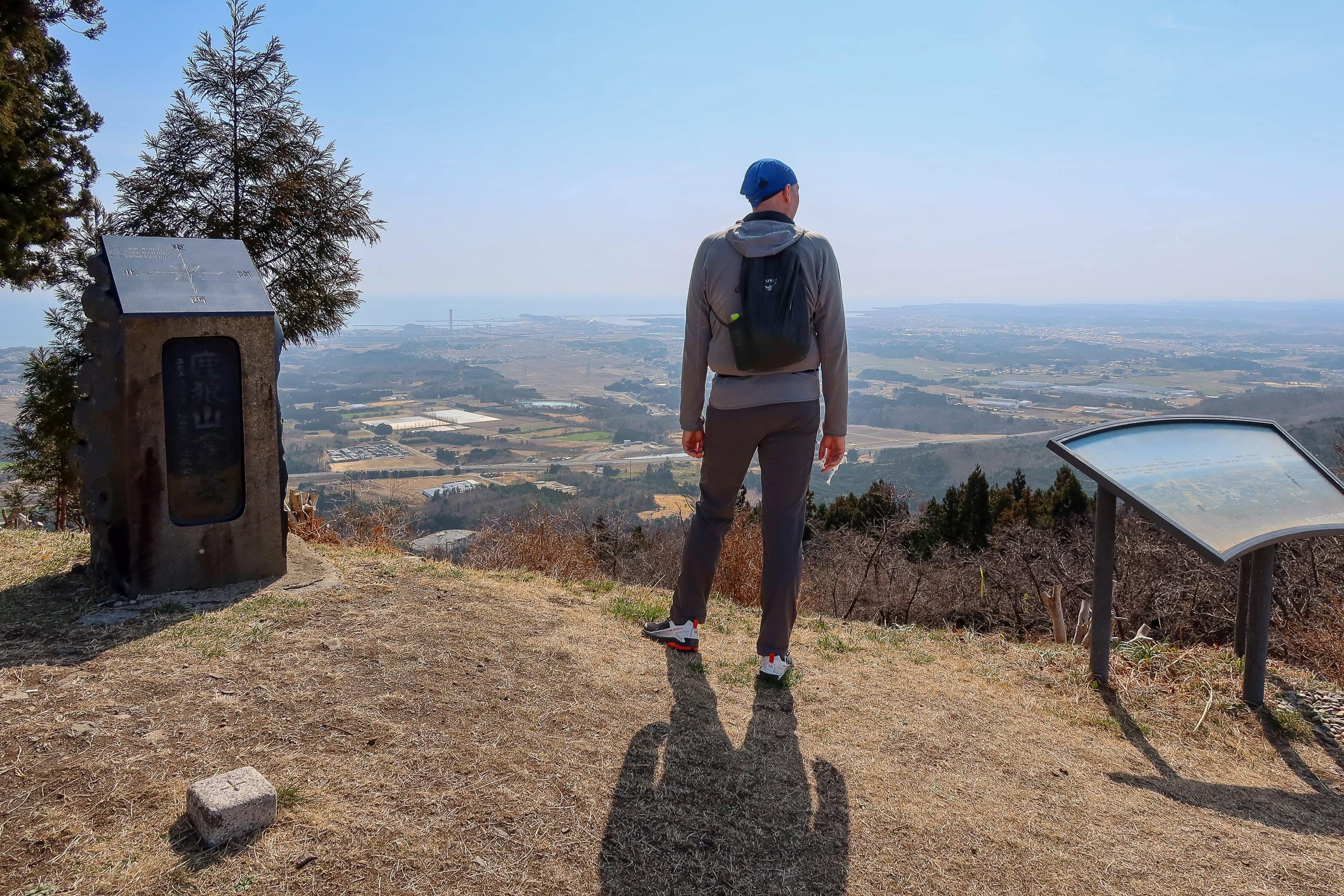
We took time to thoroughly enjoy the panoramic view. We also visited the mountaintop shrines for Mt.Karou’s god and read the information board there. A couple of picnic tables and a roofed shelter with benches were available, so a few groups sat there and enjoyed their morning tea.
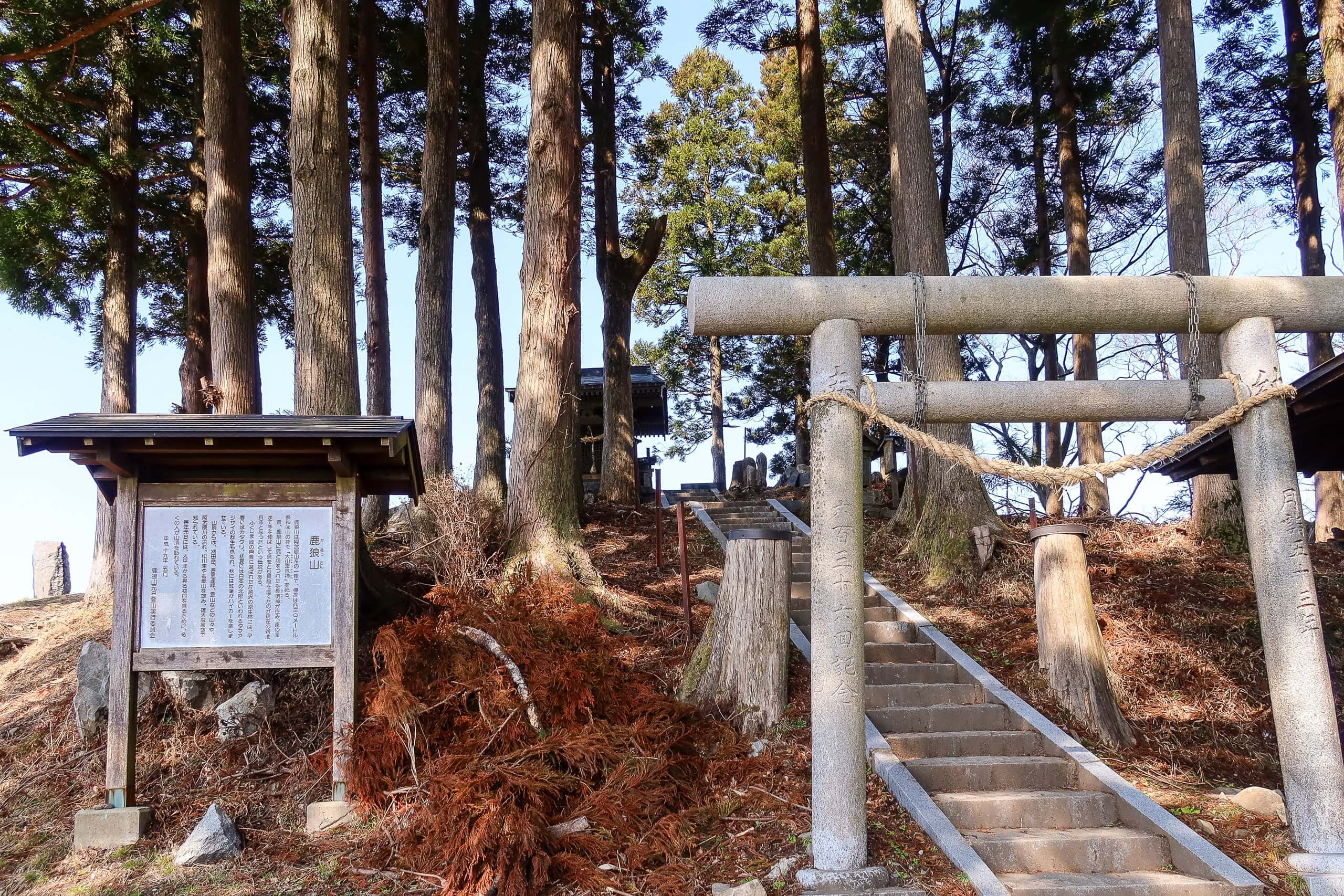
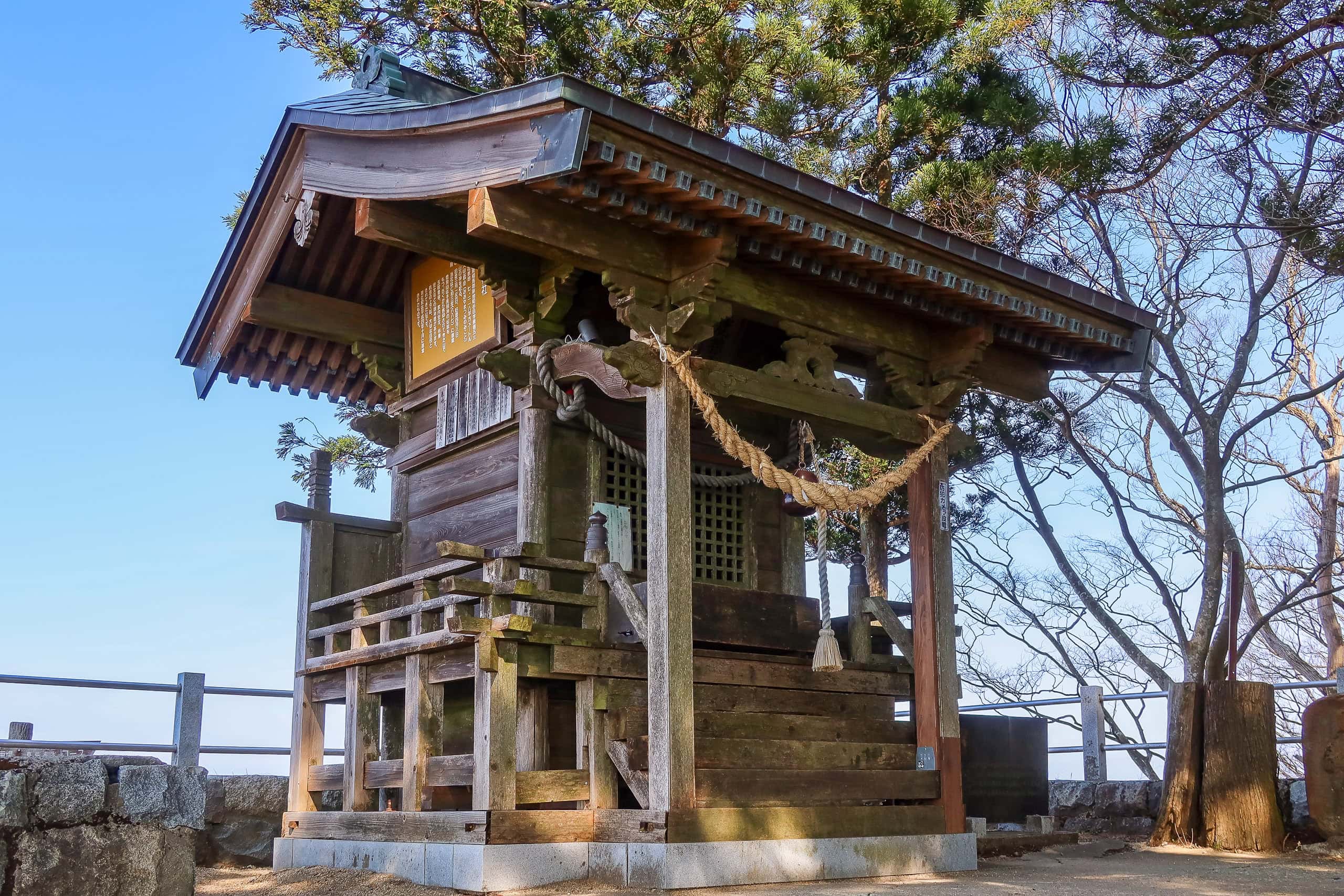
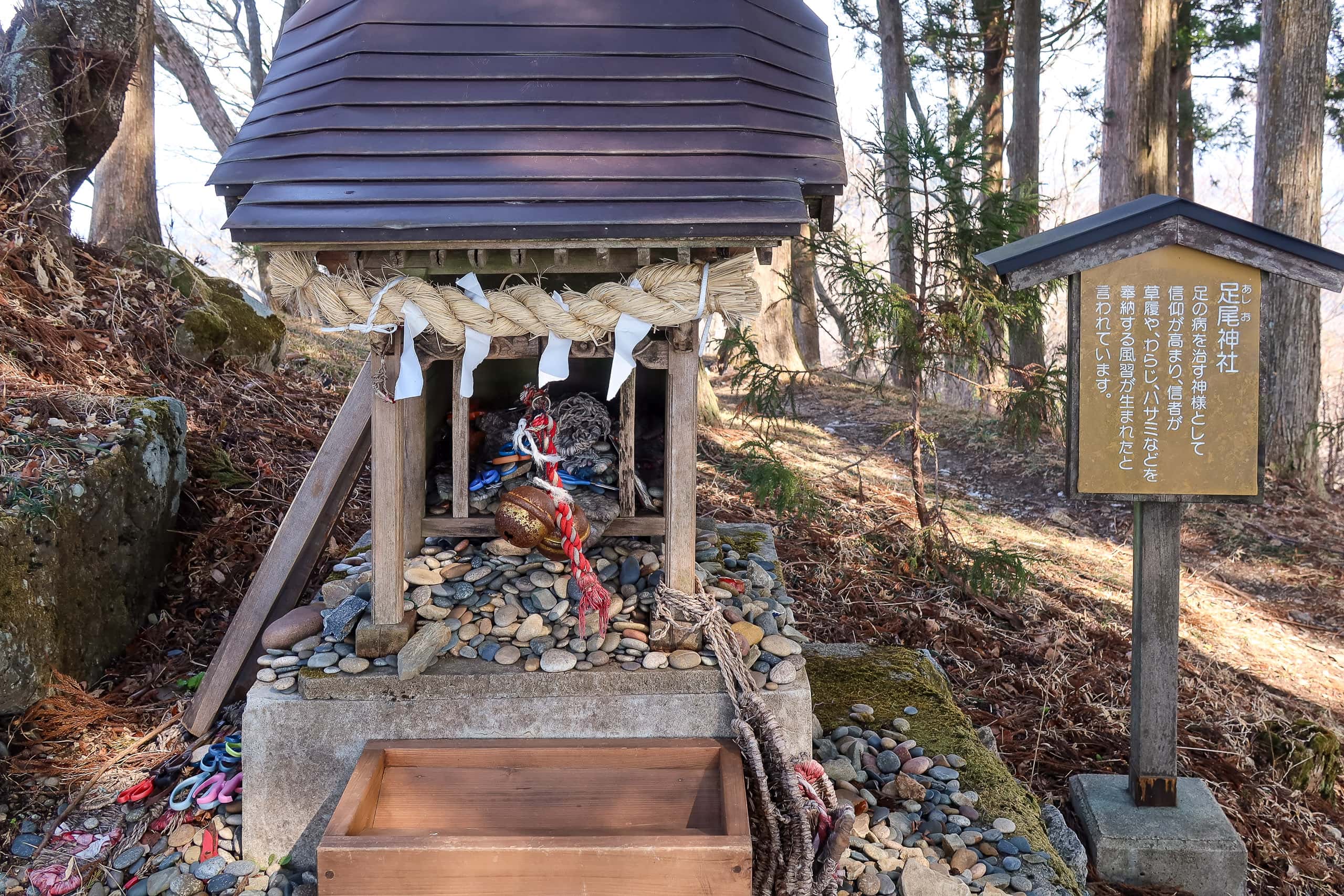
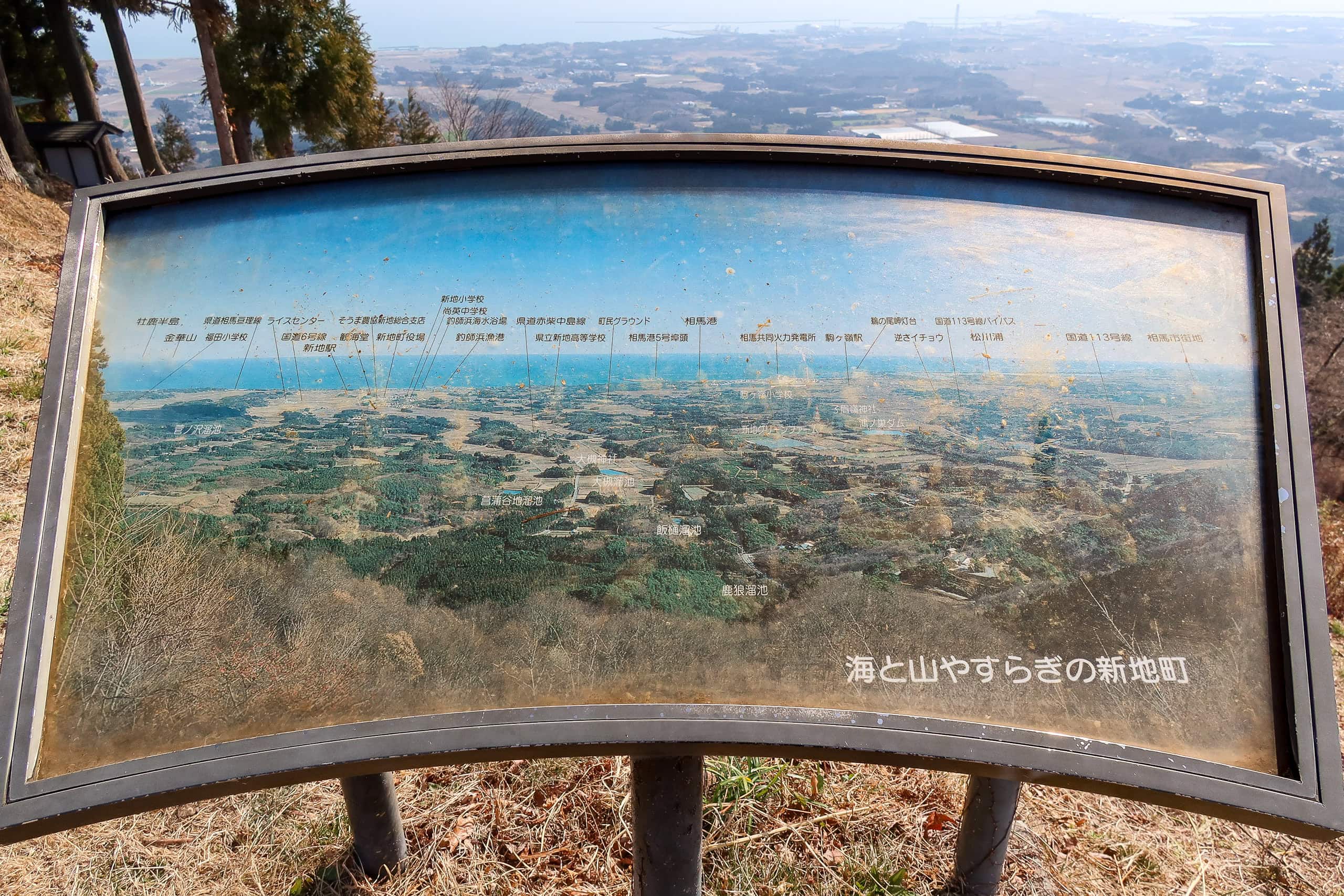
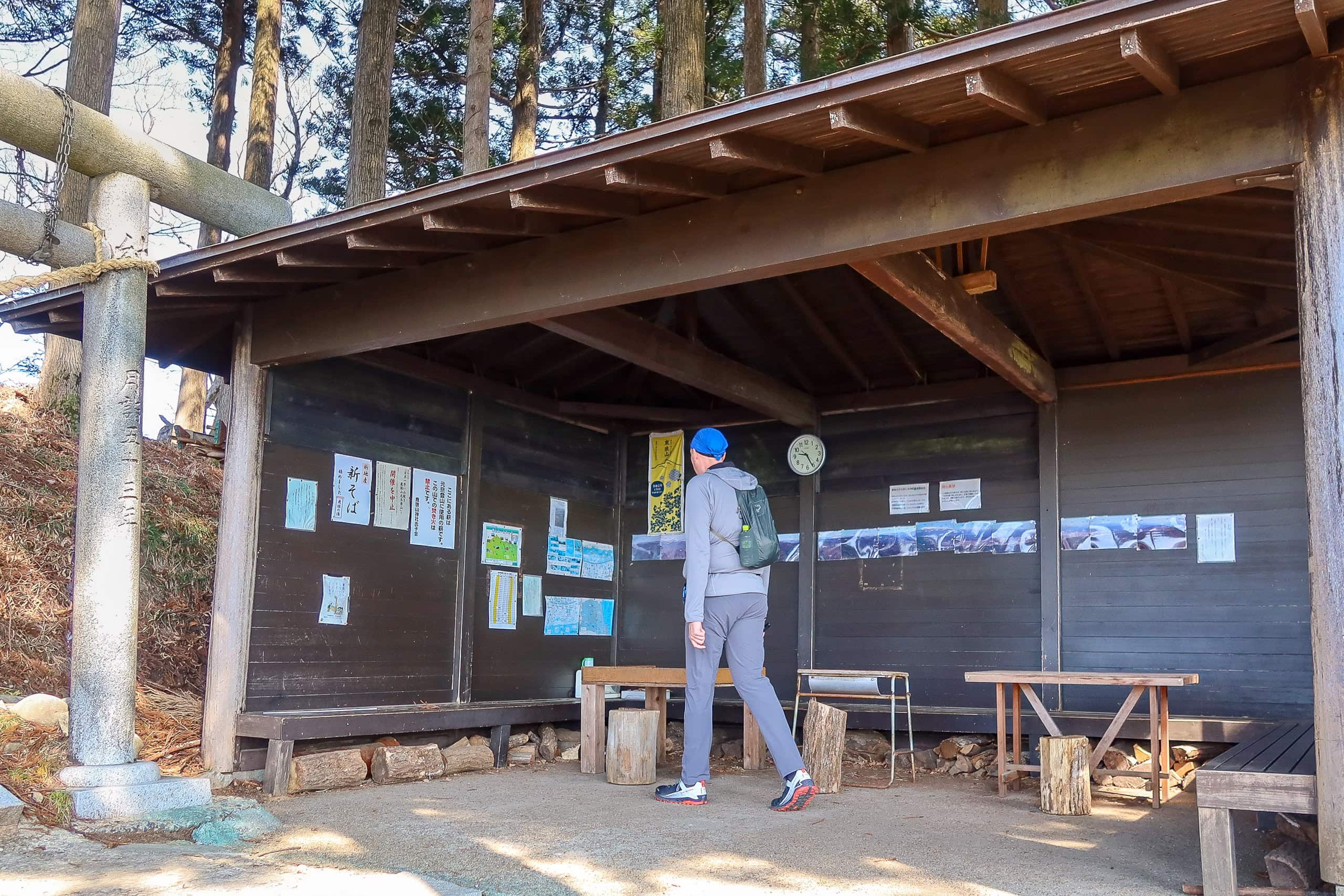
We had to keep going. The part from the trailhead to the top was actually only one-third of the mountain trail we had to cover today. Even after the mountain trail part, we would have to walk four to five times longer distances on flat land before we reached today’s goal point.
To follow the MCT route, we started walking north in the direction a mountaintop trail marker pointed to.
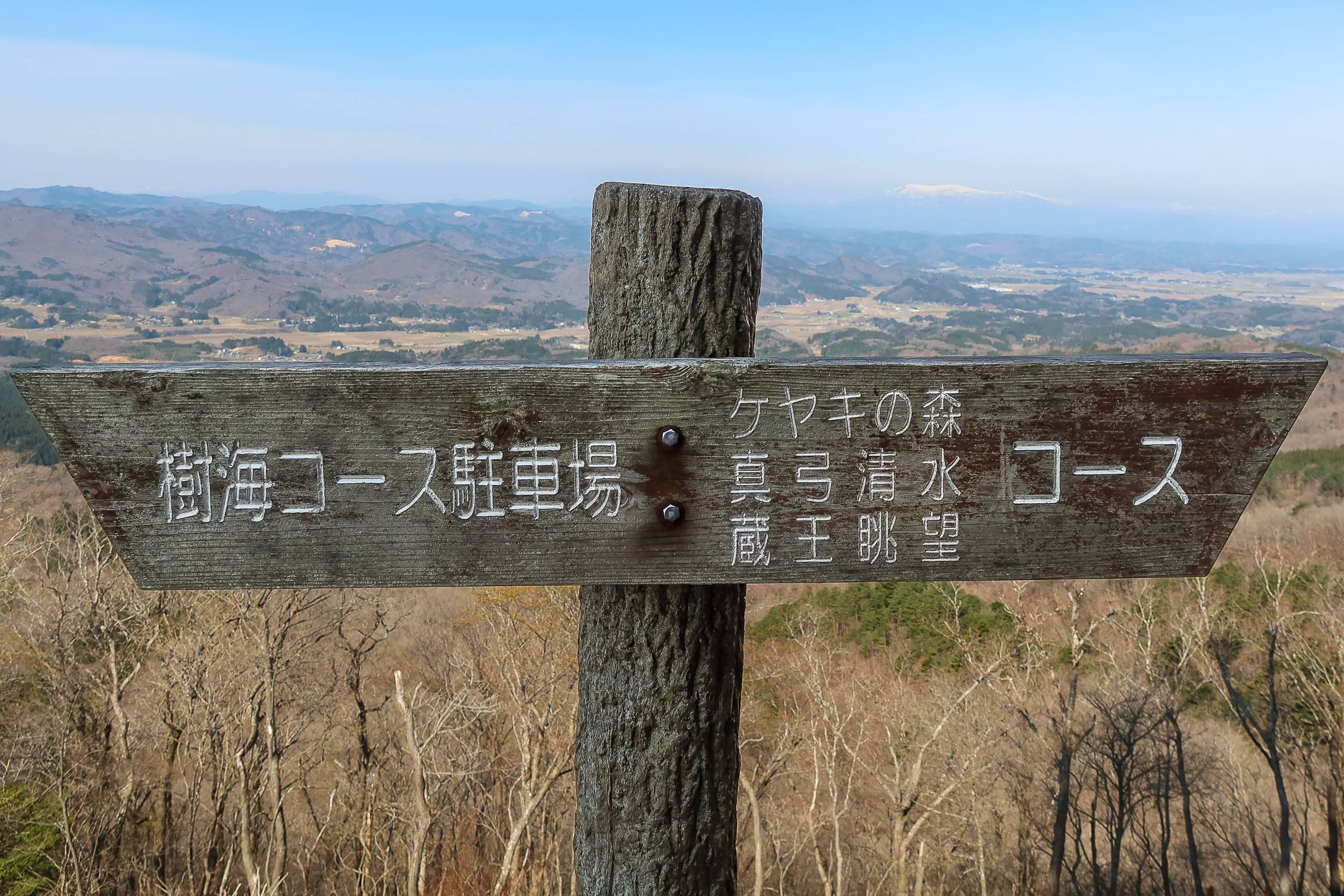
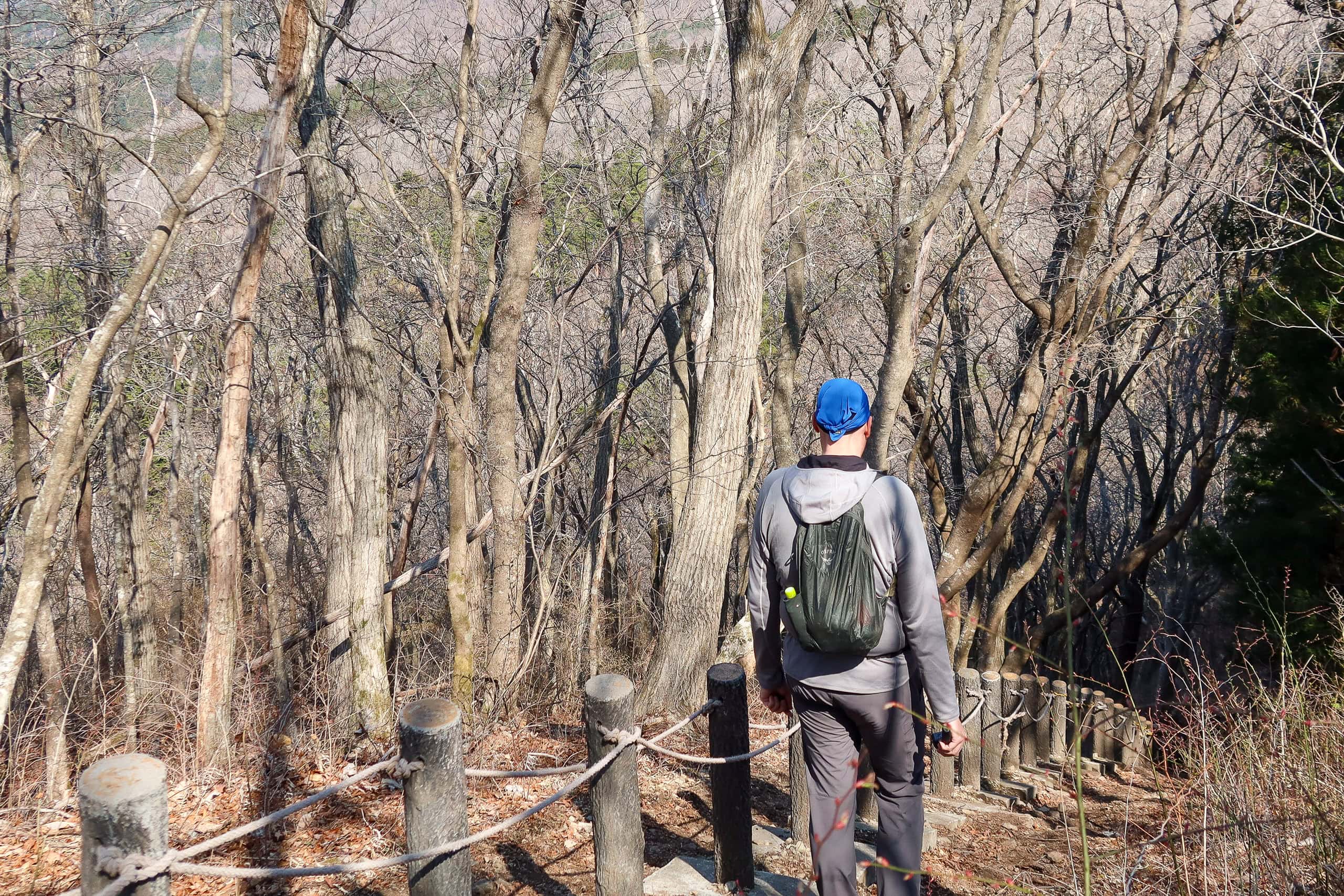
The path immediately dropped down. As the MCT official map book warned, we had to walk down an extremely steep slope. The gravel covering the earthen trail made it so slippery that I had to hug the rope tightly to avoid sliding down.
We now understood why most local hikers simply traced down the same family-friendly and all-age forest route they walked up, not coming this way to make a loop. This one definitely chose who can walk.
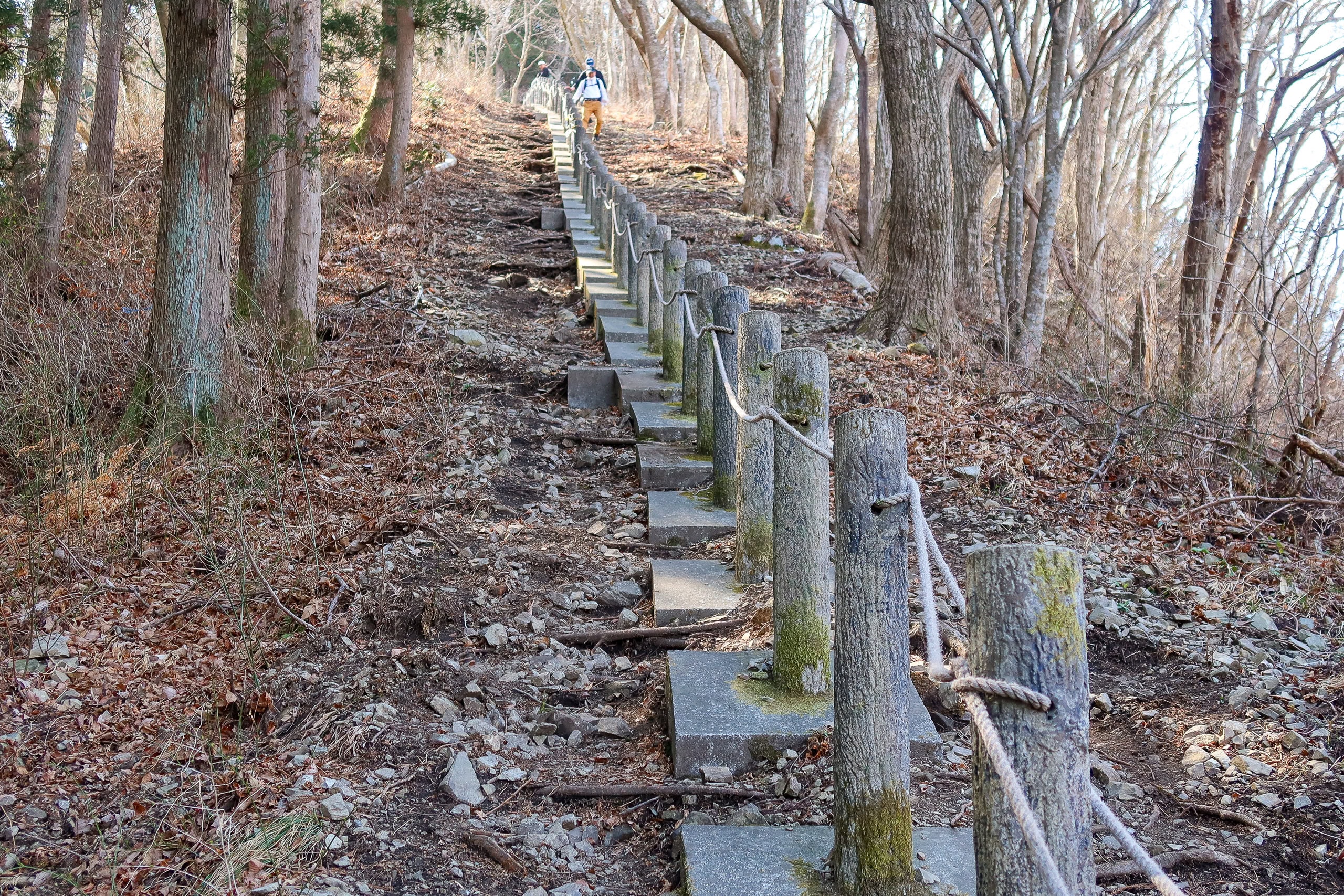
Thankfully, the steep part ended shorter than we were afraid, and the trail immediately became flatter on ridgelines.
The trail on this side was narrower, looked less beaten and continued through the woods without significant ups and downs. Though most parts remained just wide enough for us to walk side by side, both sides occasionally became steep drop-offs, keeping us from becoming too off-guard.
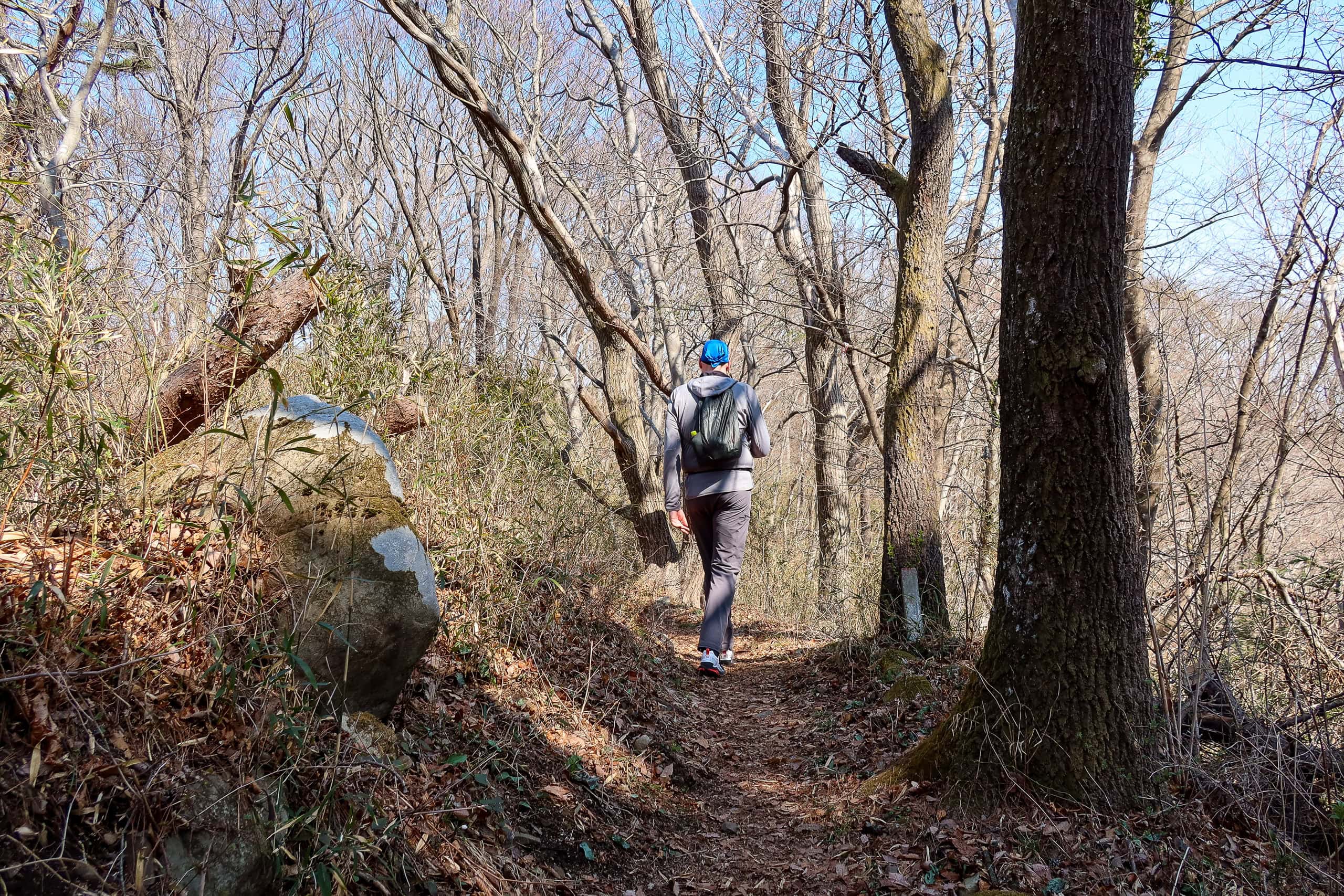
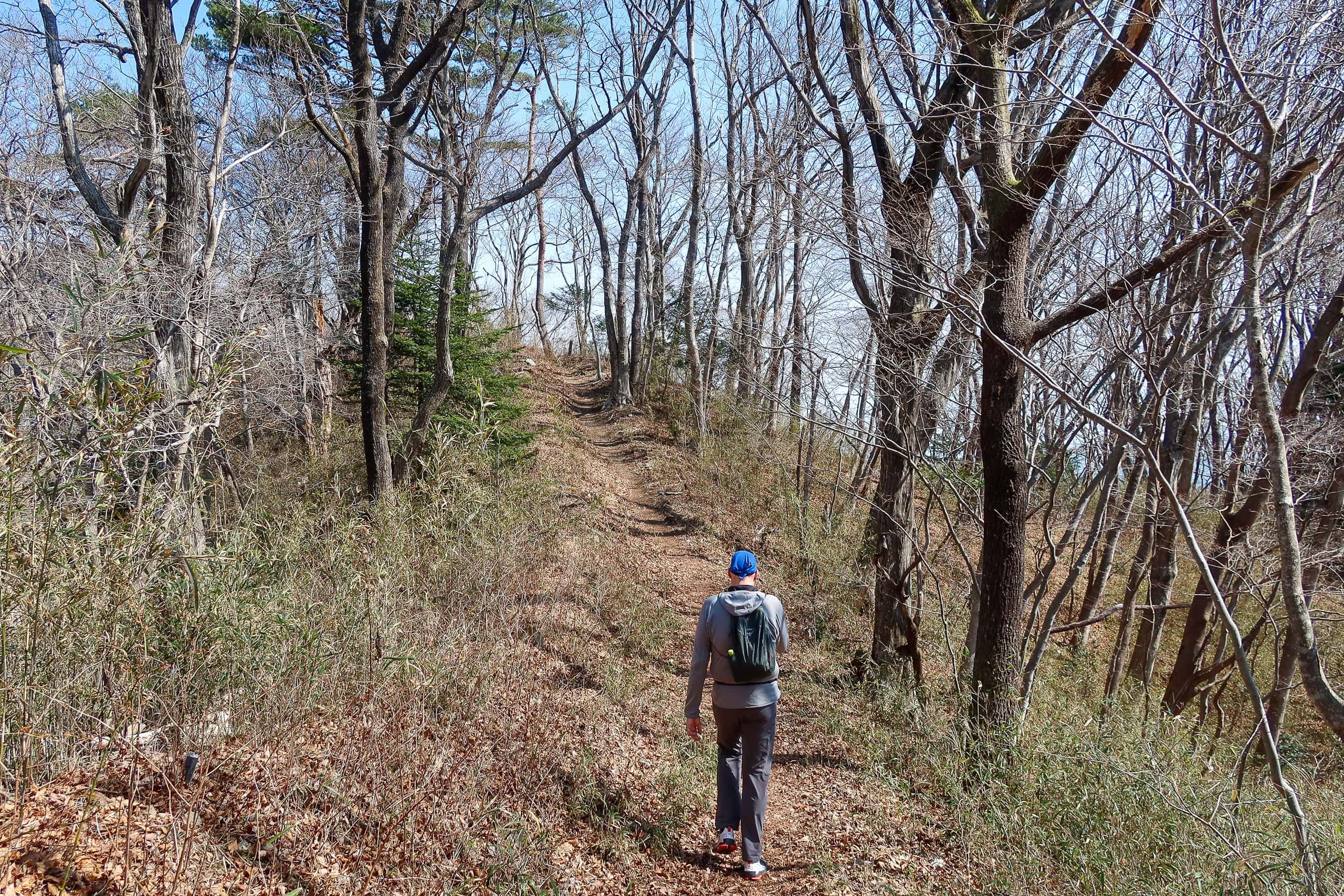
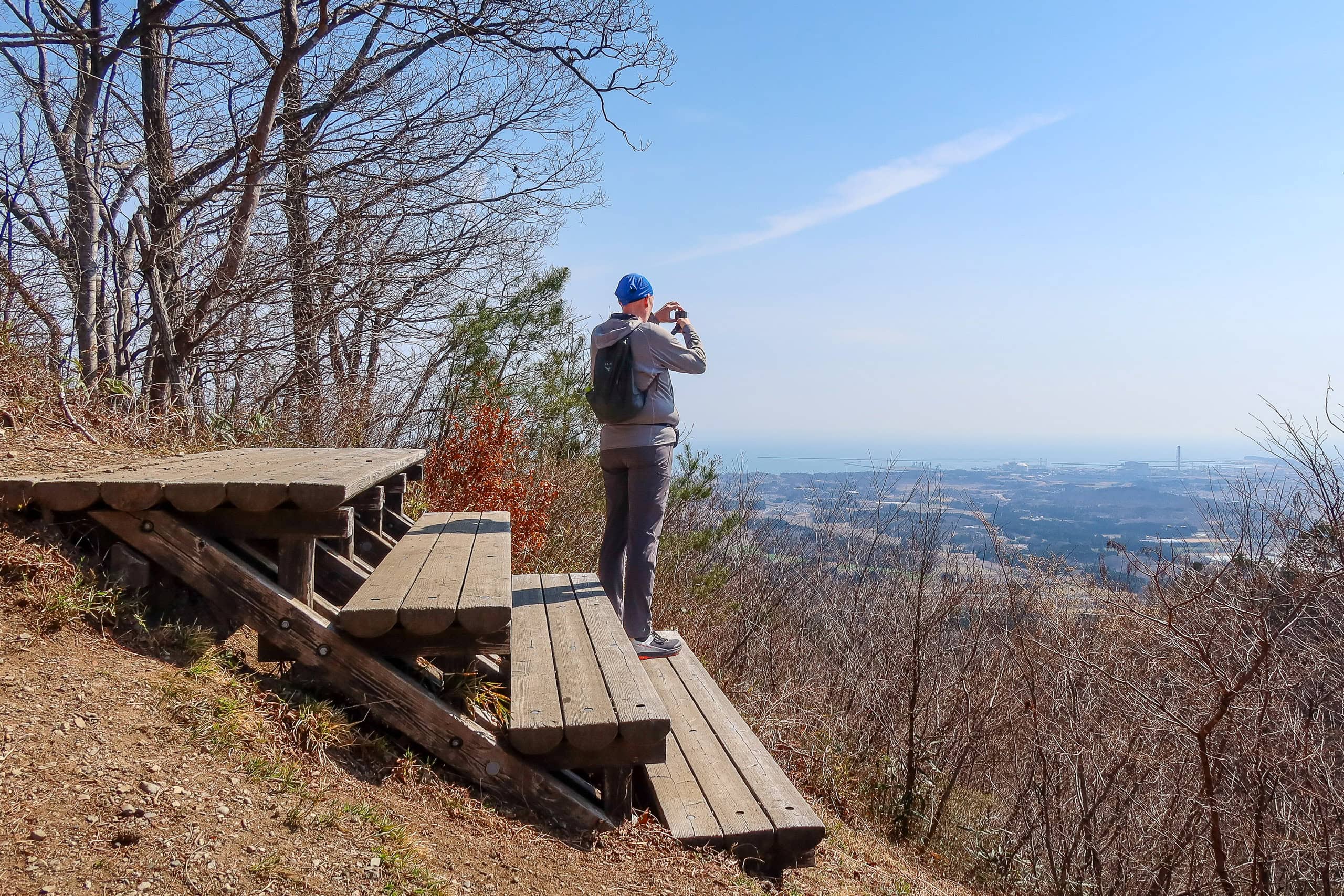
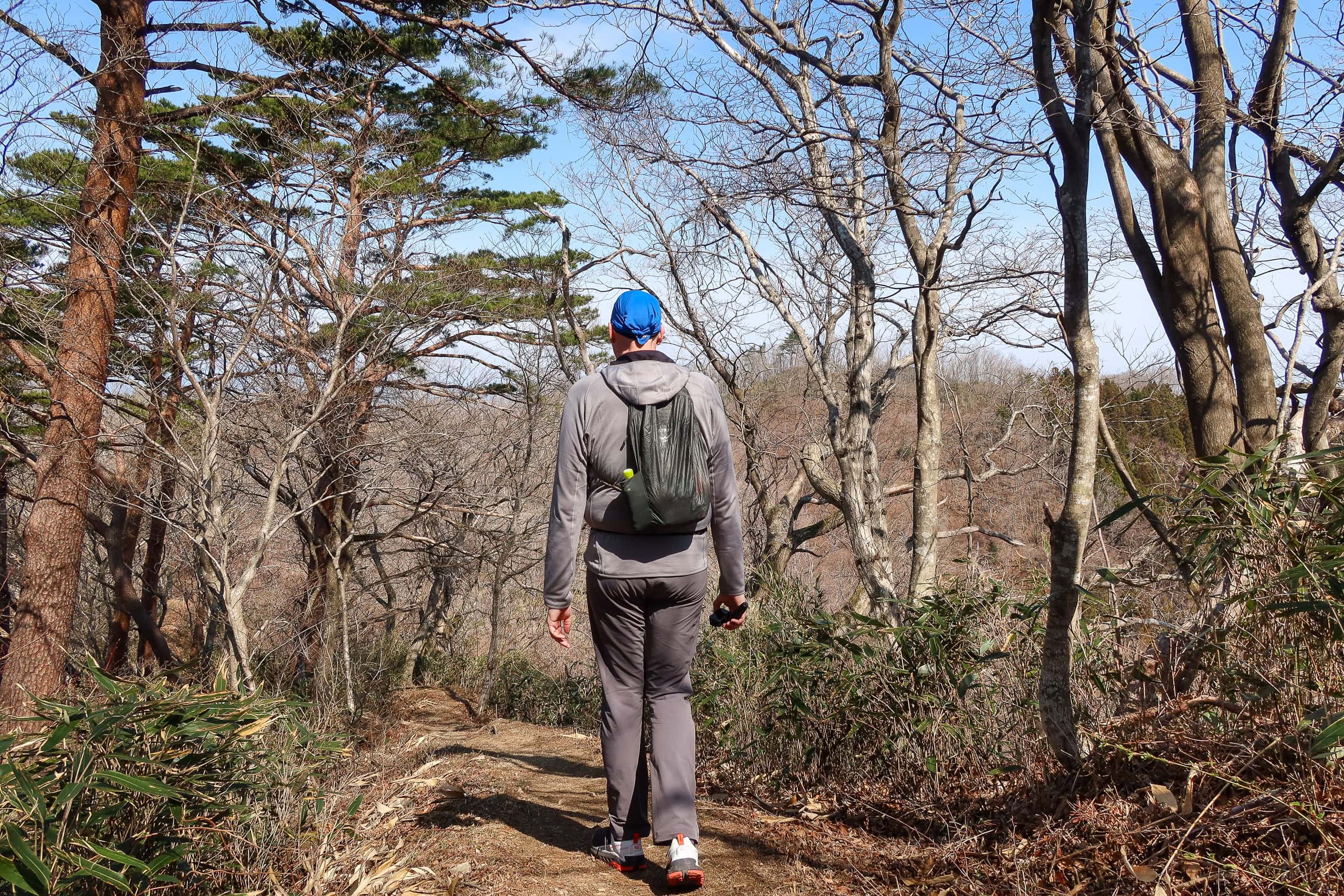
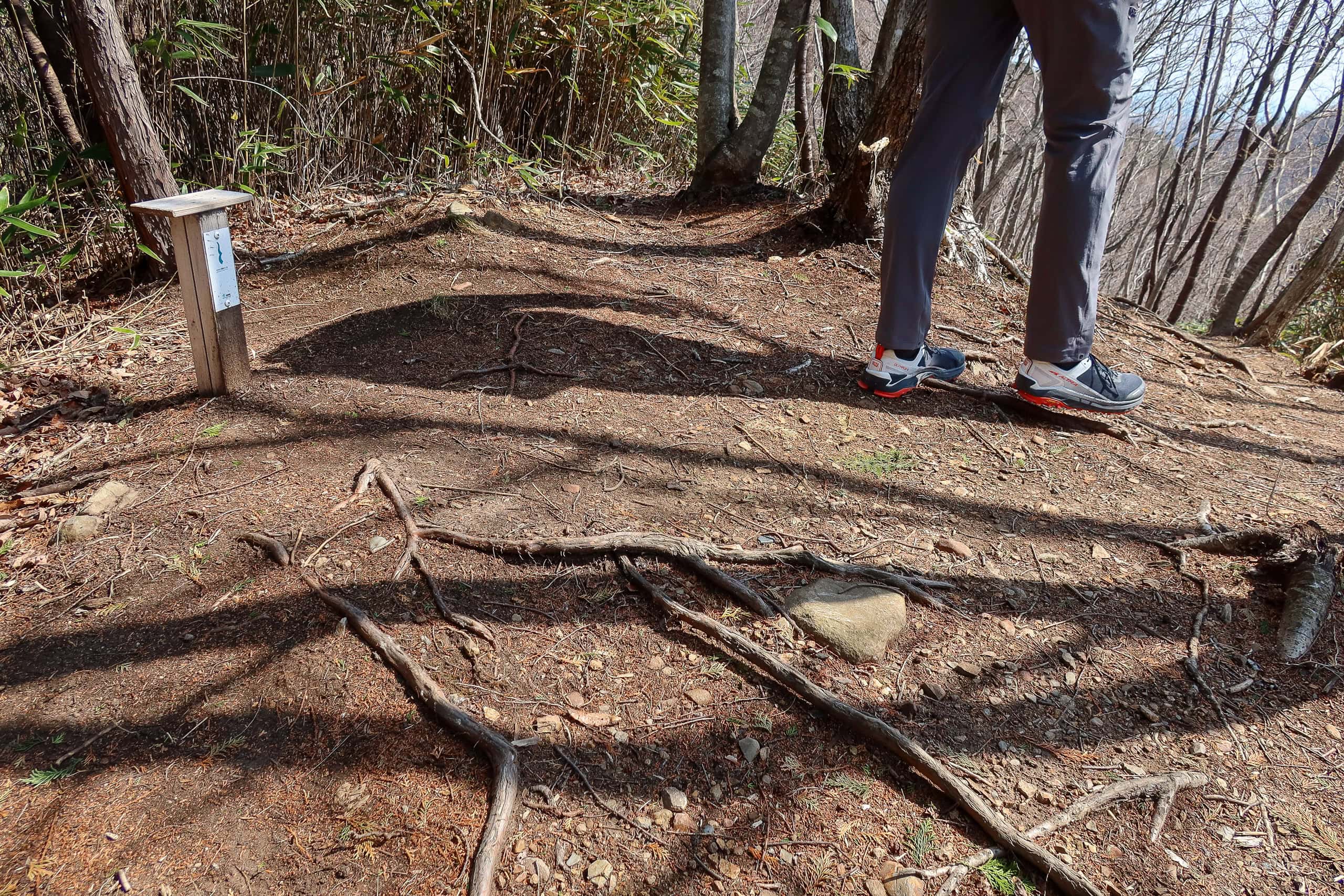
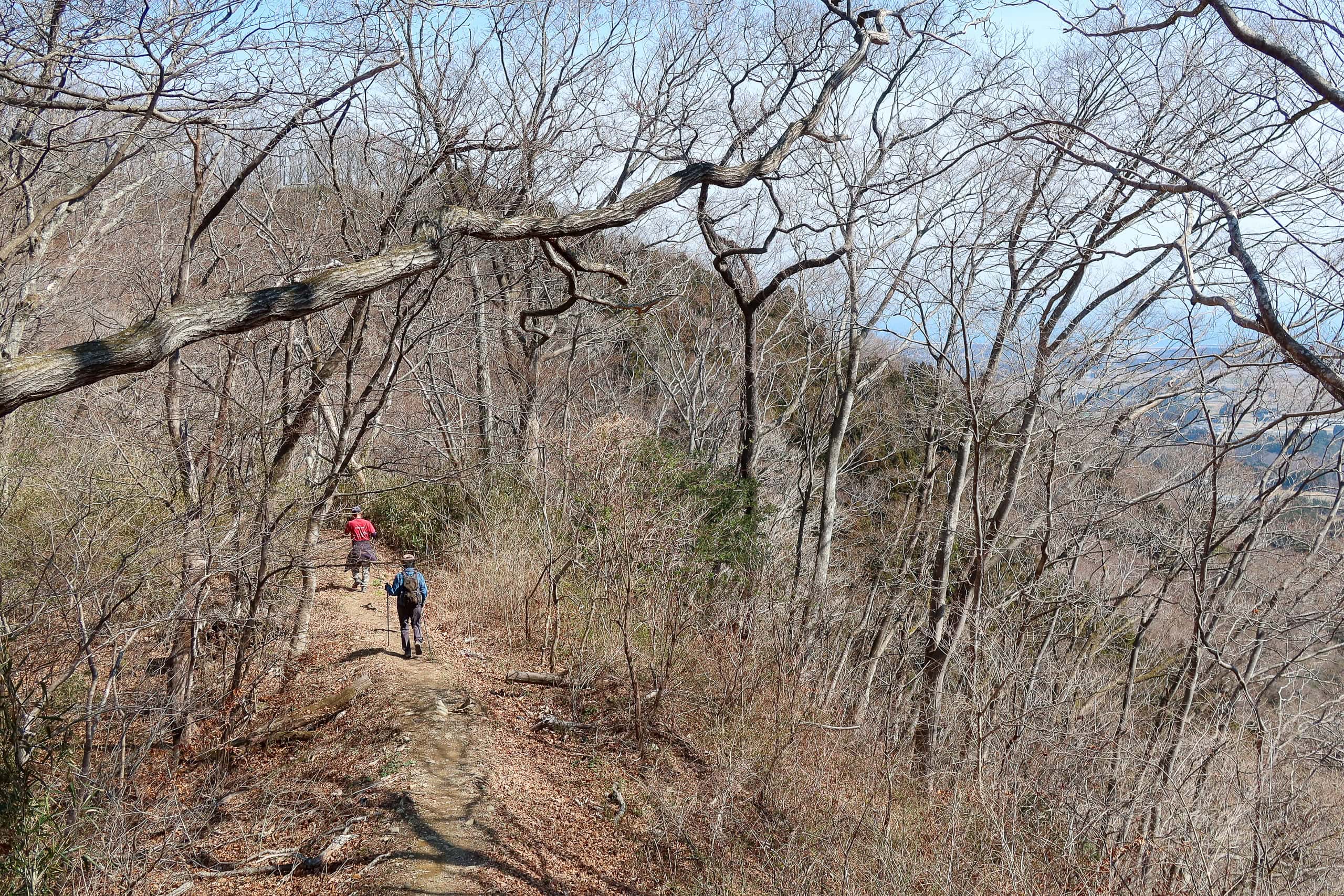
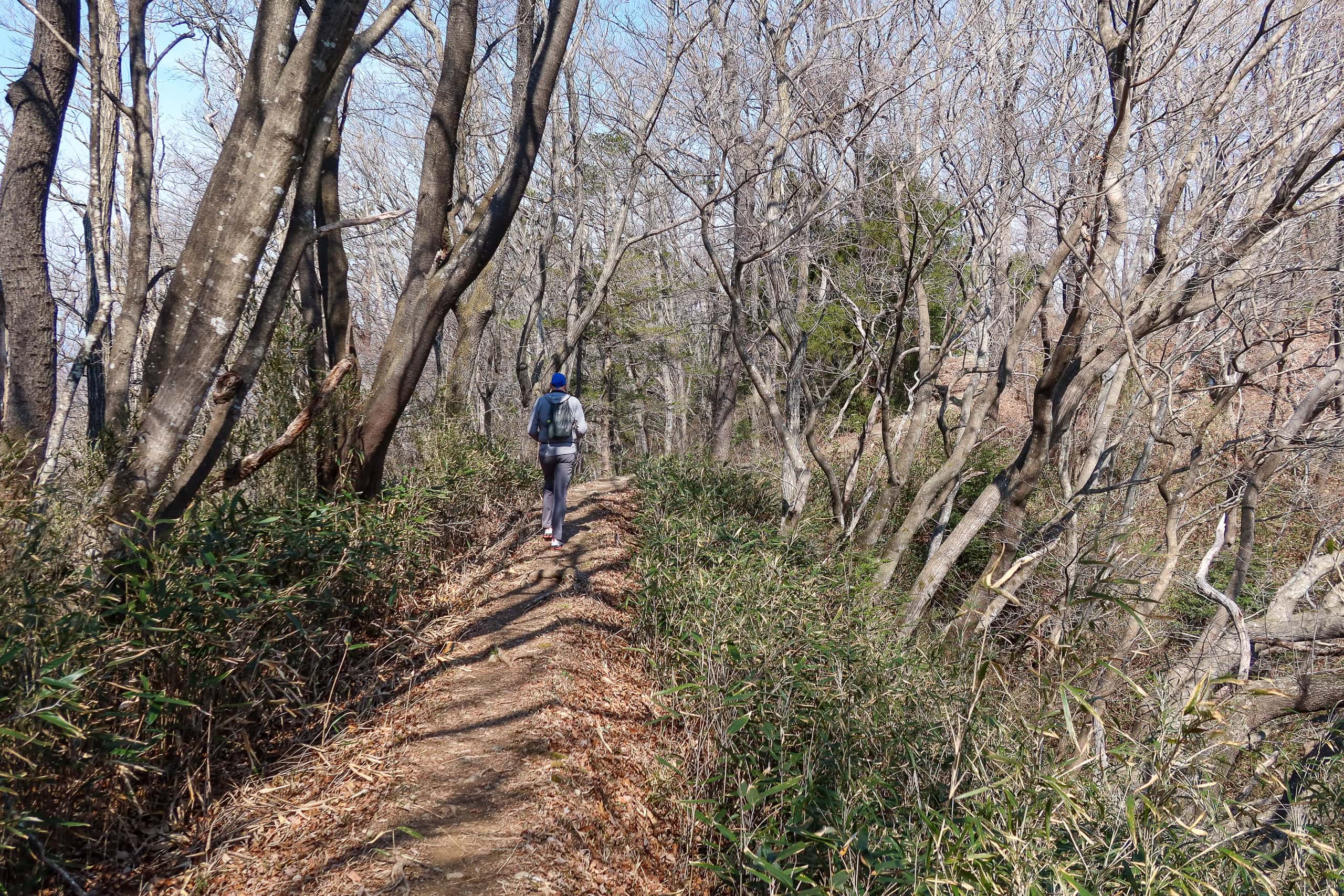
After walking on the ridgeline trail for about an hour, we faintly heard car noises from afar. Then, the path started declining sharply. The steep downhill came so suddenly that I could not pull my trekking poles from the side pocket of my backpack before I realized it was too late to find a safe, level spot to do it.
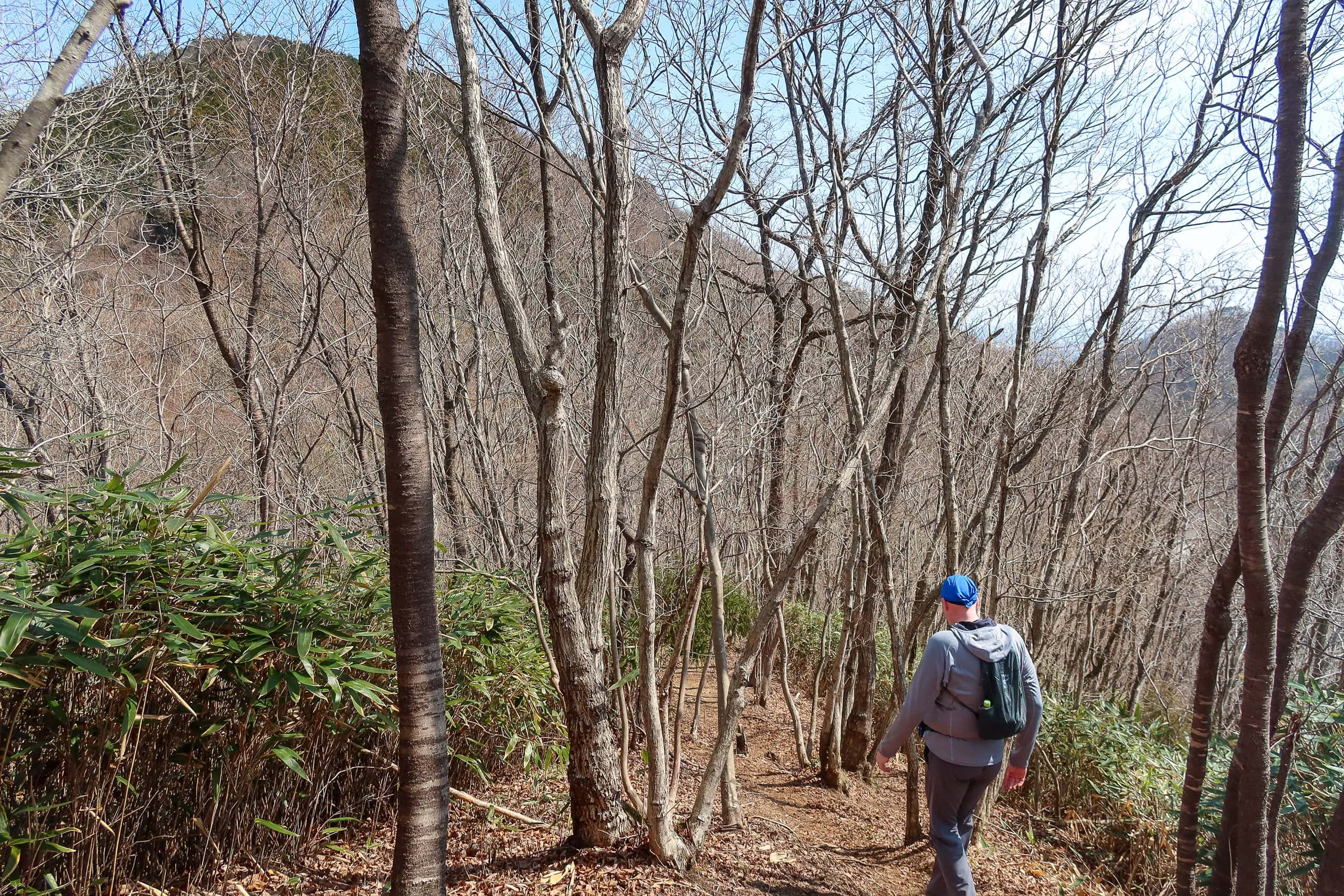
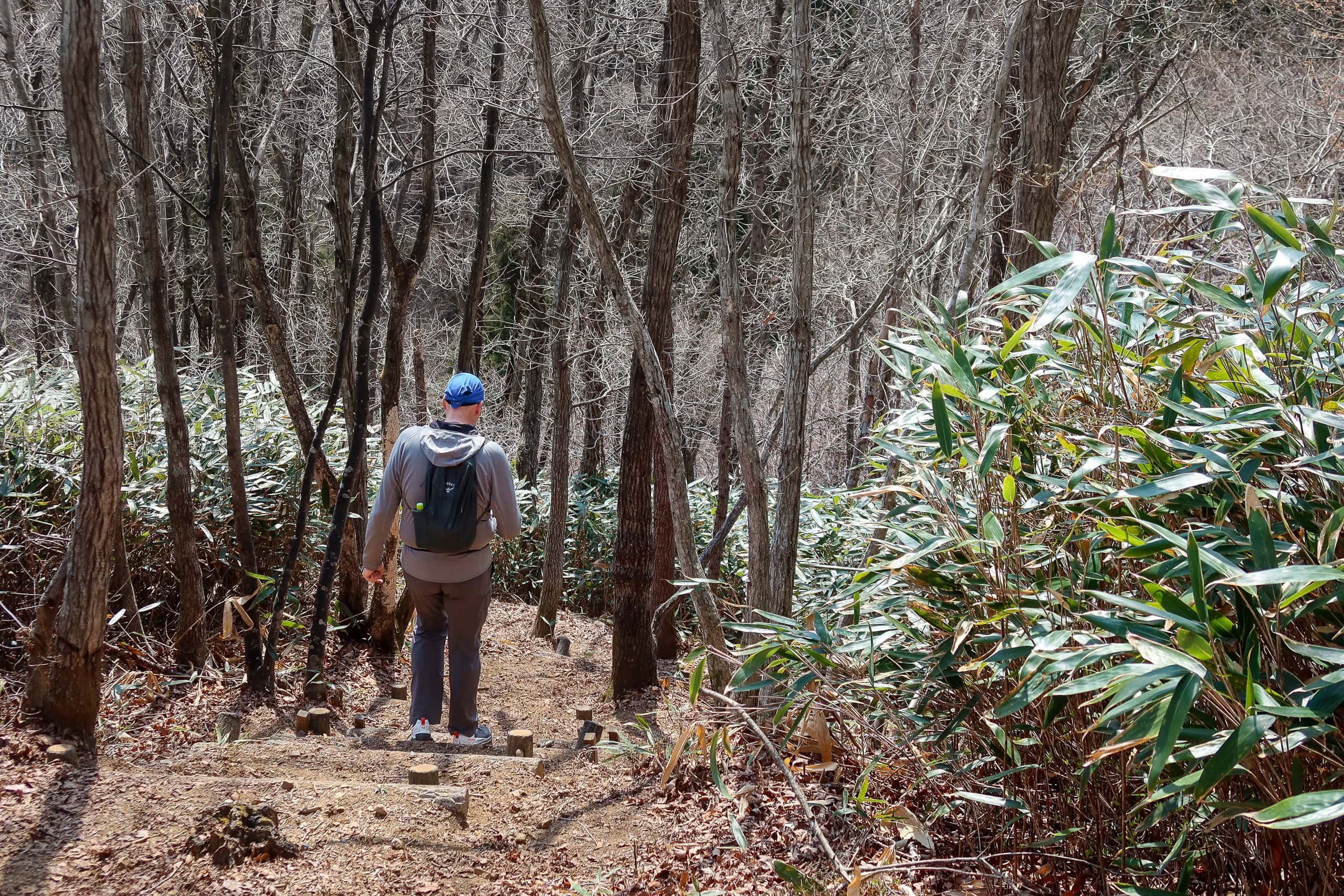
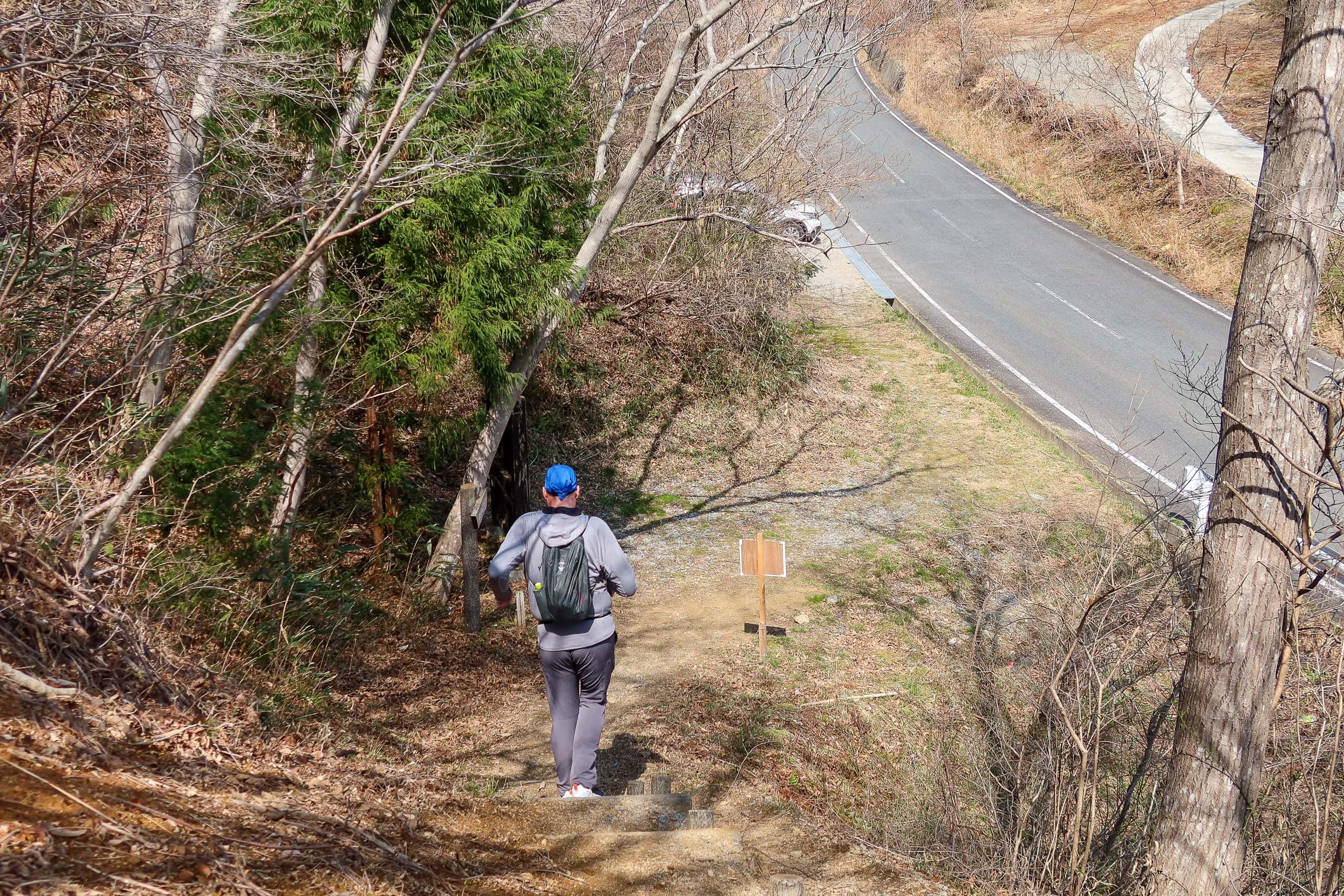
When we finally reached another trailhead on Suzuu Toge pass 鈴宇峠, my legs wobbled because of too much pressure on my knees and toes.
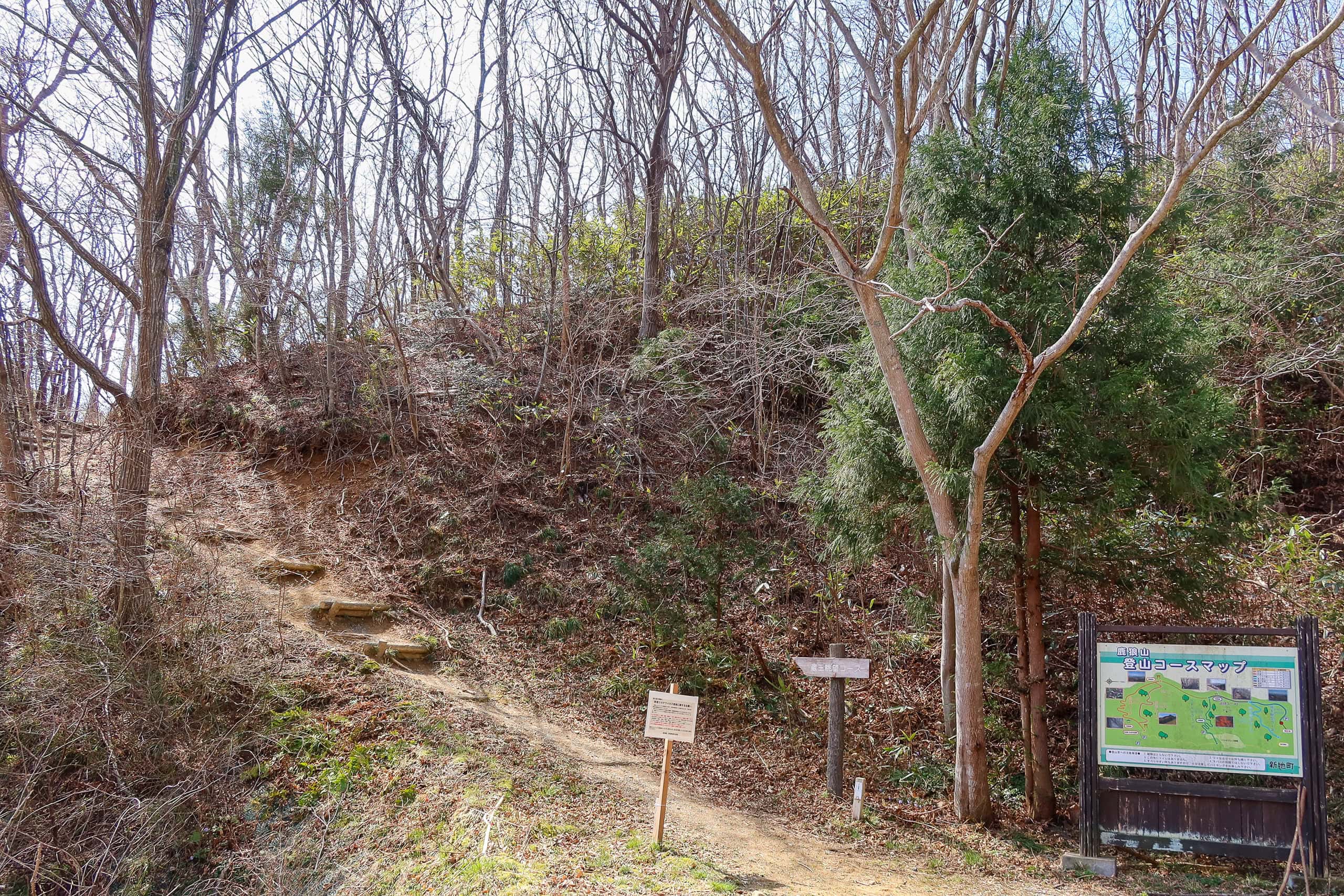
Spring wells and cherry blossom pond
We were off the mountain path but still further from the coastal town.
We gradually walked down a narrow paved car road along a valley and eventually passed by a spring well called Mayumi Shimizu 真弓清水. It sounds like a typical Japanese woman’s name, but it is a natural water spring coming out of a mountain foot.
Obviously, it was good quality water as a big stone monument placed next to the spring said so, and a local elder was trying to fill two big water tanks. He needed much more time to make it full as the water flow didn’t appear strong right now, so we left the spring well without tasting it.
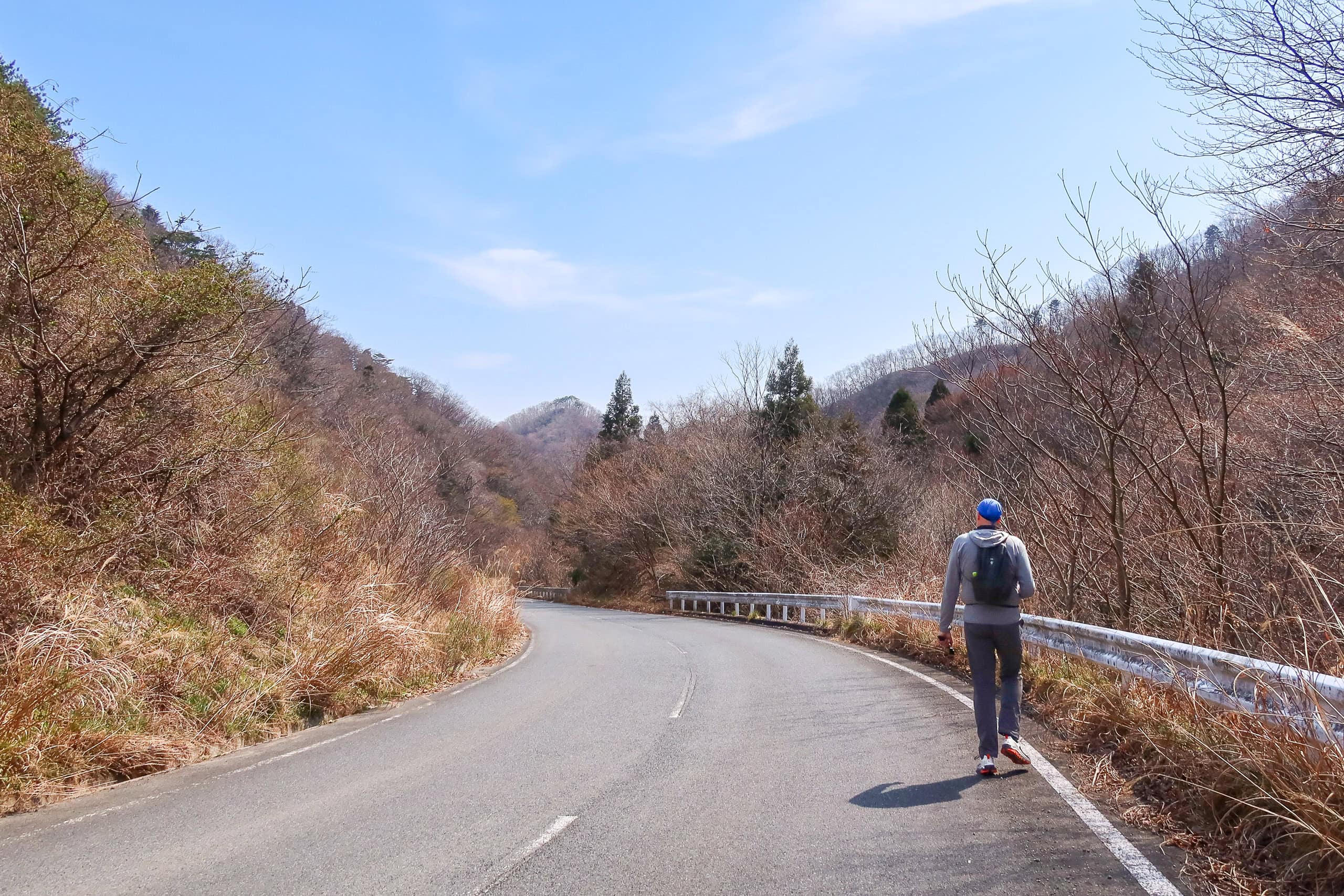
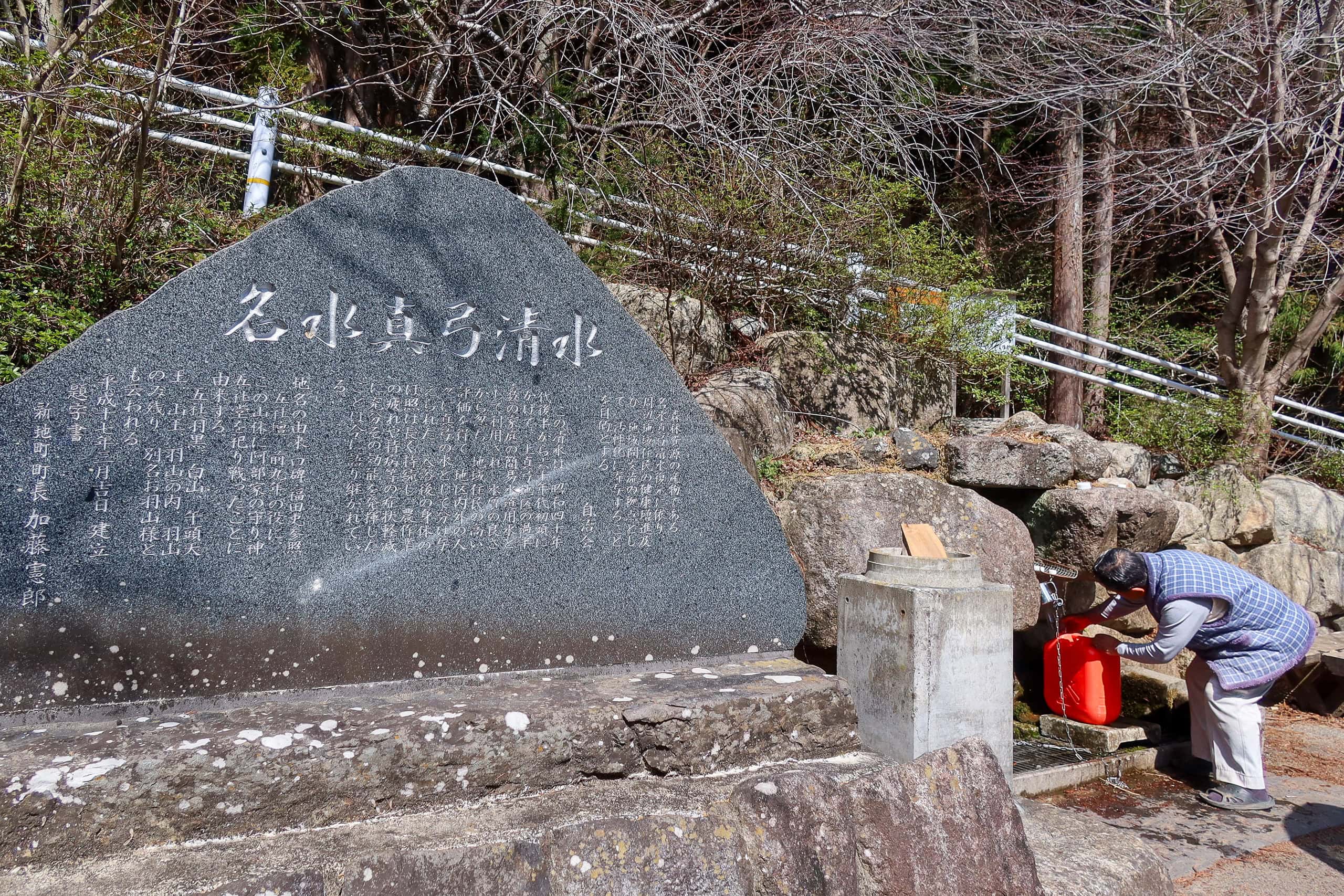
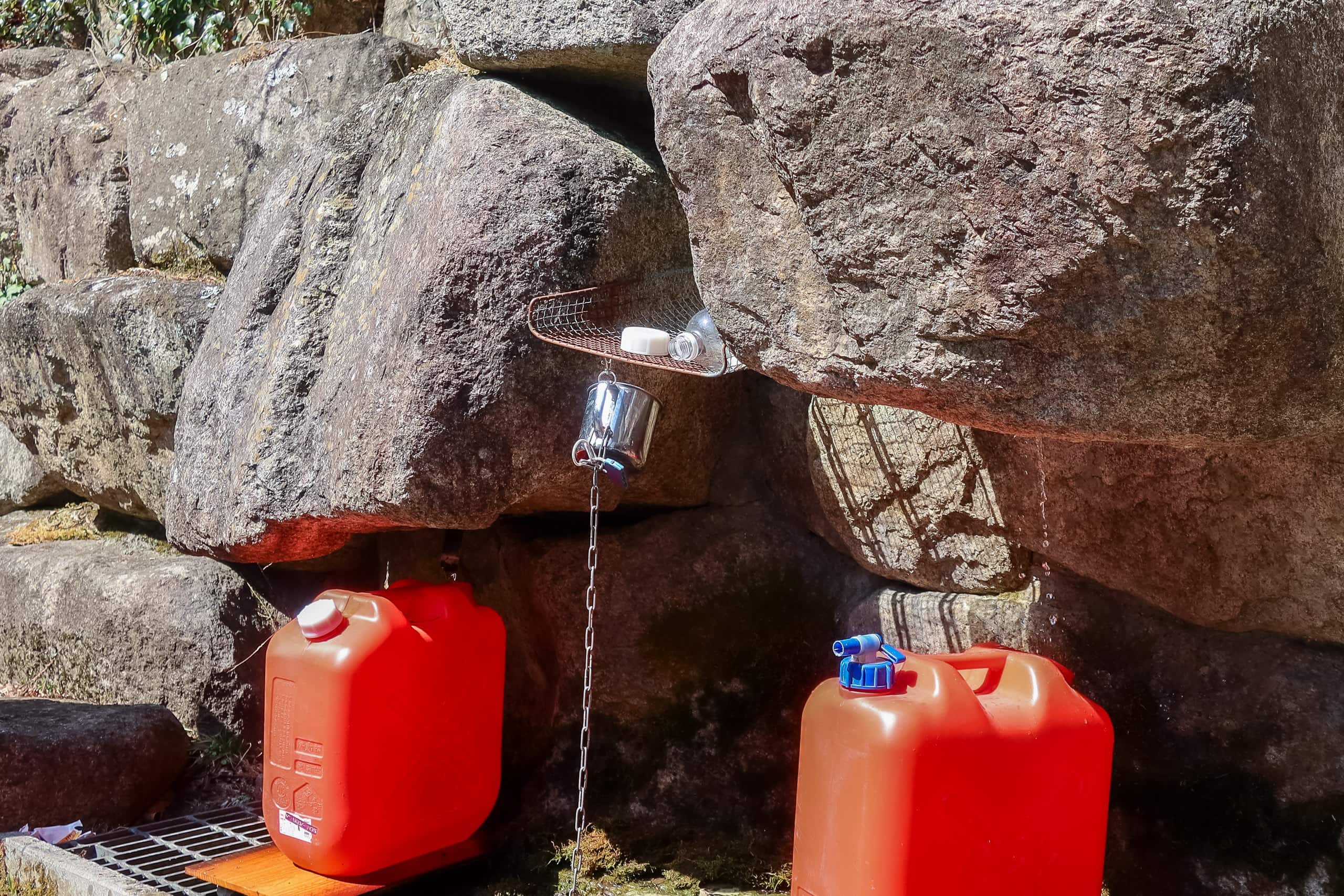
Strolling further down from the mountains, we returned to the open flat land, gardening-tree farming fields and idyllic hamlets.
Certain types of young trees commonly used for hedges in Japan neatly stood in lines. Our breaths were taken by the sight of cherry and Ume Plum trees, which had flourishing various pink blossoms, filling the air with refreshing sweet scents.
Then, I realized yesterday’s last part, where we saw fields growing the same thin young trees, and this gardening tree farm village was on a similar elevation and pretty close in a straight line. That area might have been a part of this village as well.
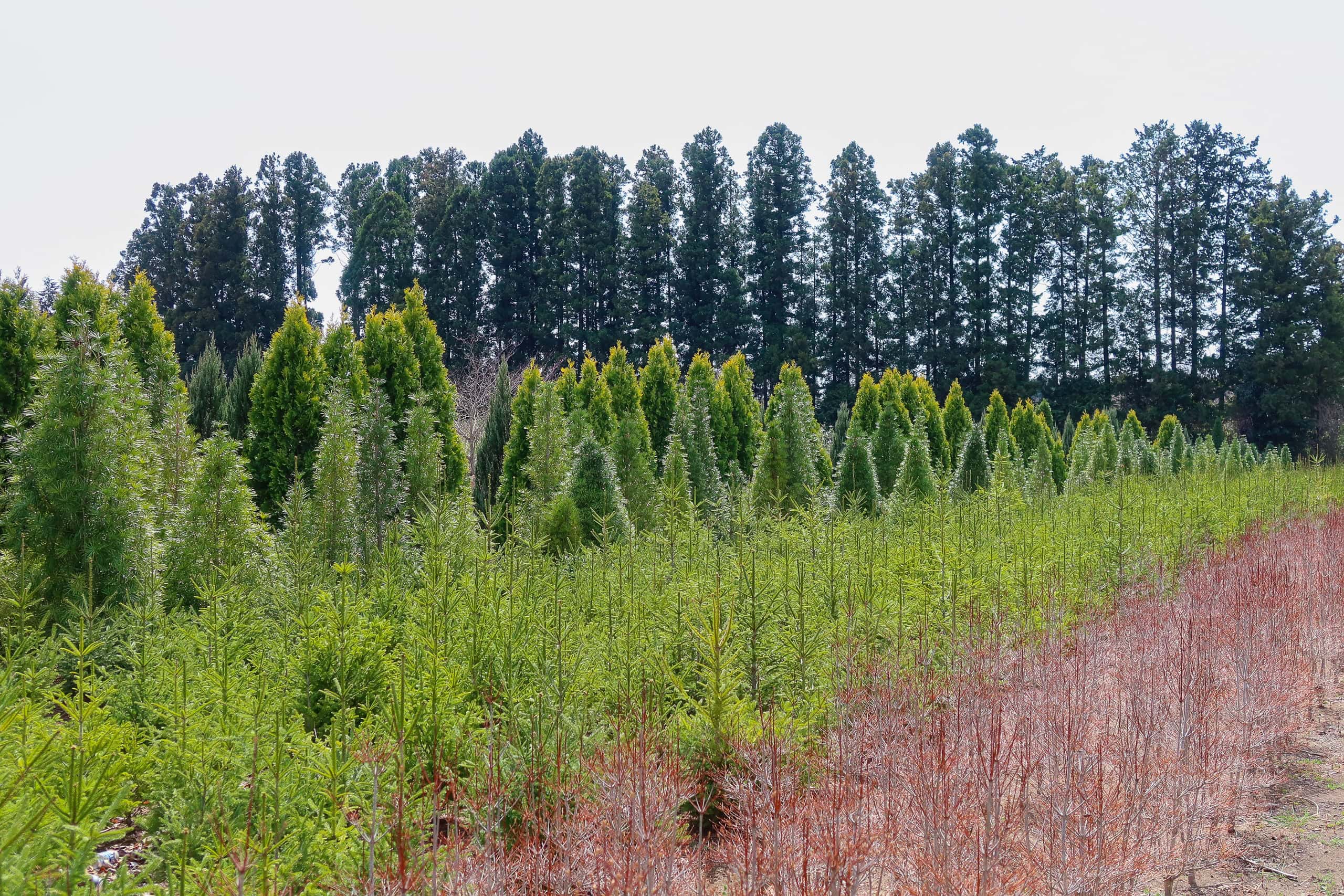
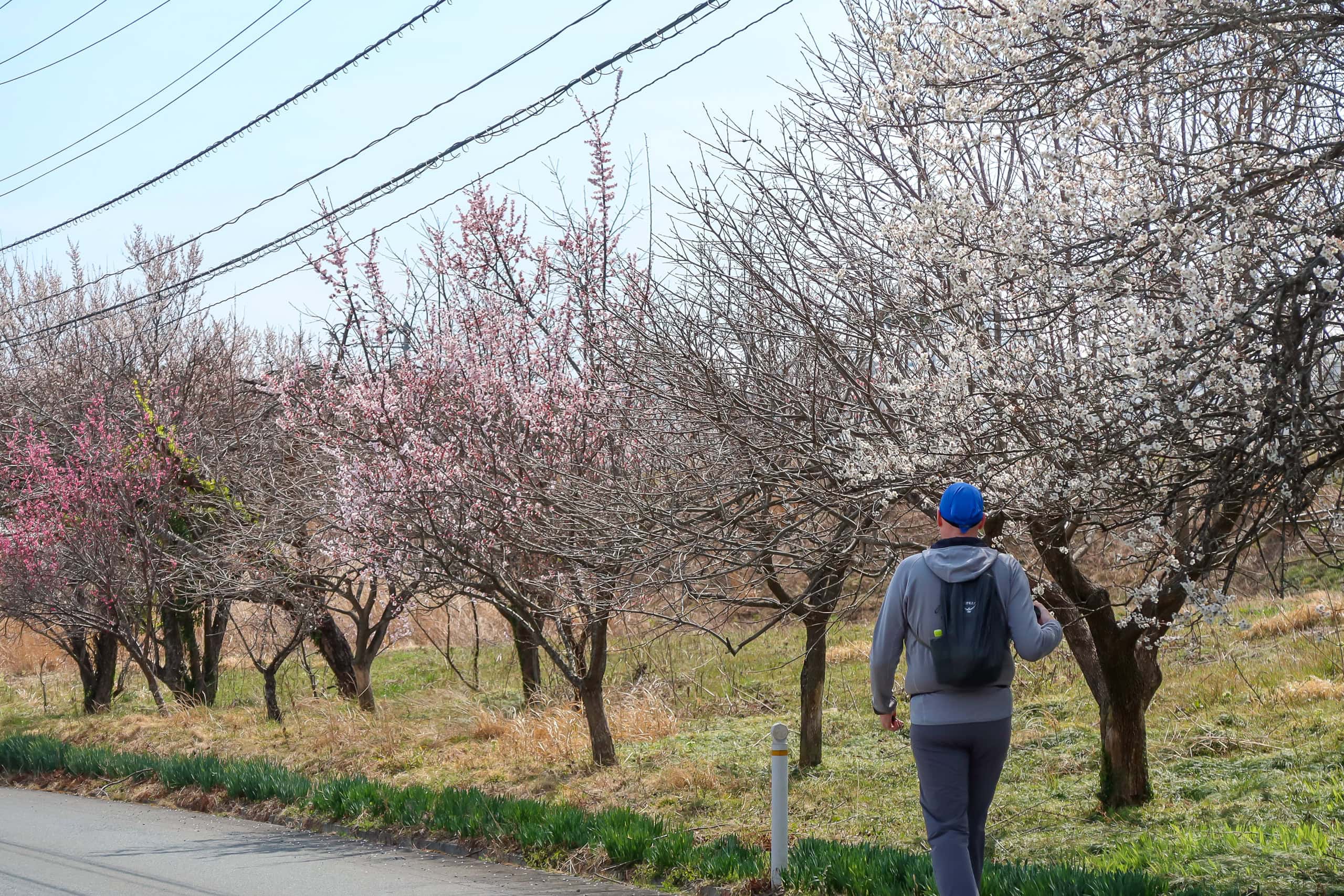
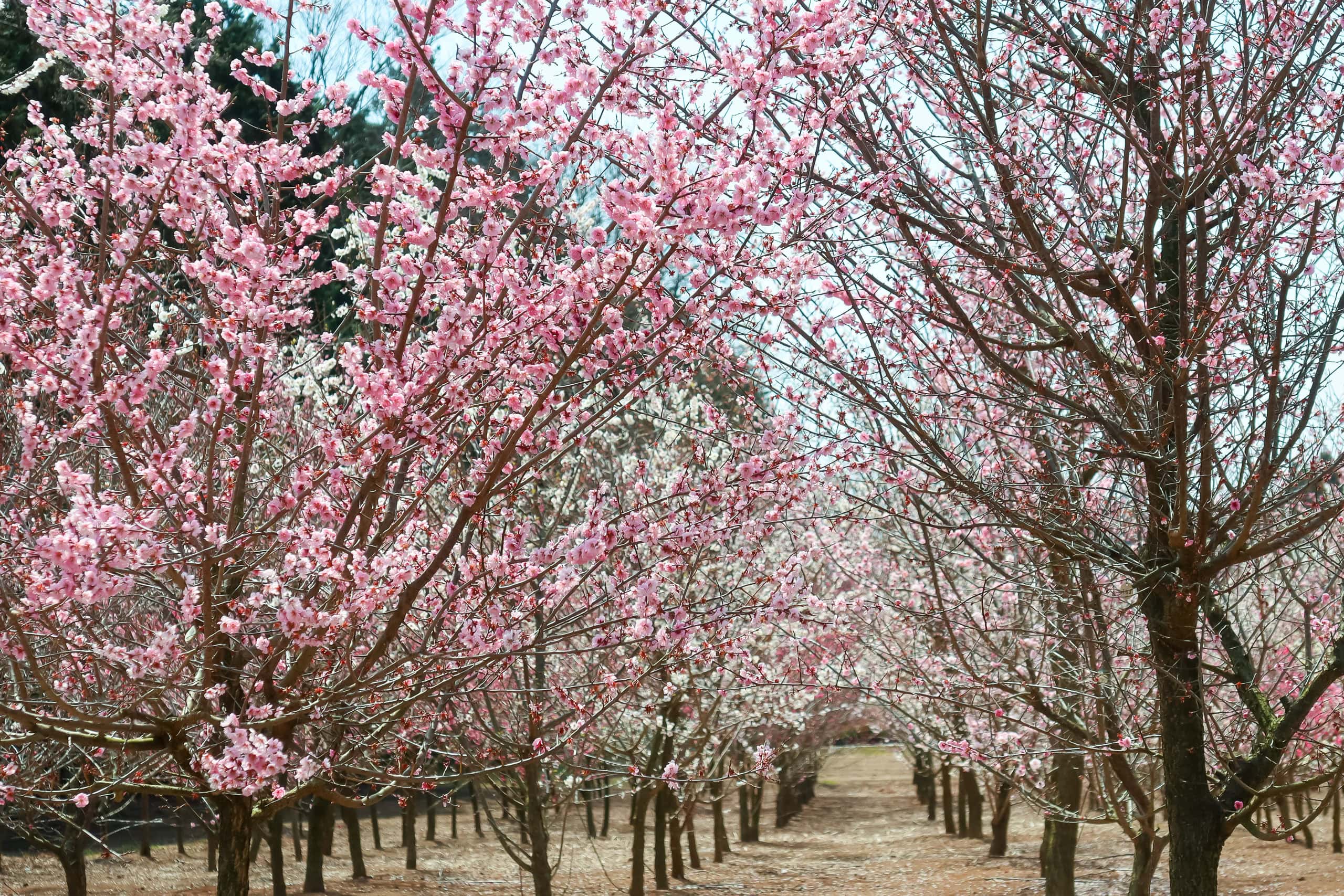
The MCT route line was usually drawn to show us as many local sights as possible. The first one was the Mayumi Shimizu spring well. This area must have been blessed with good-quality mountain water for generations. More spring wells were in the area, and we were heading to another one next.
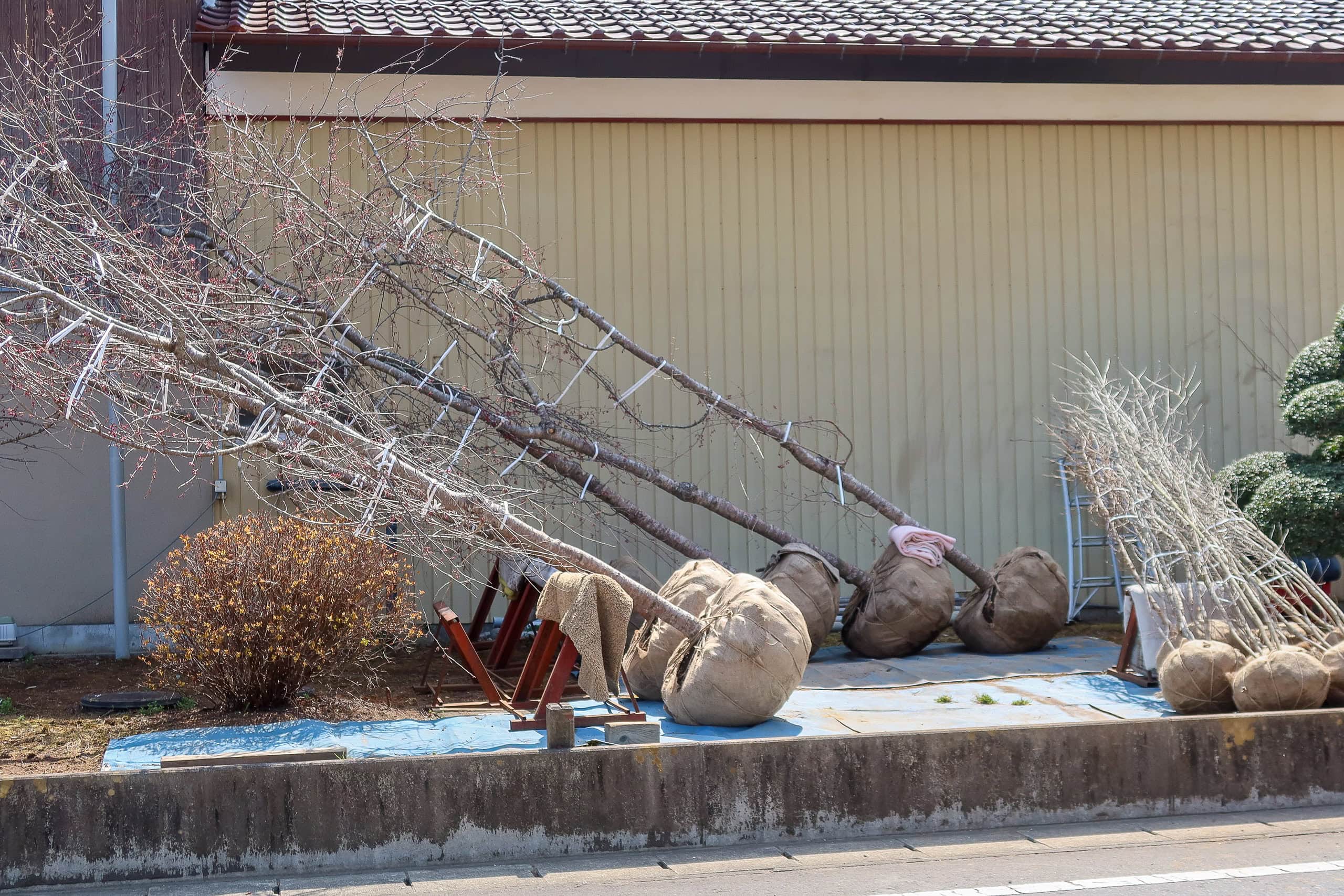
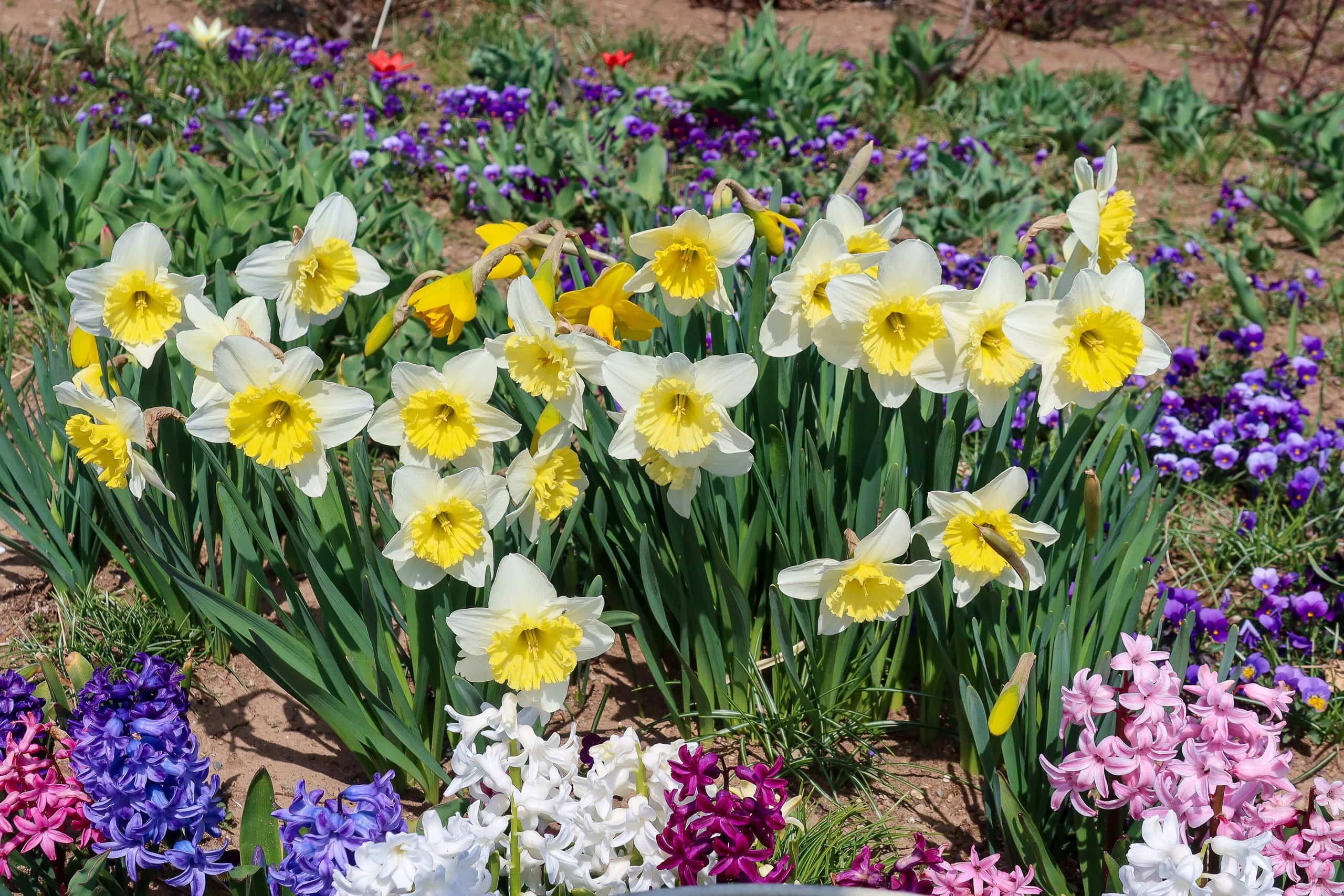
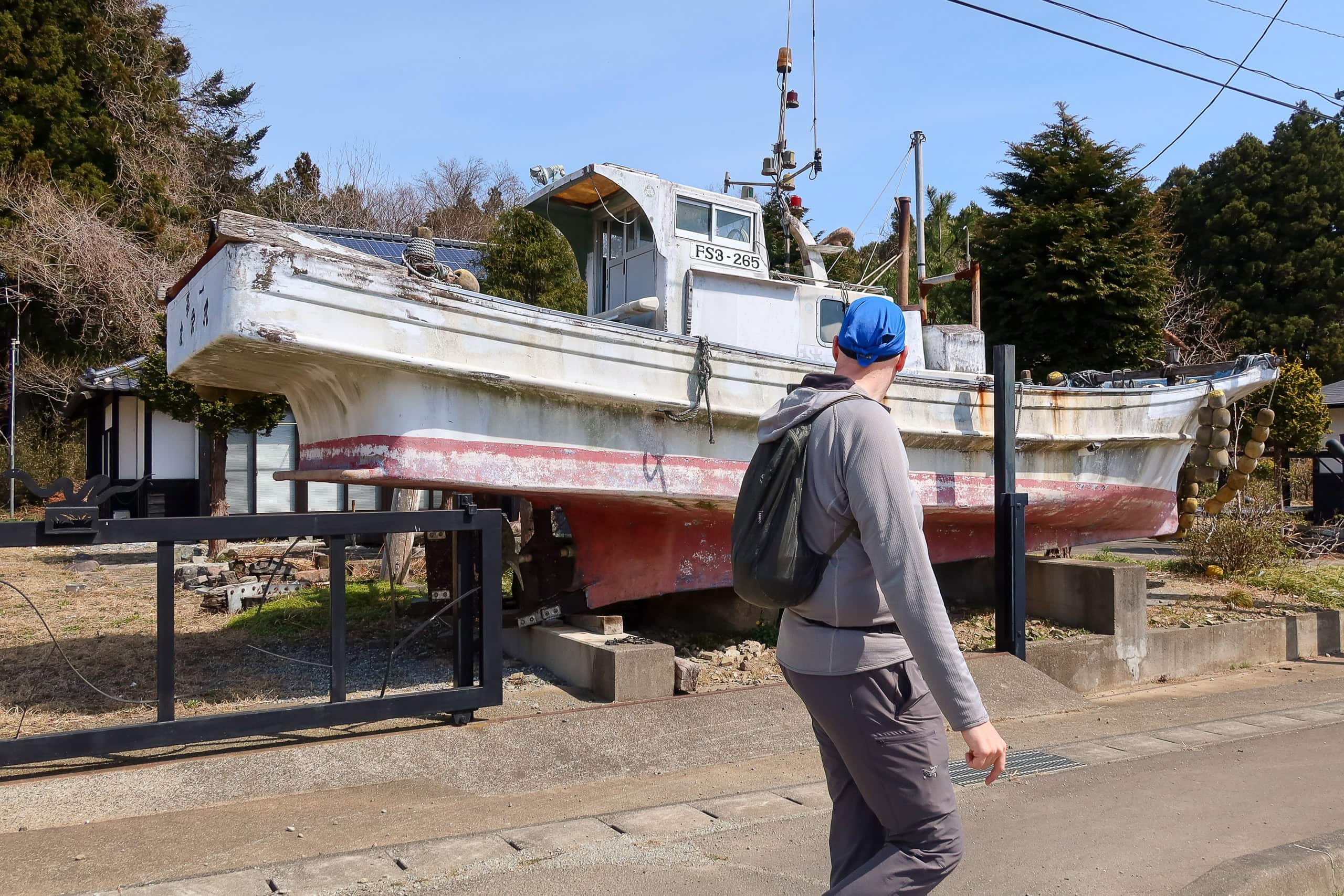
The next spring well was supposed to be located by a corner of a large, baseball-field-size nameless pond — man-made water storage. Dozens of cherry trees surrounded all around the pond, but it was too early for them to fully bloom.
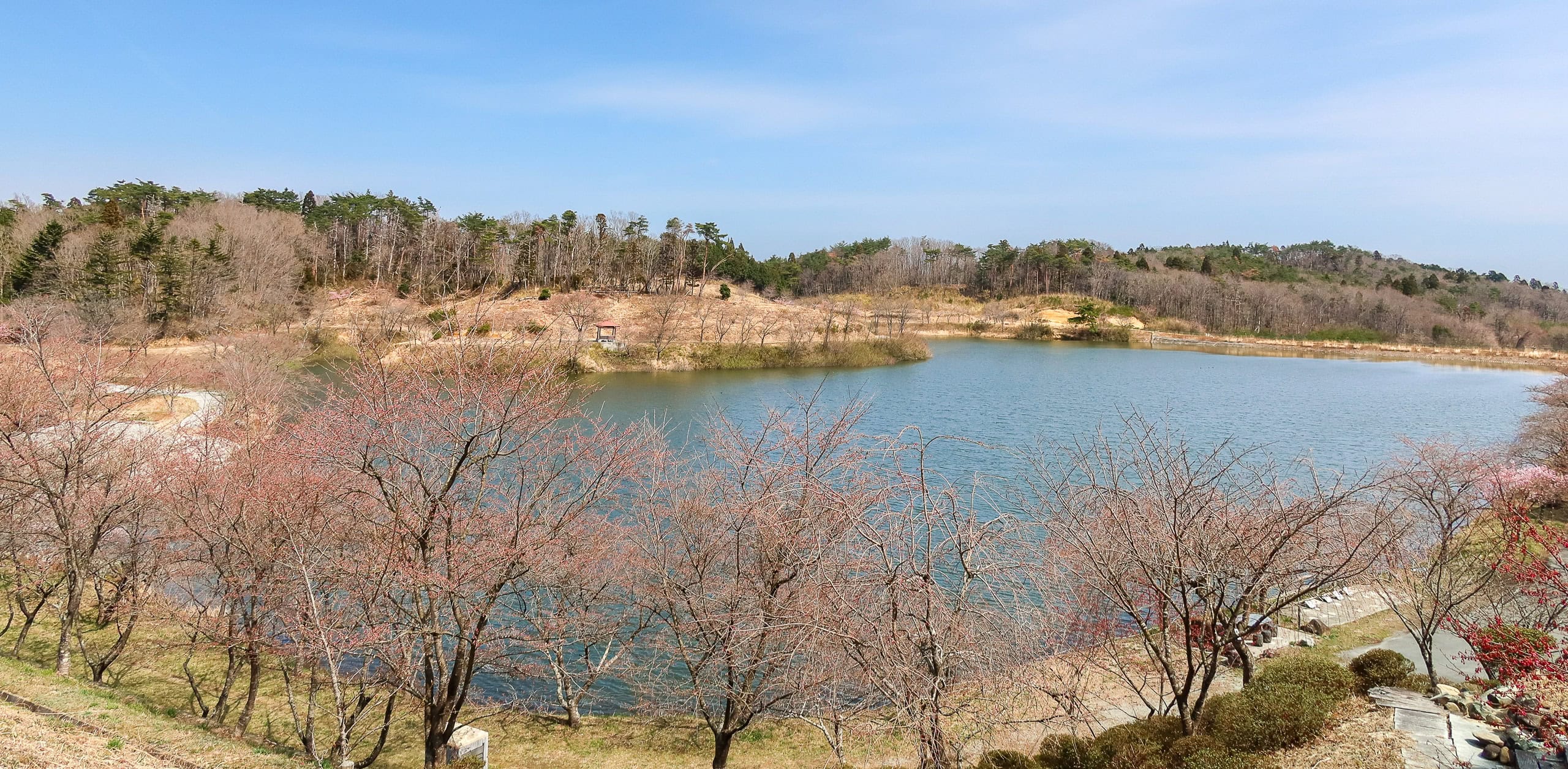
Instead, a small mound by the entrance to the walking paths around the pond was half-covered with fully flourishing early-bloom cherries. The awestruck beauty was another reward for our eyes, who had been lucky to see so many spring flowers today.
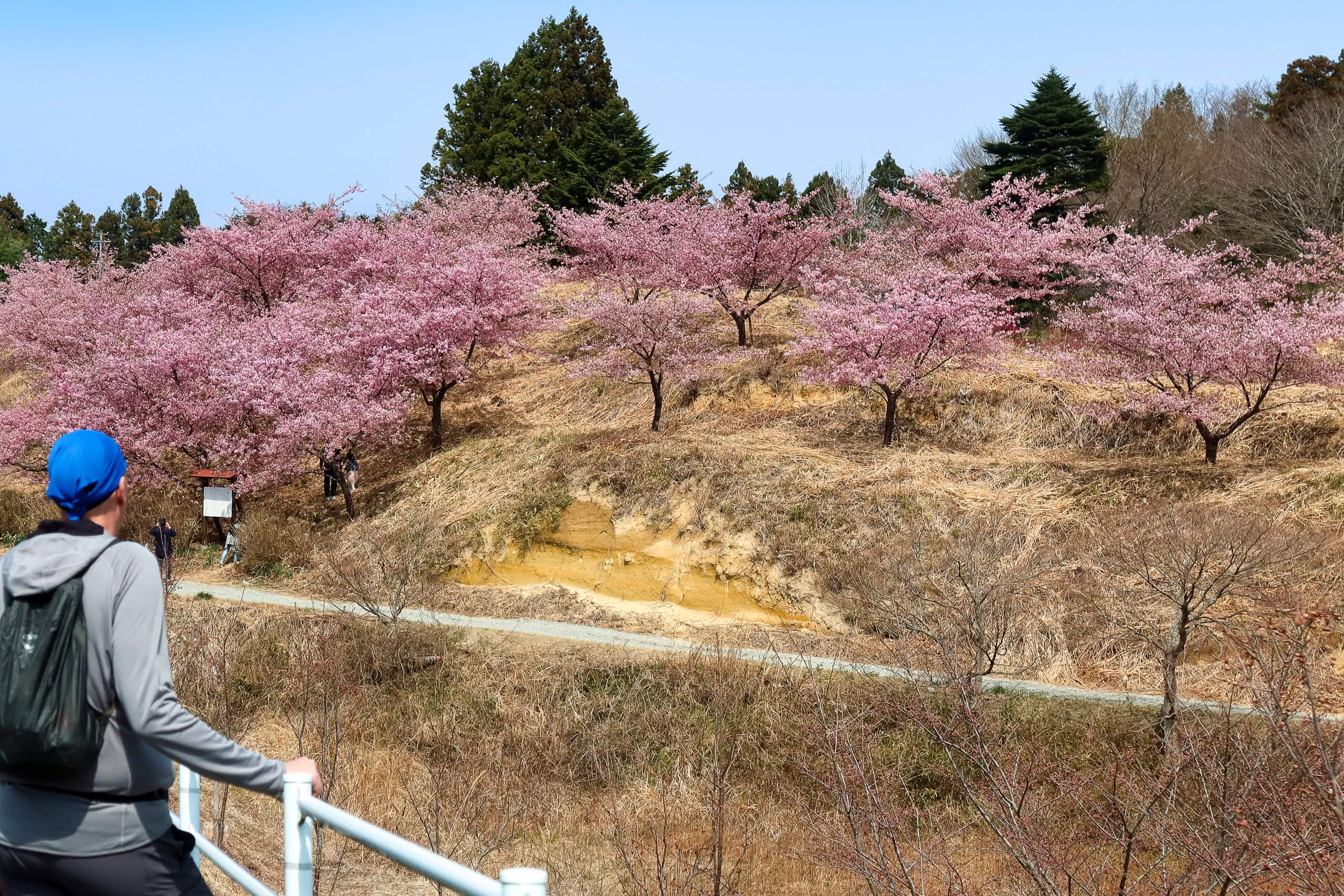
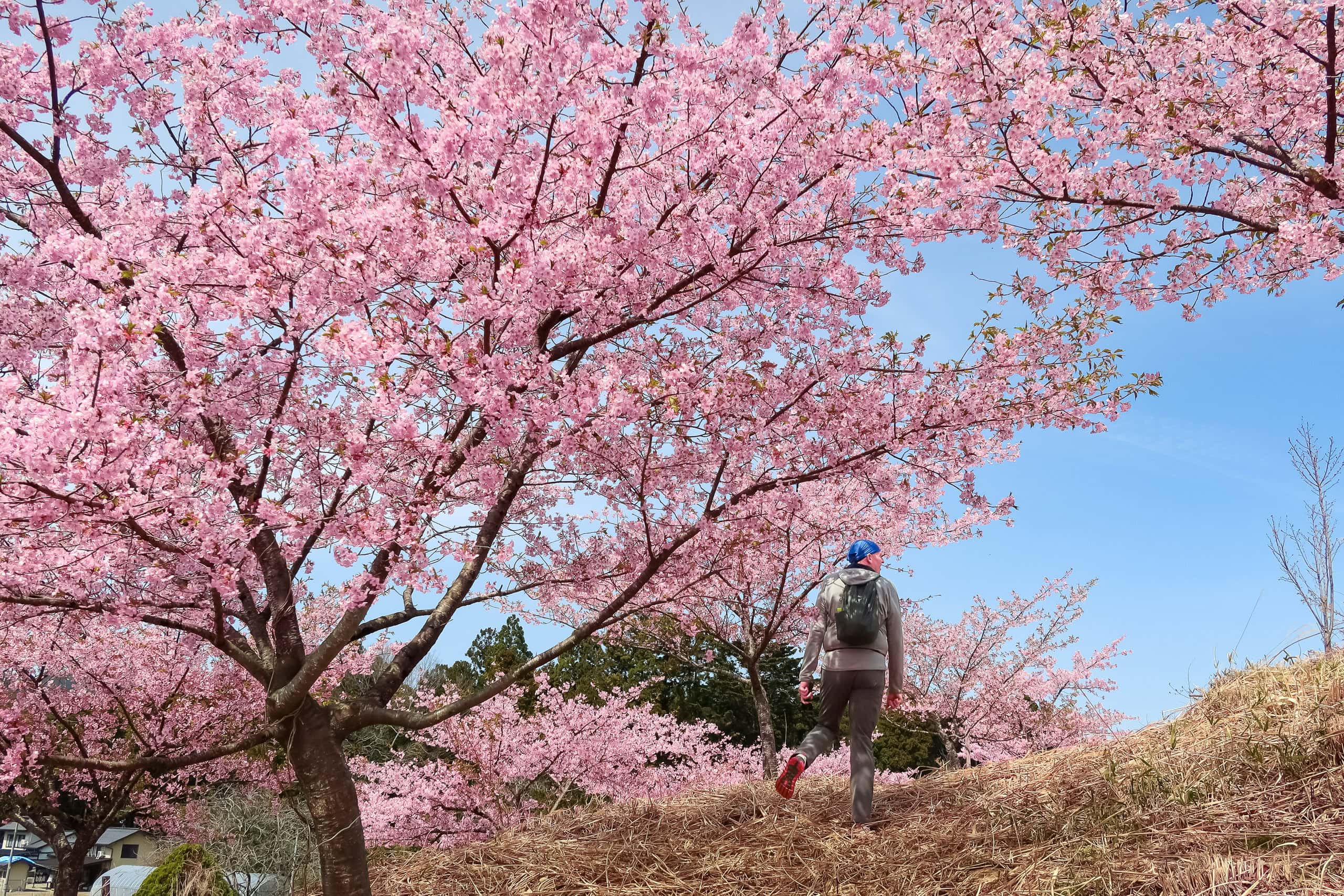
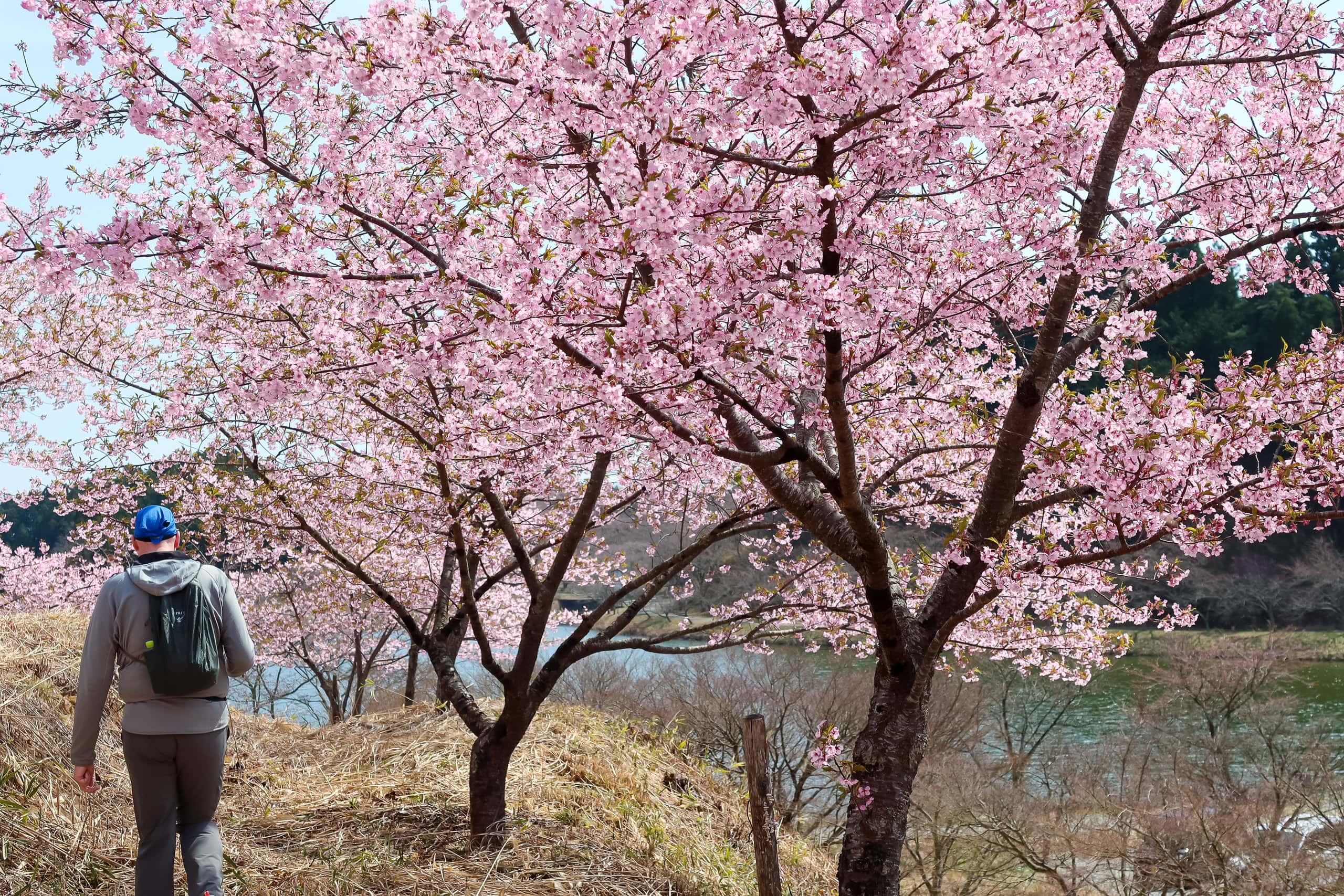
Judging from the additional hundreds of plumpy buds each cherry tree around the pond had, how breathtakingly beautiful this place would be a week or two later.
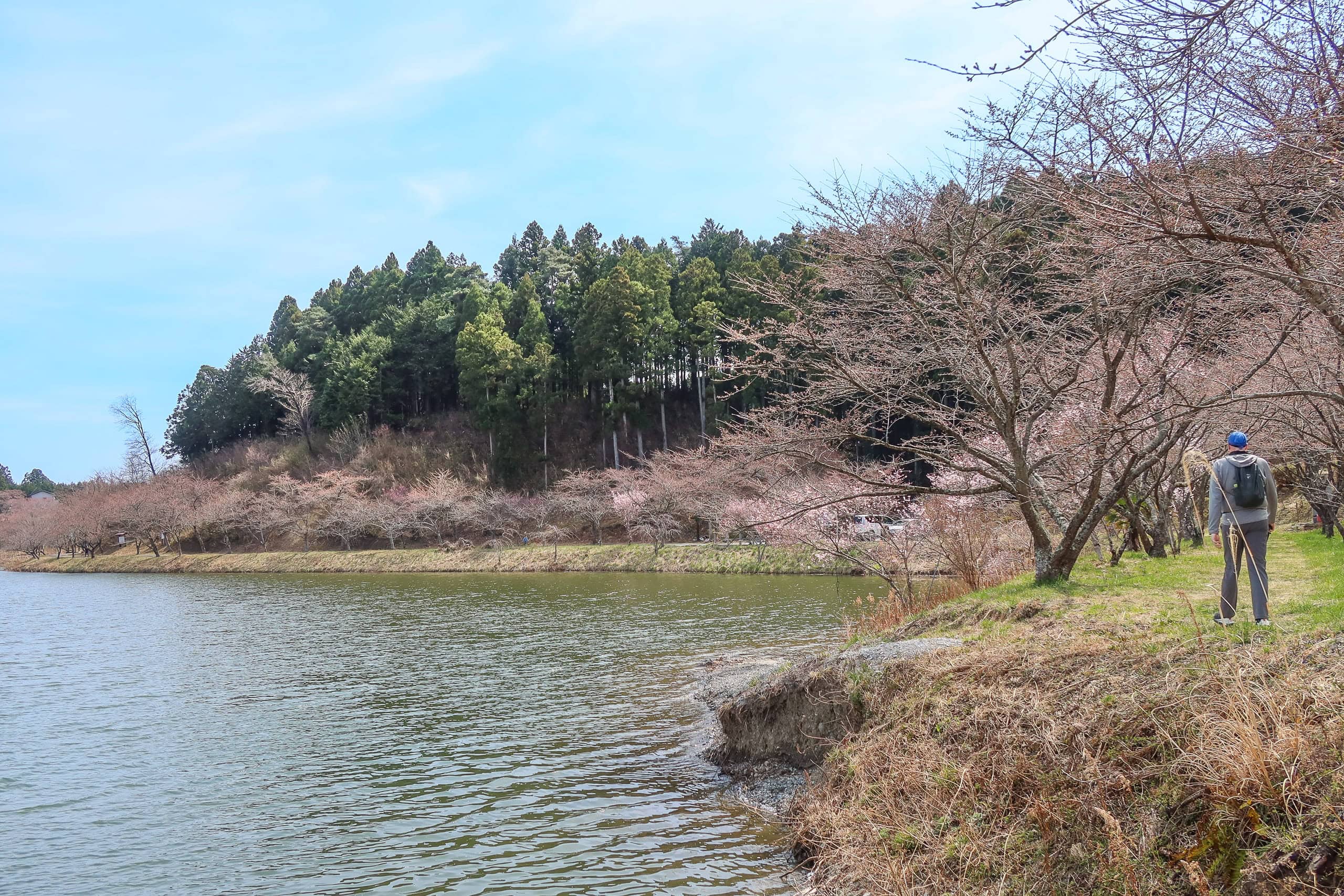
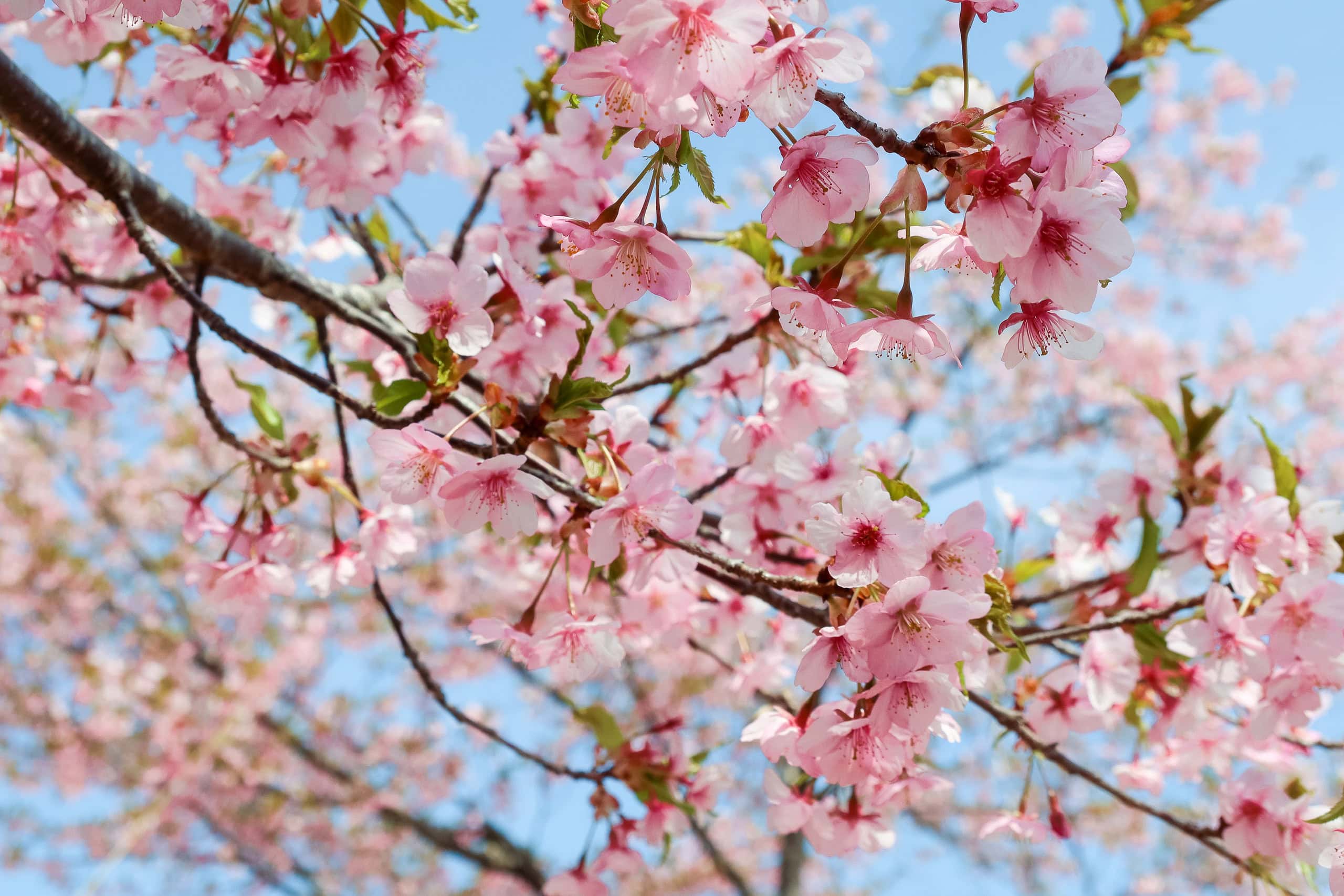
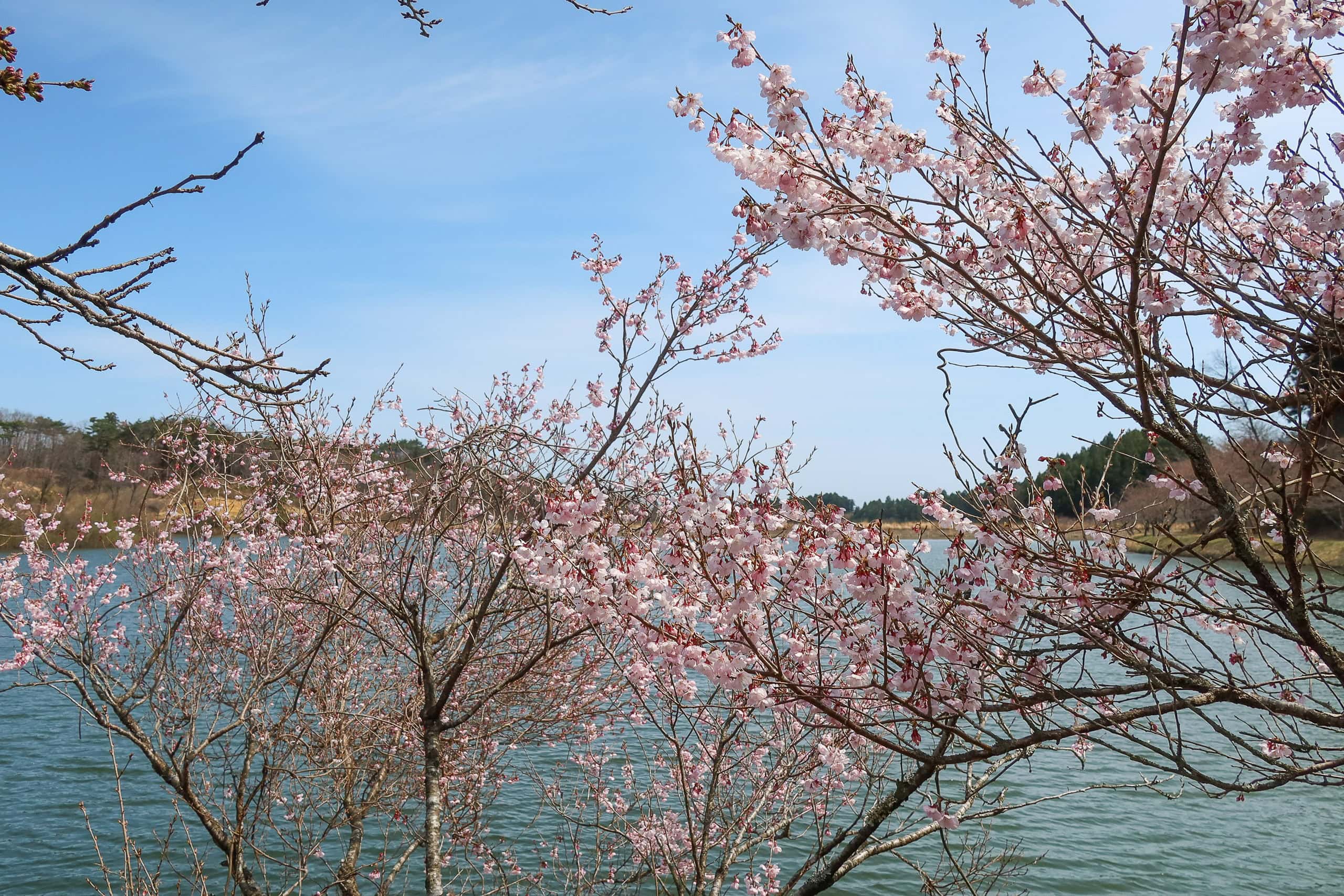
The water spring, Ukon Shimizu 右近清水, was by the southwest corner of the pond.
Here again, another local elder was filling a water tank and bags. Because of its historical background and location, Ukon Shimizu seemed to gain wider recognition and reputation. The spring had a roofed rest hut and a small shrine, too.
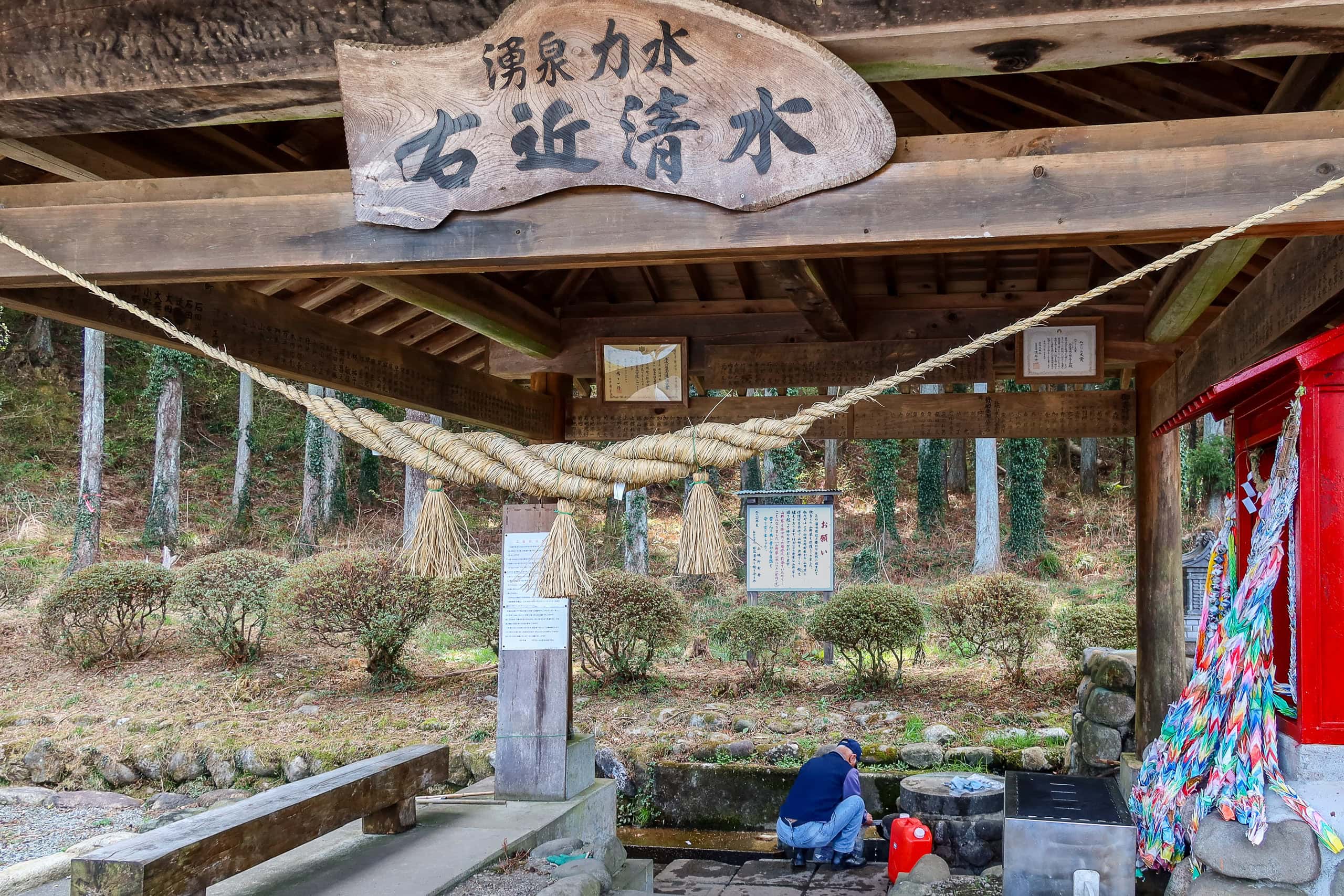
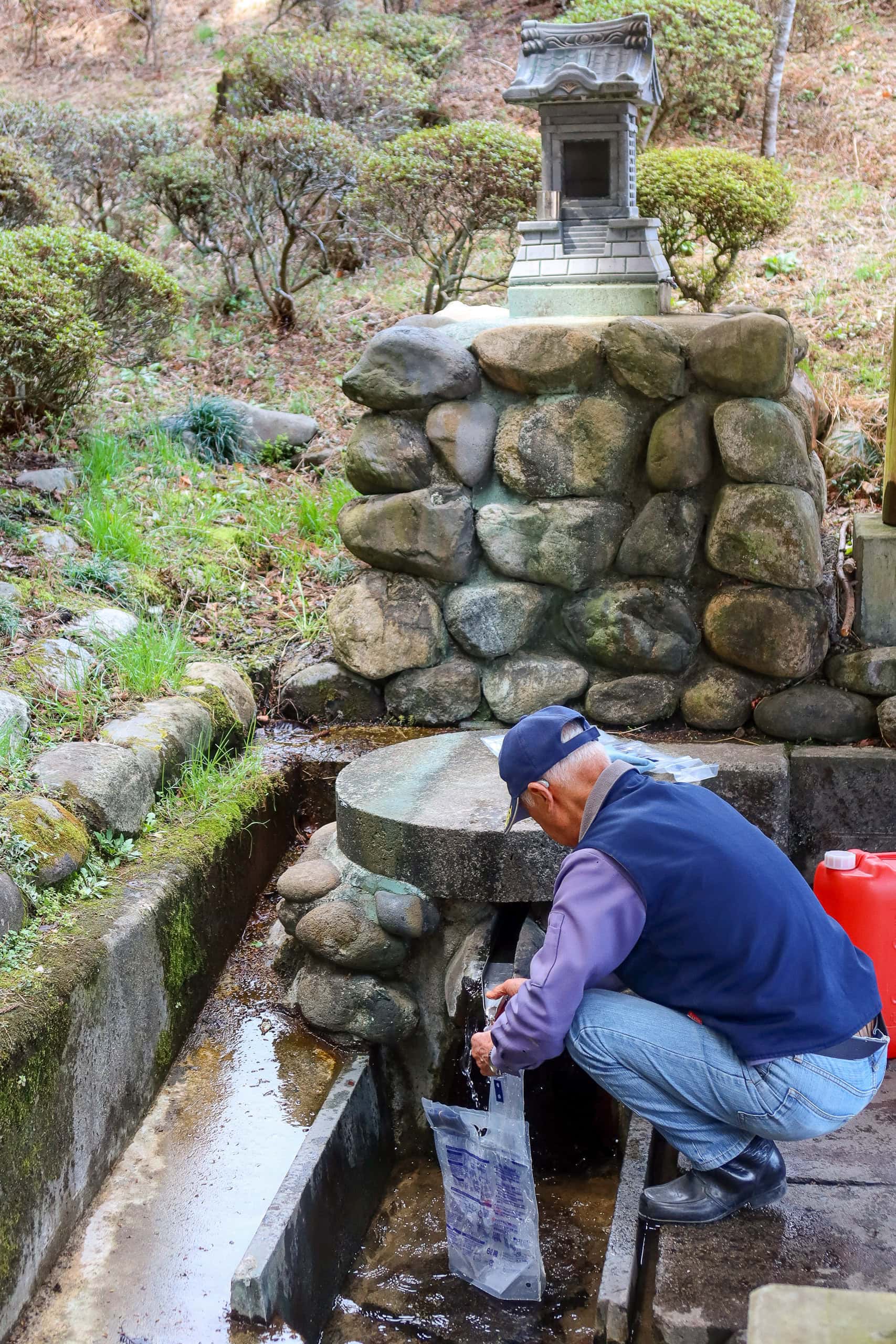
We didn’t see any vending machines around the pond, but we found one soon after the MCT route led us back to the village road.
I had looked forward to a popular small bakery in this part of the village, hoping to get a couple of bread for lunch, but unfortunately, they would close on Saturdays. We found low concrete block walls at the side of an elevated vegetable yard, sat there, and had lunch with bars we brought and the vending machine drinks.
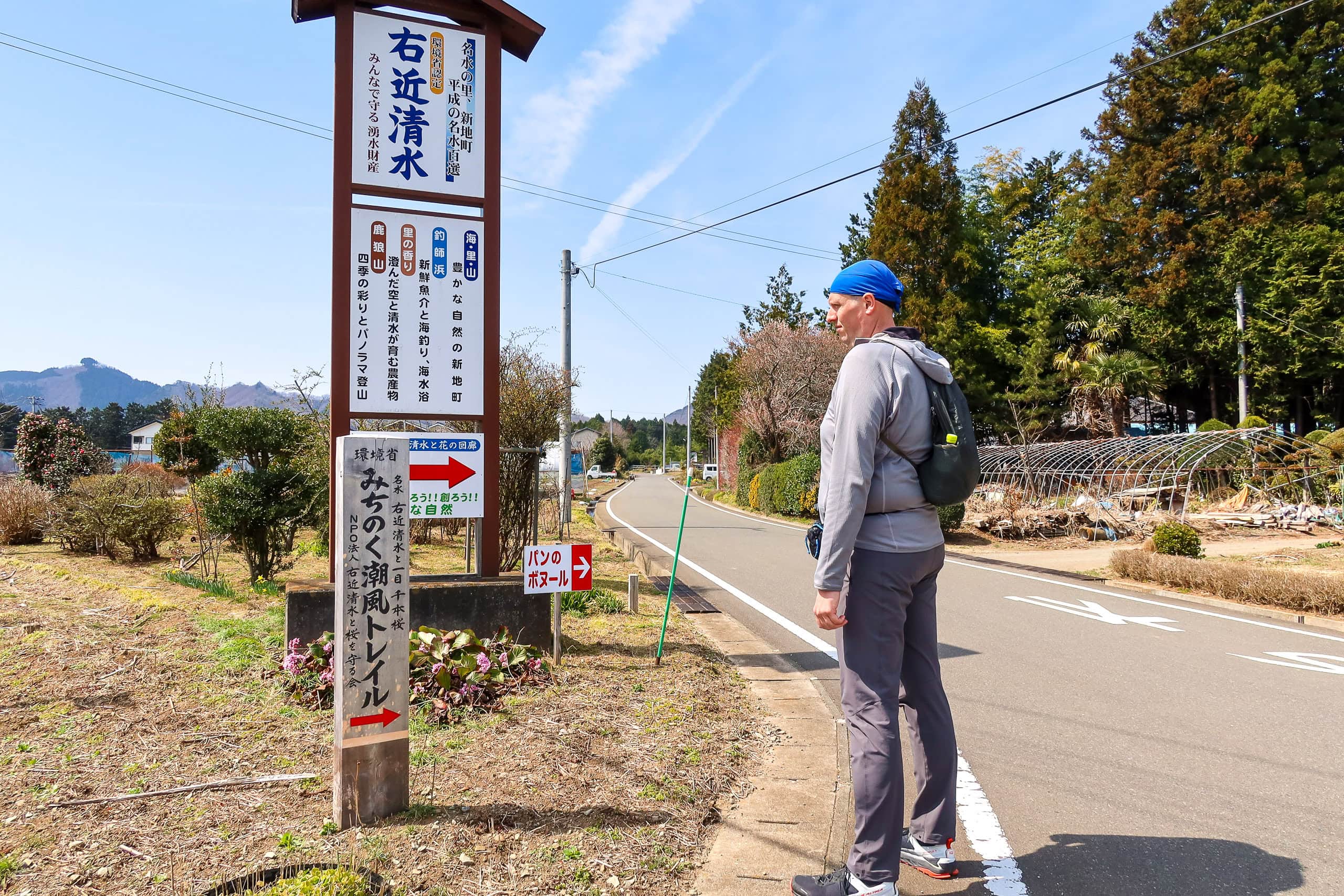
The MCT route continued toward the coast. We had left the gardening plants farming village and entered an open stretch of earthen paddies for growing rice.
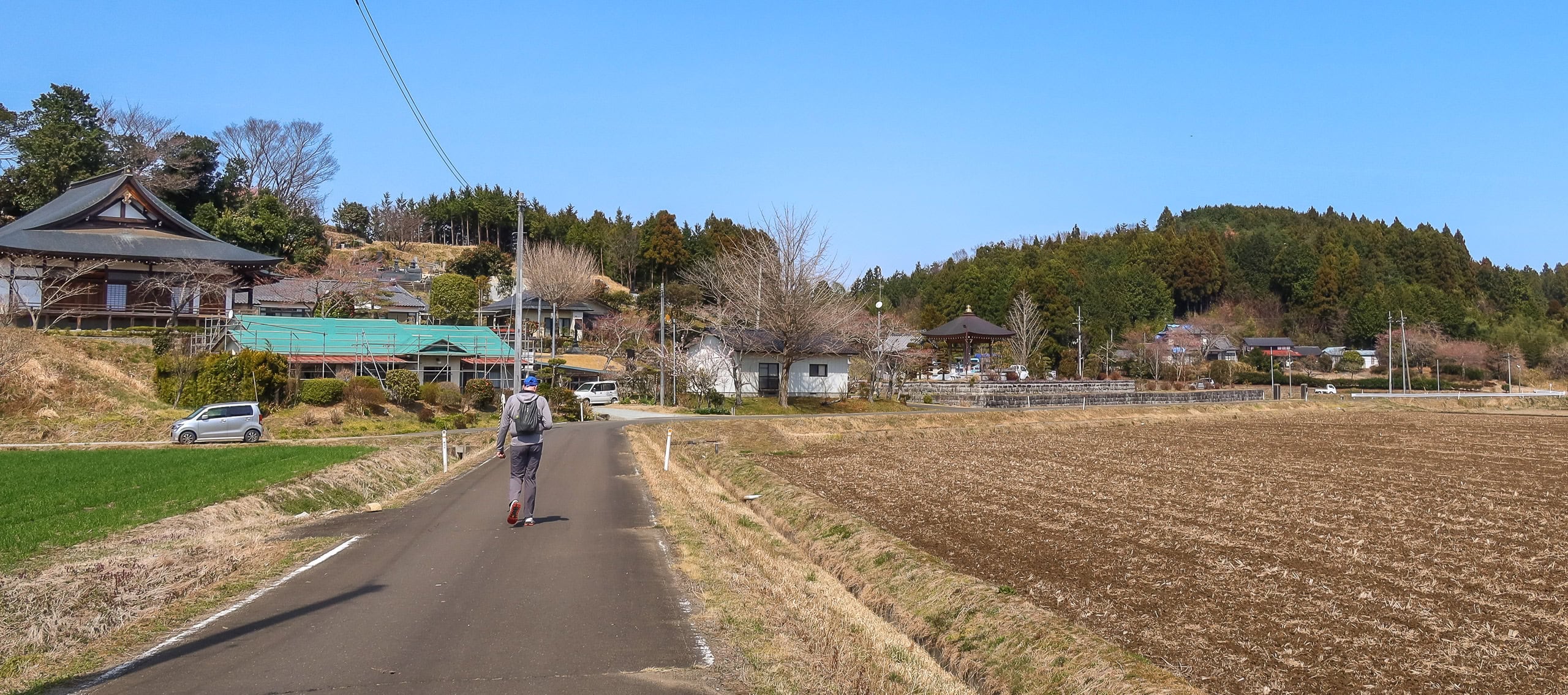

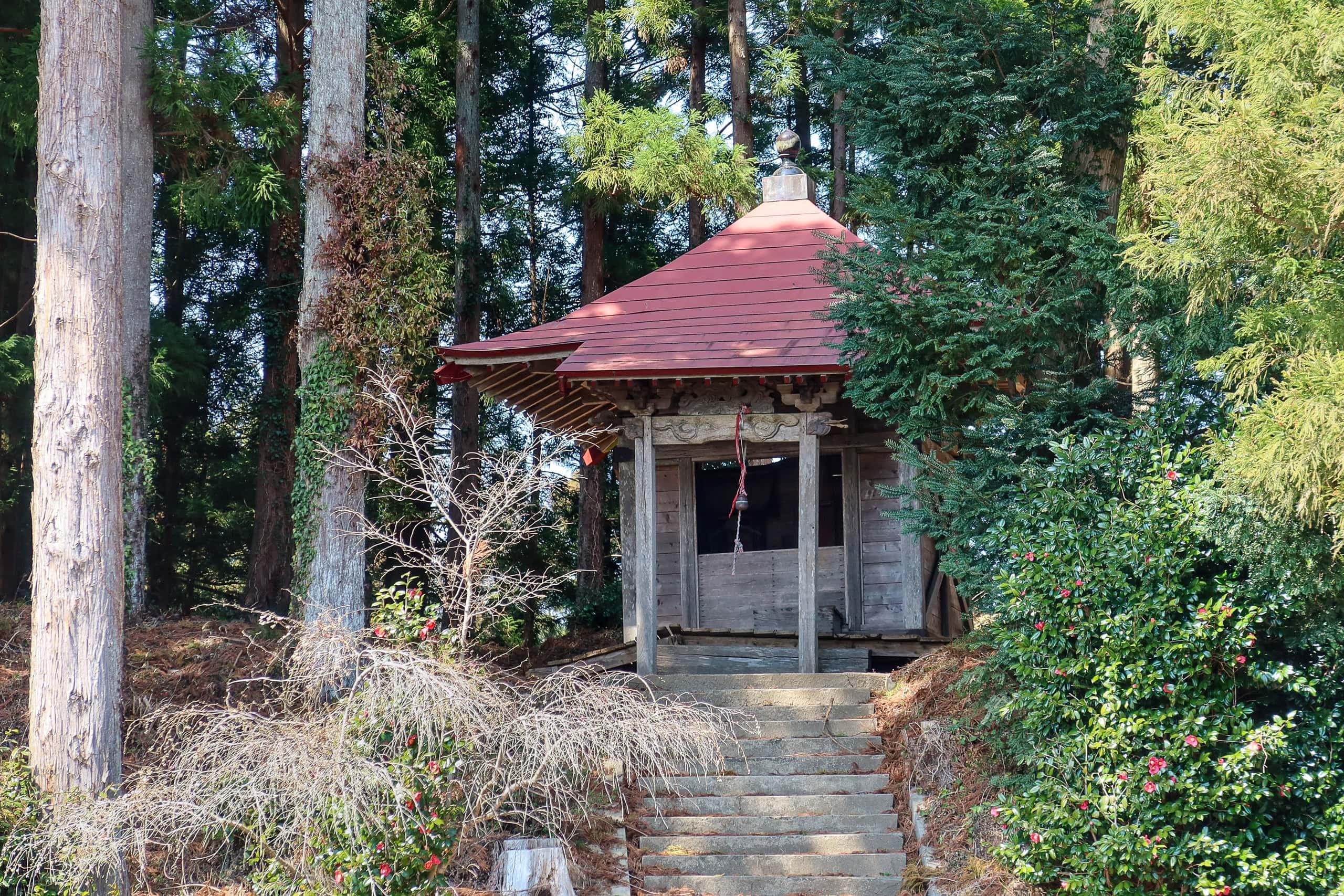
Again, many farmers’ houses here had roofs covered with blue construction sheets. Some of them actually had roofers fix the damaged parts. One house had probably decided it was time to ditch the old-fashioned heavy roof tiles and replace them with modern lightweight roof panels.
The road we were walking on had several long cracks cutting through the asphalt paves. They were undoubtedly the scars the recent two strong earthquakes left.
Even the village guardian god could not escape the savage Earth’s whim. The lintel of a big stone shrine gate had fallen and broken into two, lying on the ground.
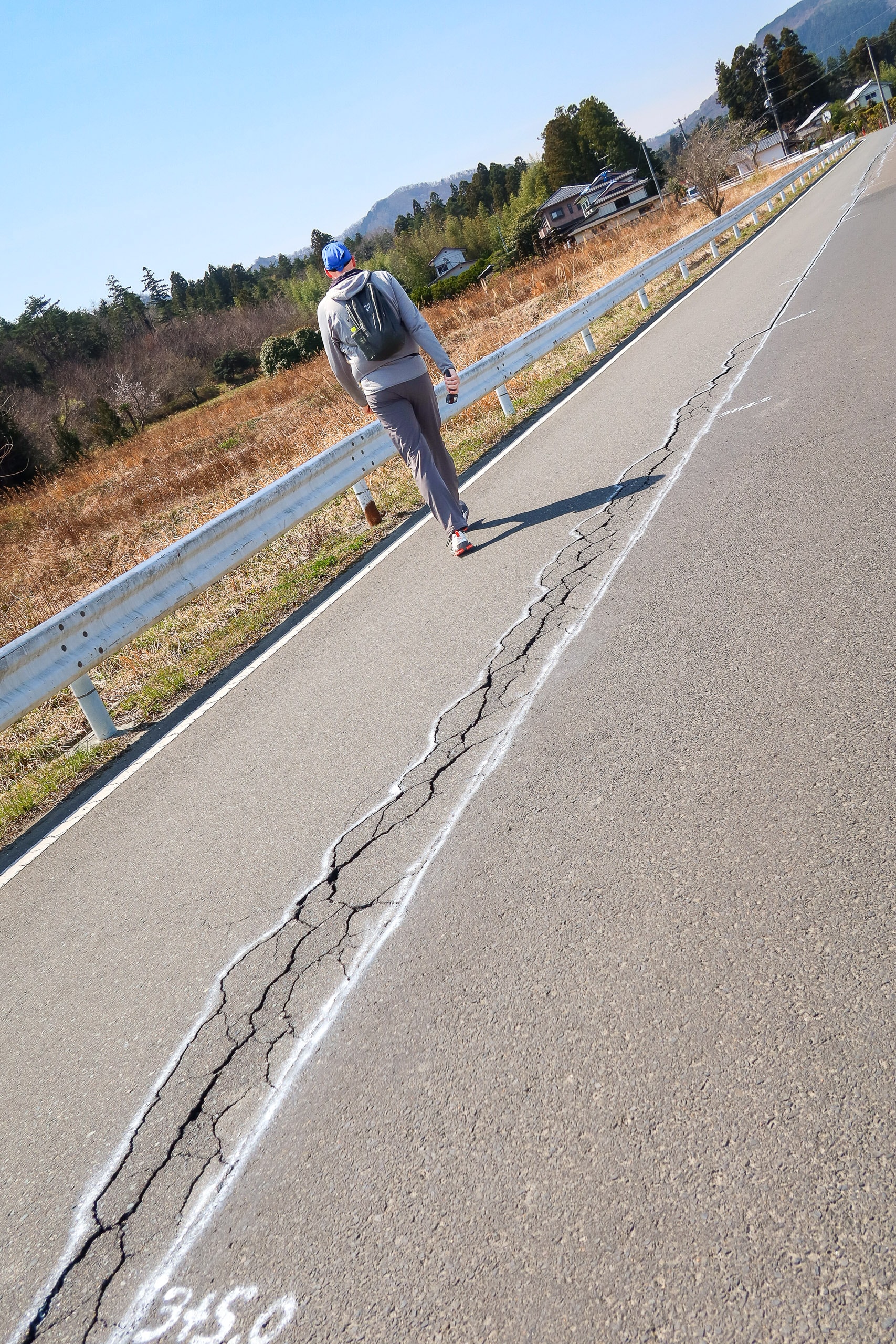
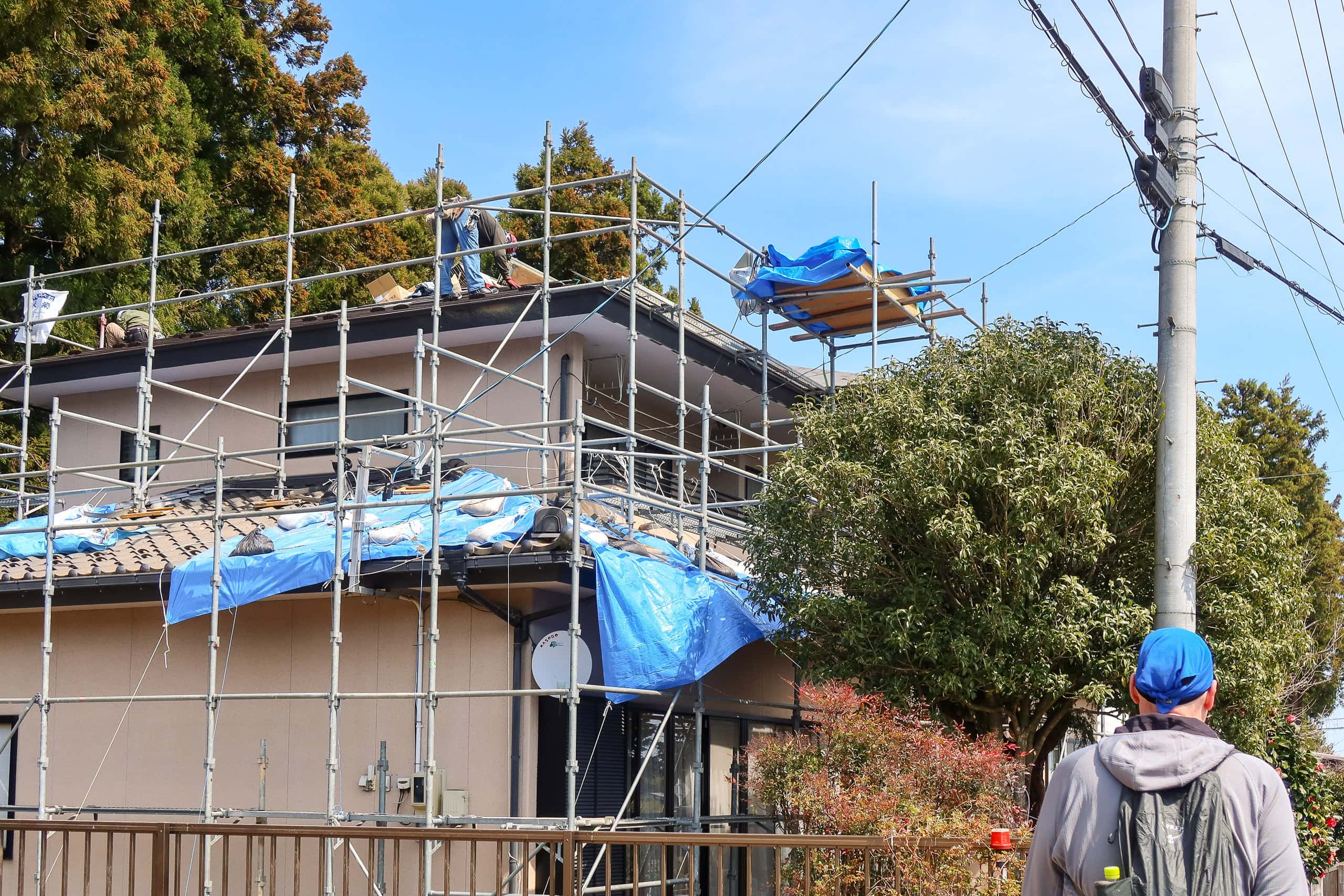
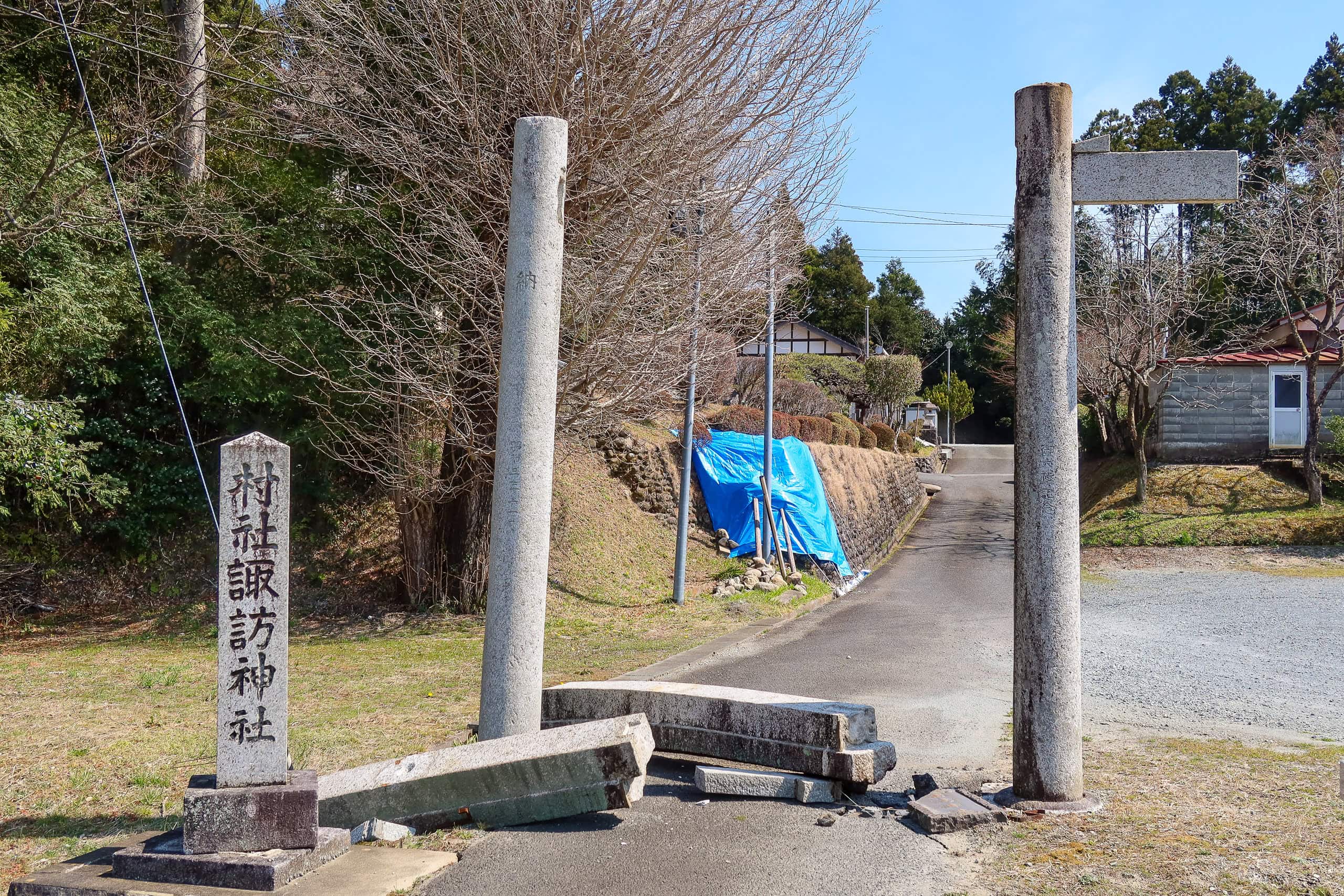
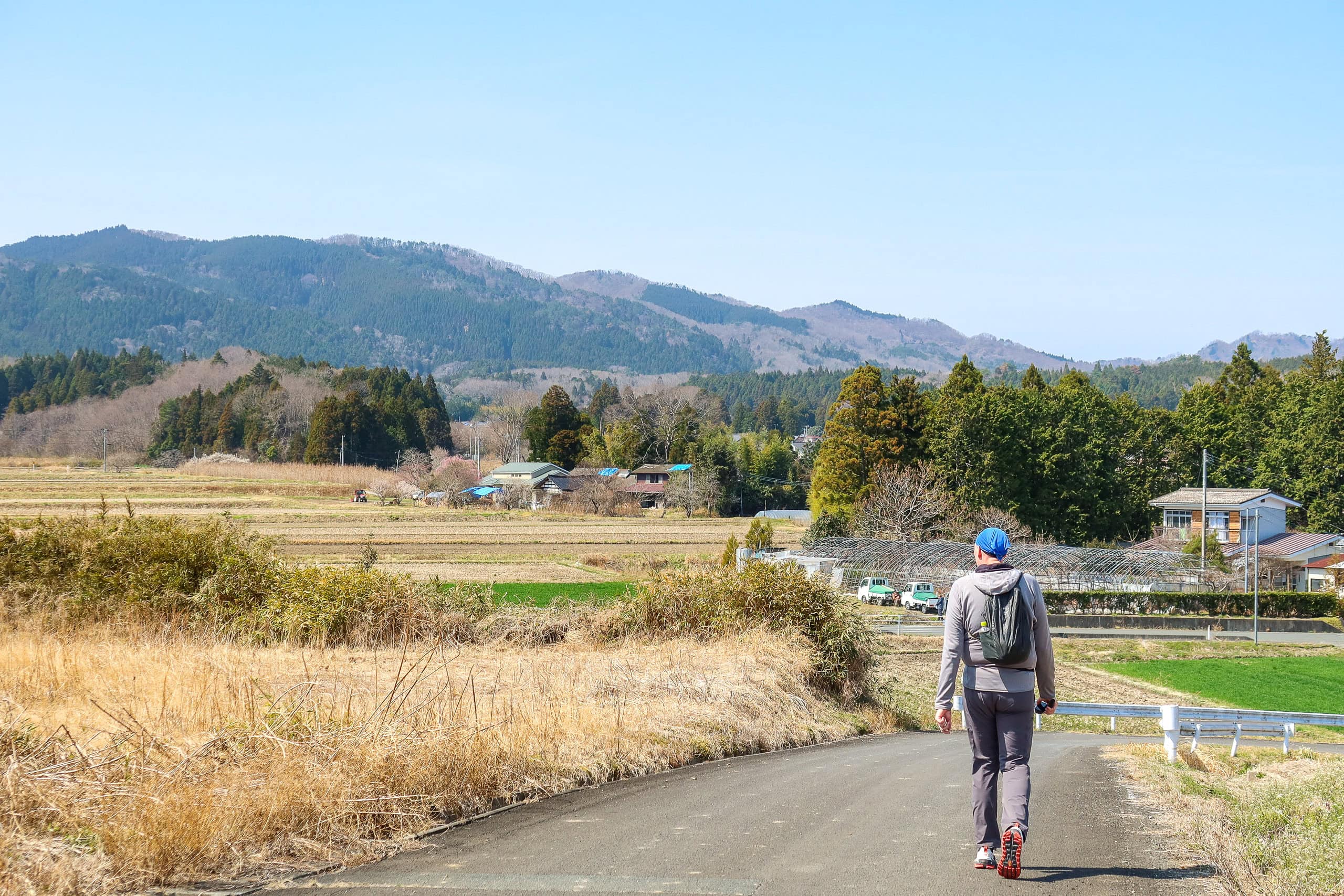
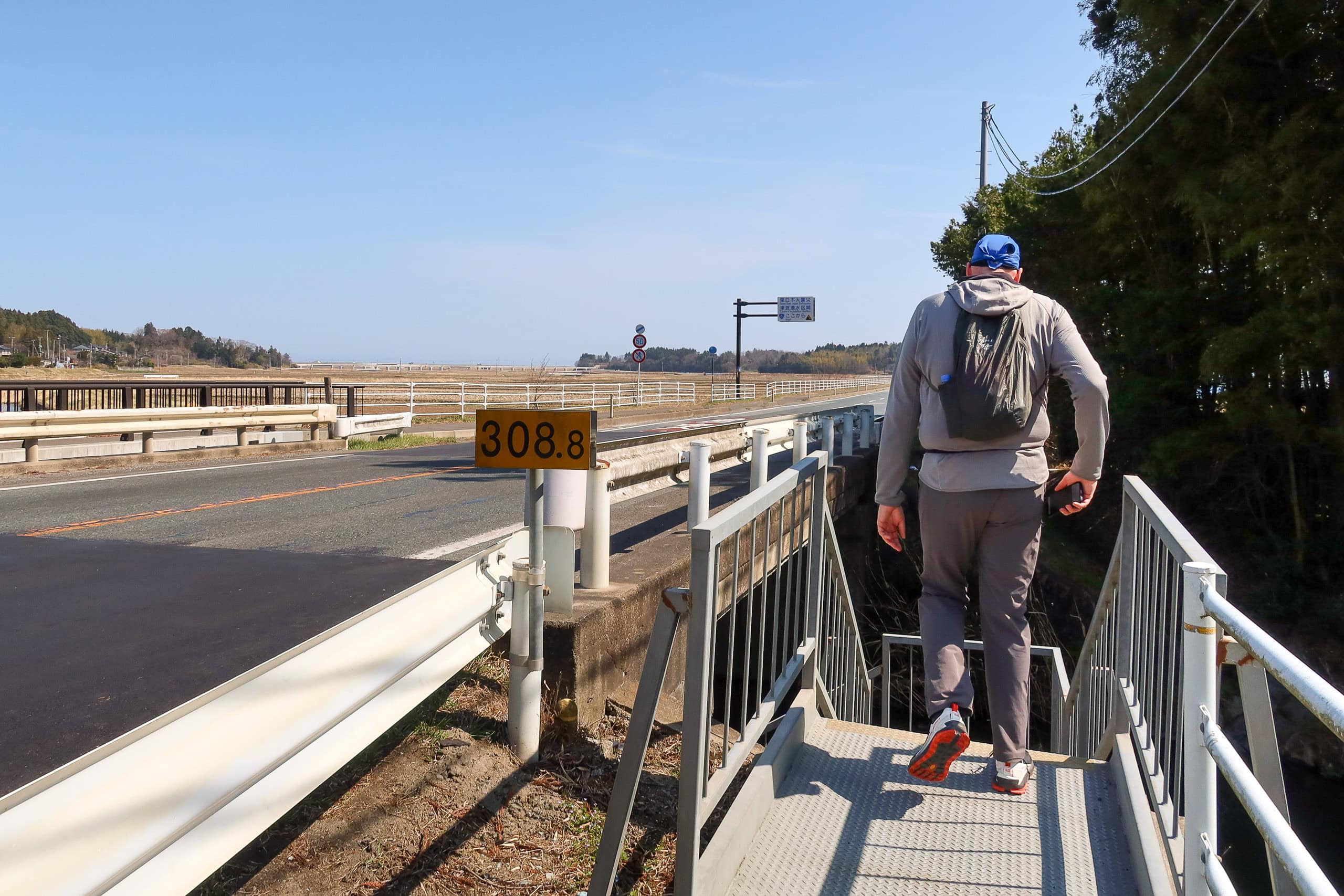
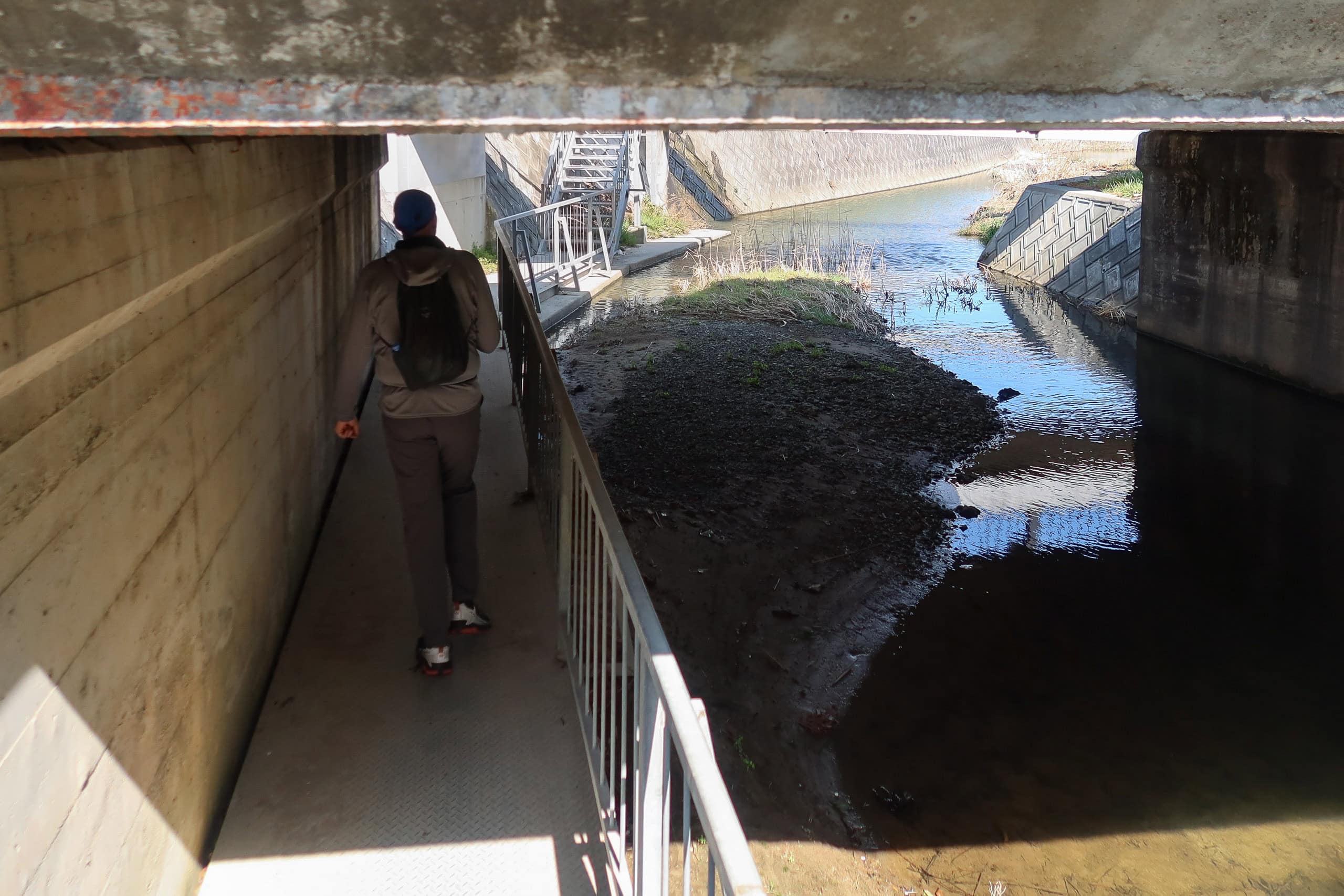
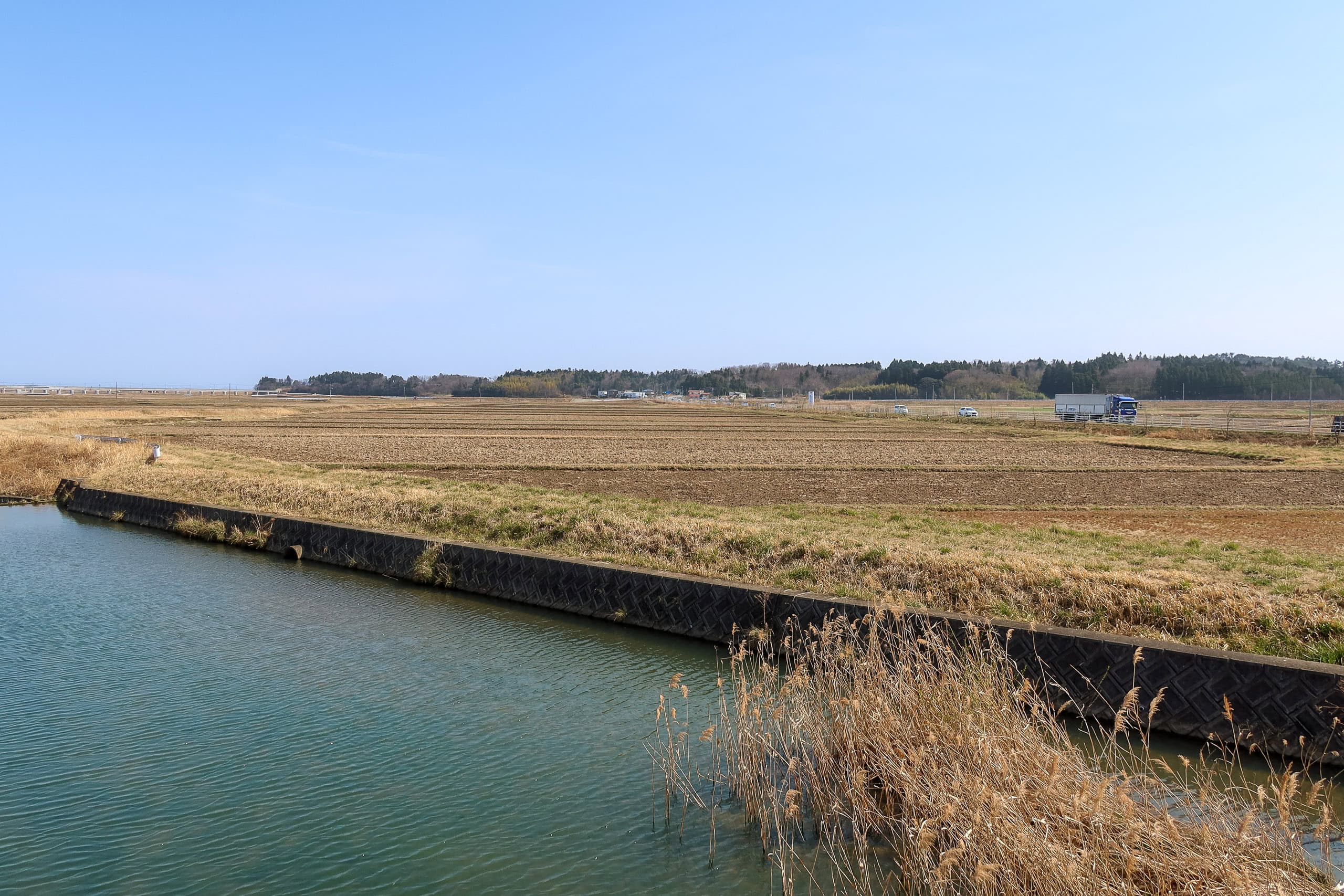
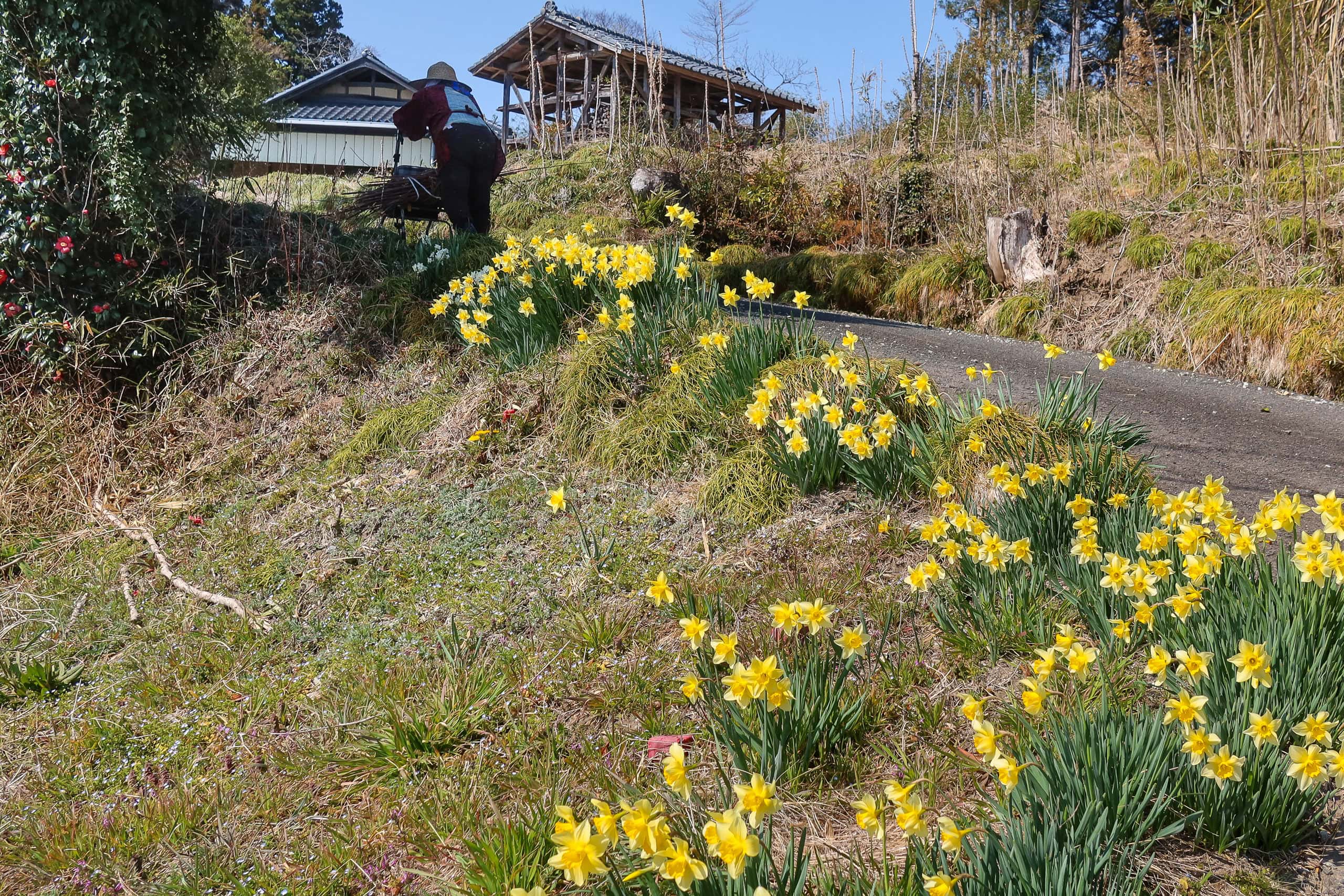
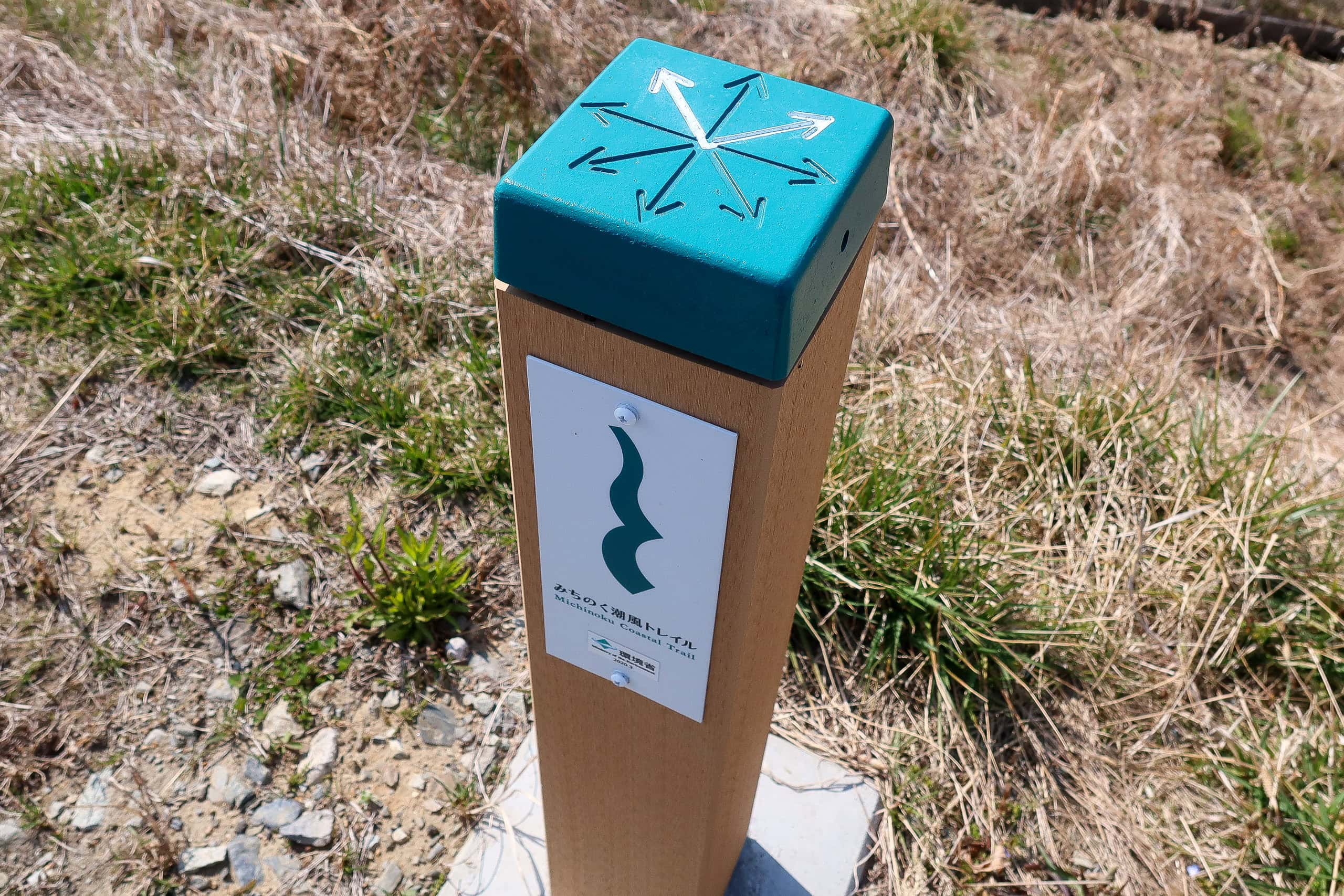
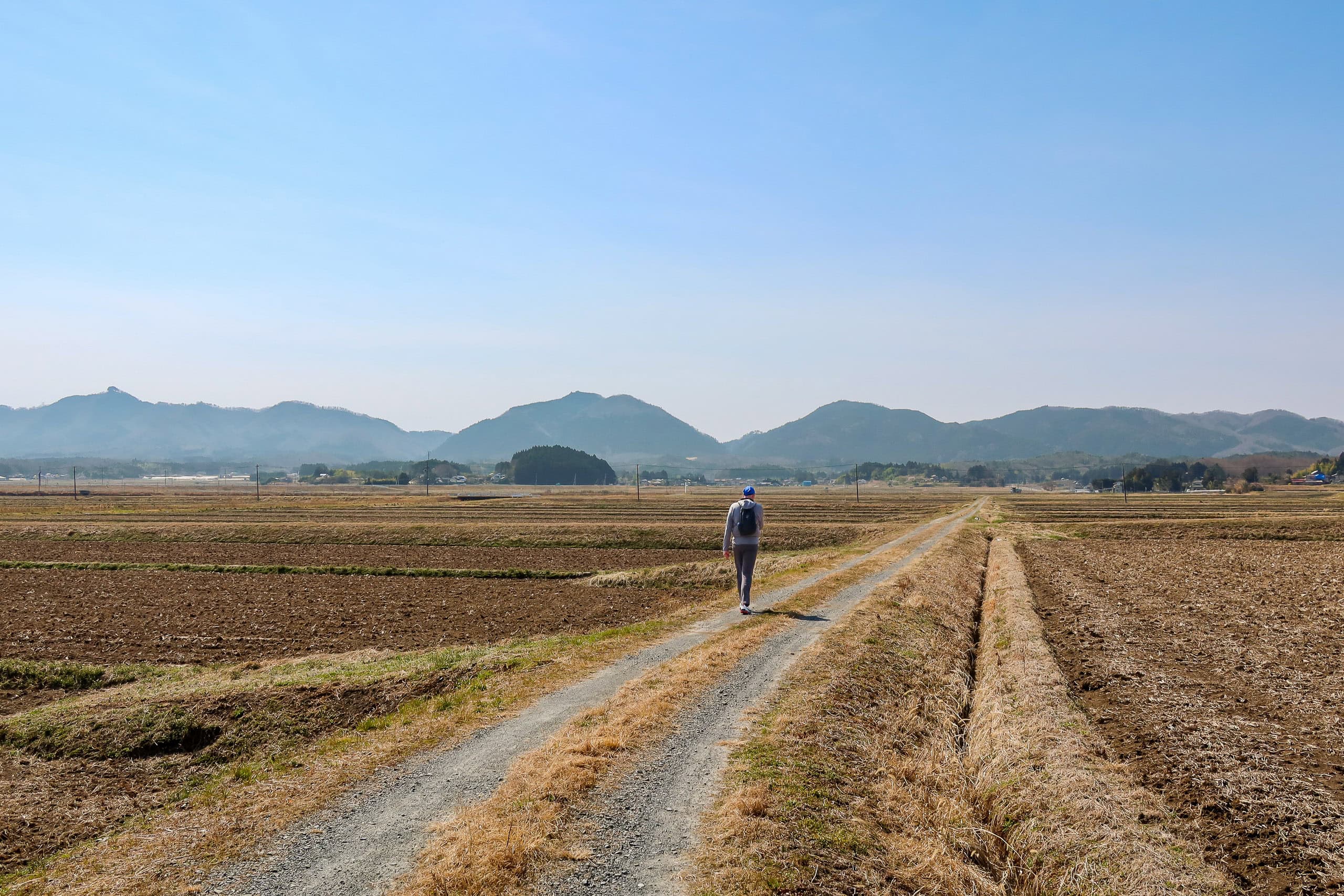
While crossing under the elevated train tracks, we found a modest road sign with two plates showing us their backsides. Passing and looking back to see the front sides, we were informed that we just left not only Shinchi Town but also Fukushima Prefecture!
Hello, Yamamoto Town 山元町 and Miyagi Prefecture 宮城県.
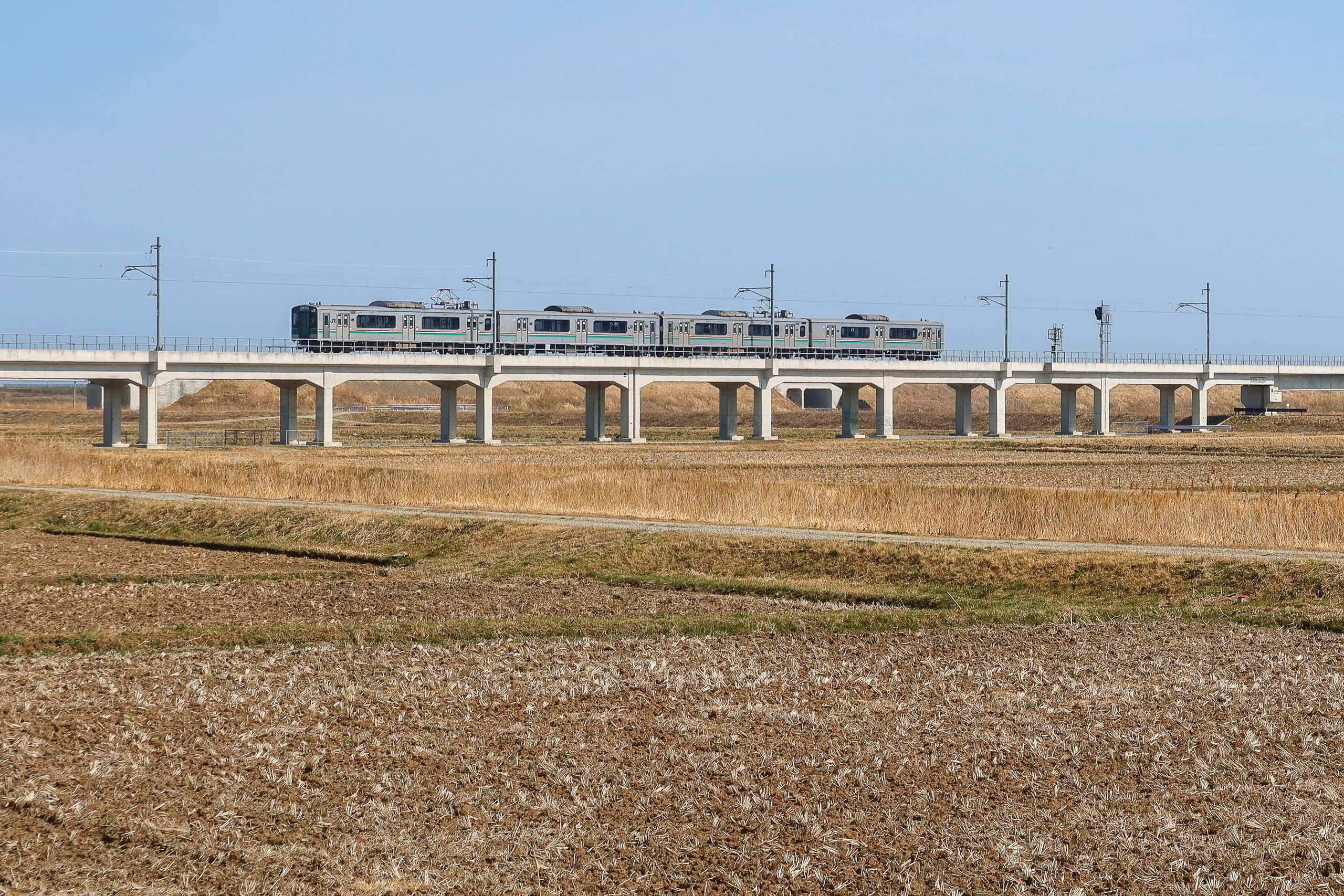
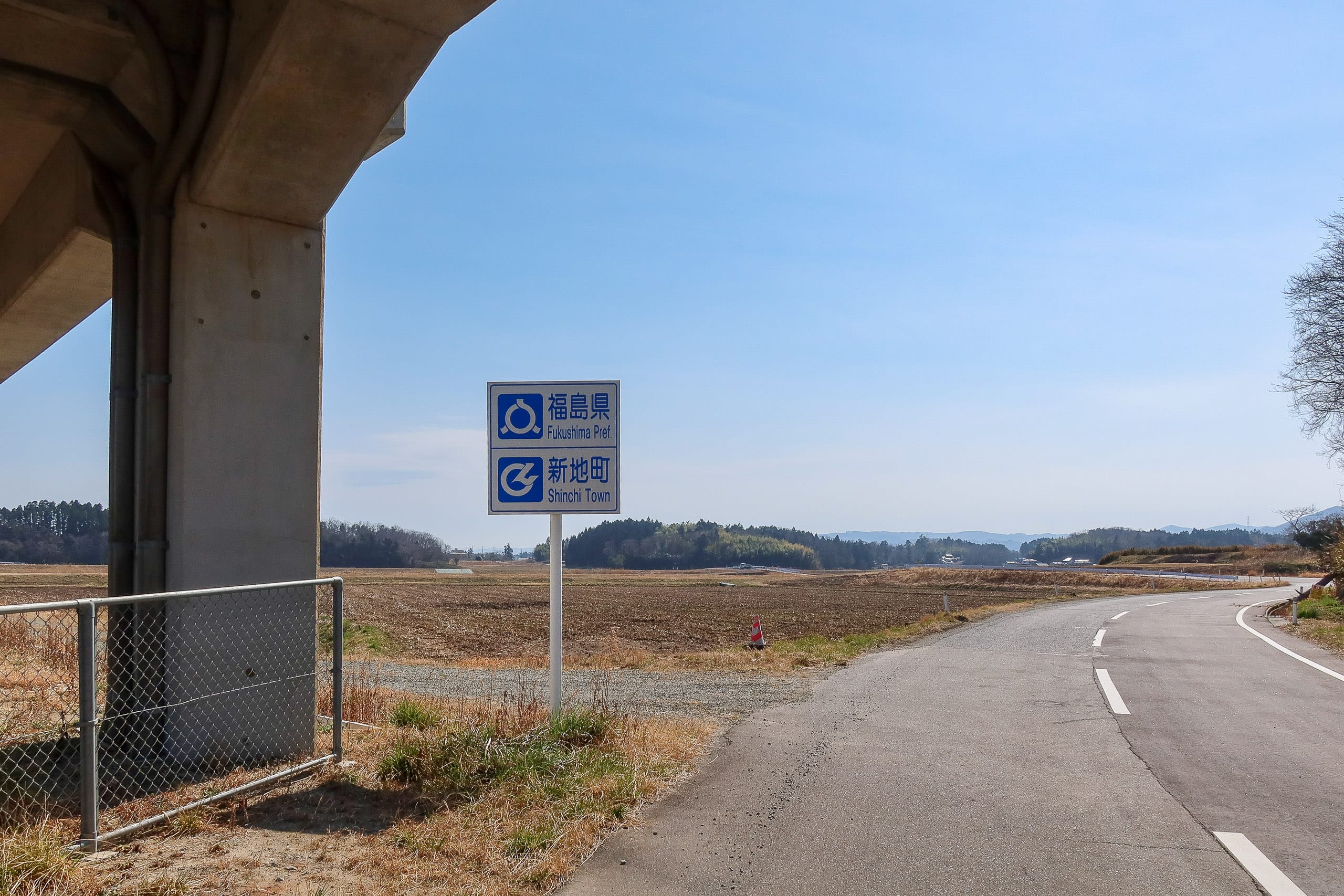
The MCT — Michinoku Coastal Trail crosses four prefectures on the Pacific Ocean side of the Tohoku region. However, its significantly big parts are in Miyagi and Iwate prefectures. Iwate is indeed a big prefecture and actually has the 2nd largest area of Japan’s 47 prefectures, next to the absolute winner, Hokkaido.
On the other hand, despite its third-largest position, the Fukushima prefecture part of the MCT was only a one-and-a-half-day walk for us. We really wished the MCT had covered the entire Fukushima coastline.
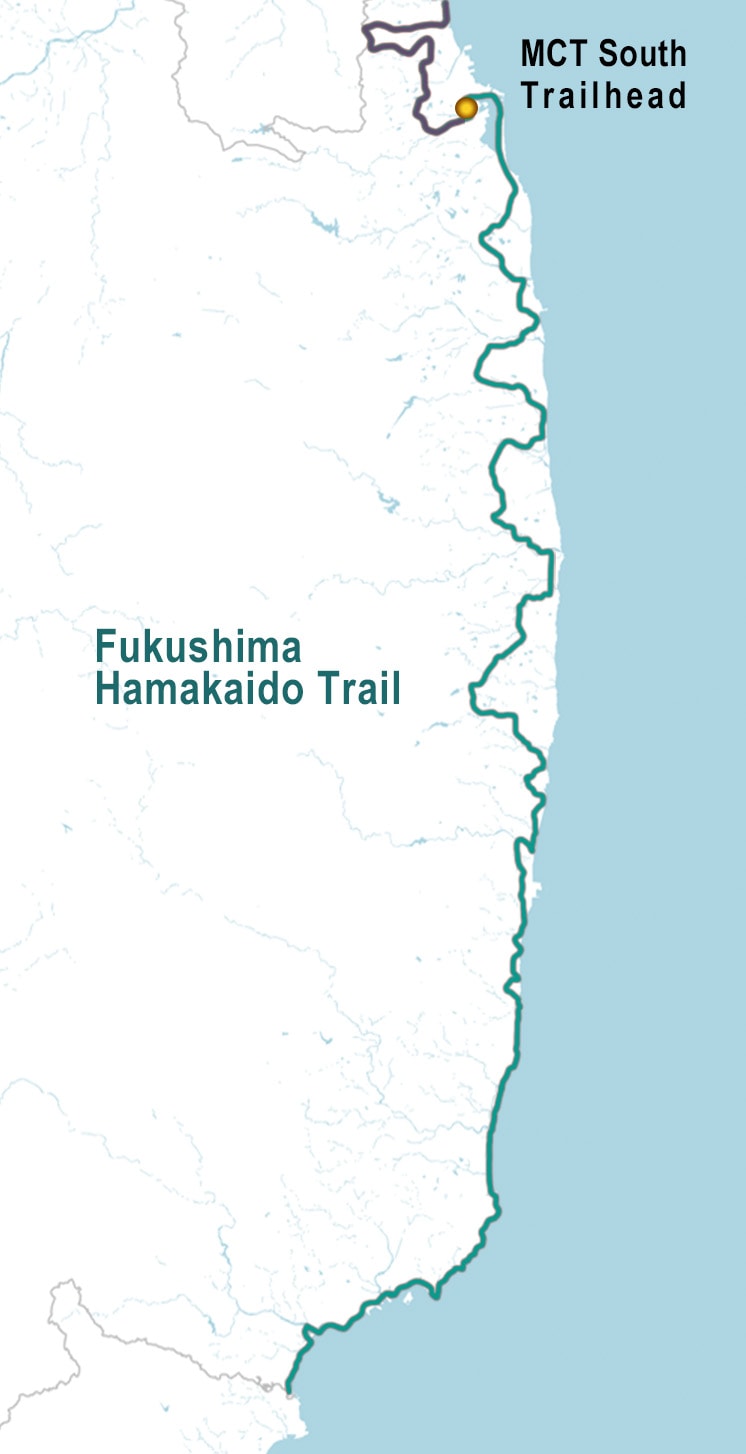
The Fukushima Coastal Trail ふくしま浜街道トレイル is a new addition to Japan’s long-distance trails.
Officially opened in 2023, the route runs through Fukushima prefecture’s entire Pacific Ocean coastline.
Though the FCT has its own northern terminus, part of the last section directly connects to the MCT’s south terminus and uses the same route we walked on Day 1 and Day 2. After the Ukon Shimizu spring well and the cherry pond, the route splits from the MCT, returning to its original route to its north terminus.
So now, the MCT hikers can walk an even longer route that covers all four prefectures’ Pacific Ocean-side coastal areas in the Tohoku region.
The fomer Nakahama Elementary School
Shortly after we entered Miyagi Prefecture, we crossed a newly built wide car road without a pedestrian crossing or traffic light. However, there were no cars in either direction at that time. As the map shows, we were supposed to cross the land diagonally. It was an open space without any path, so we could have still crossed it if we really wanted to. But whether we took a narrow road around the space didn’t make a big difference. This was a really minor route adjustment compared to the significant detour of the construction area we encountered at the beginning of Day One.
Then, we found ourselves in the middle of a massive, empty land stretching all the way to the horizon. Except for the continuing earthen banks, concealing the sight of the sea from us, there were no trees or buildings on the vast, flat land. It was a bit eery to see a new straight road and a line of concrete utility poles continuing through the sandy land covered with yellow, dried grass.
The sun had been determined to fully oppose the last night’s weather forecast. So much for “ the chance of occasional rain.” It was just getting hotter and hotter as time went by. Now, here we were, alone on the sun-shieldless flat land. According to the map, this situation would continue for four more kilometers. We were sure we would be very hot and fully aware that we didn’t have anything to hydrate ourselves anymore…
Though the paved road was supposedly the MCT route, we were walking on a dirt road next to it, running at the edge of the dead land. We were approaching the only building around us that looked like an office and warehouse in the desperate hope of a possible vending machine.
So, no exaggeration, we got ecstatic when we saw something standing by the building, the precious bright red cuboid — not only one but two!
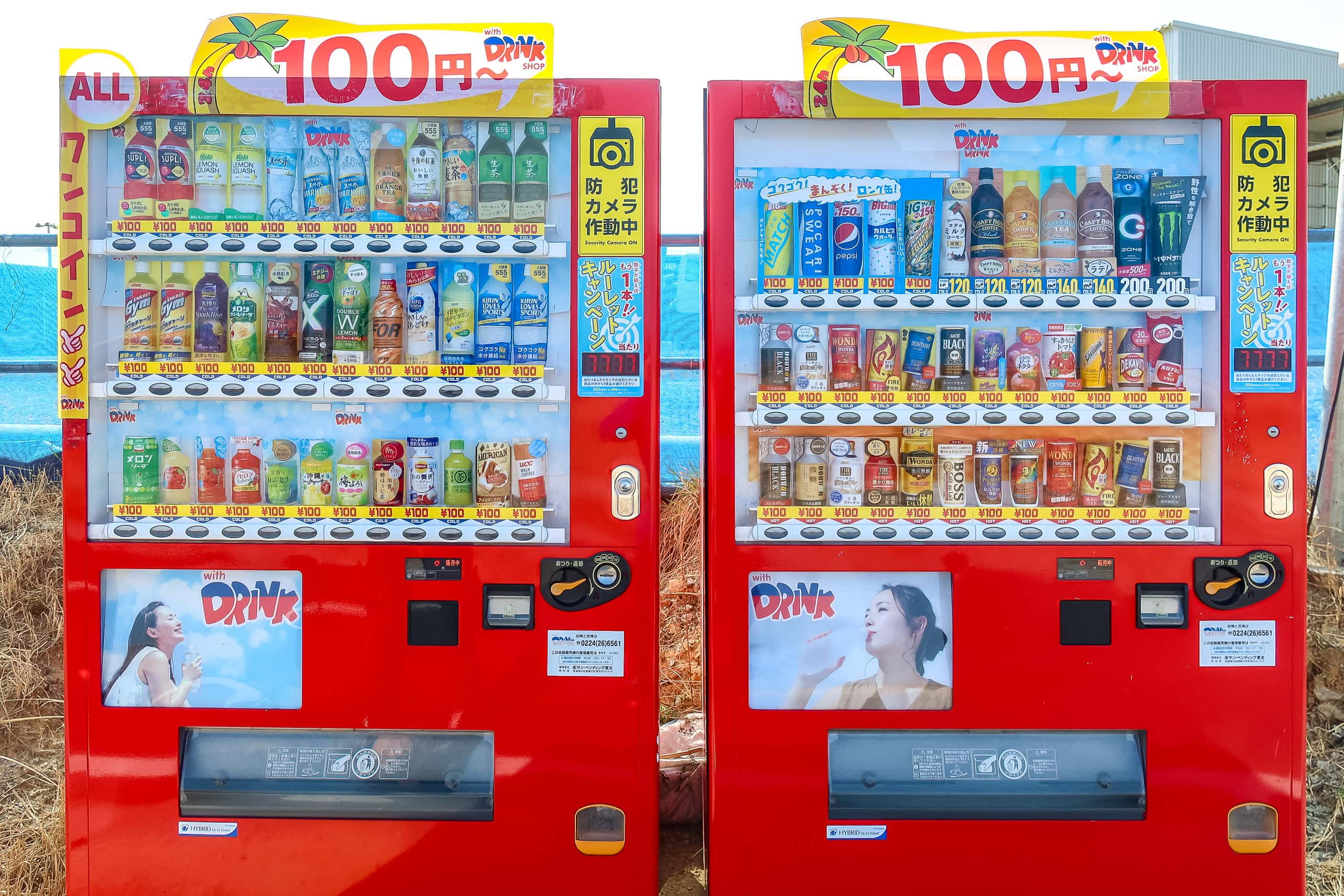
Not only the two vending machines were god’s blessing, savior of life, but also almost all drinks they sold were just 100 yen, cheaper than the standard price then.
We had a quick canned refreshment on site, and I reserved another bottle of my favorite melon cream soda.
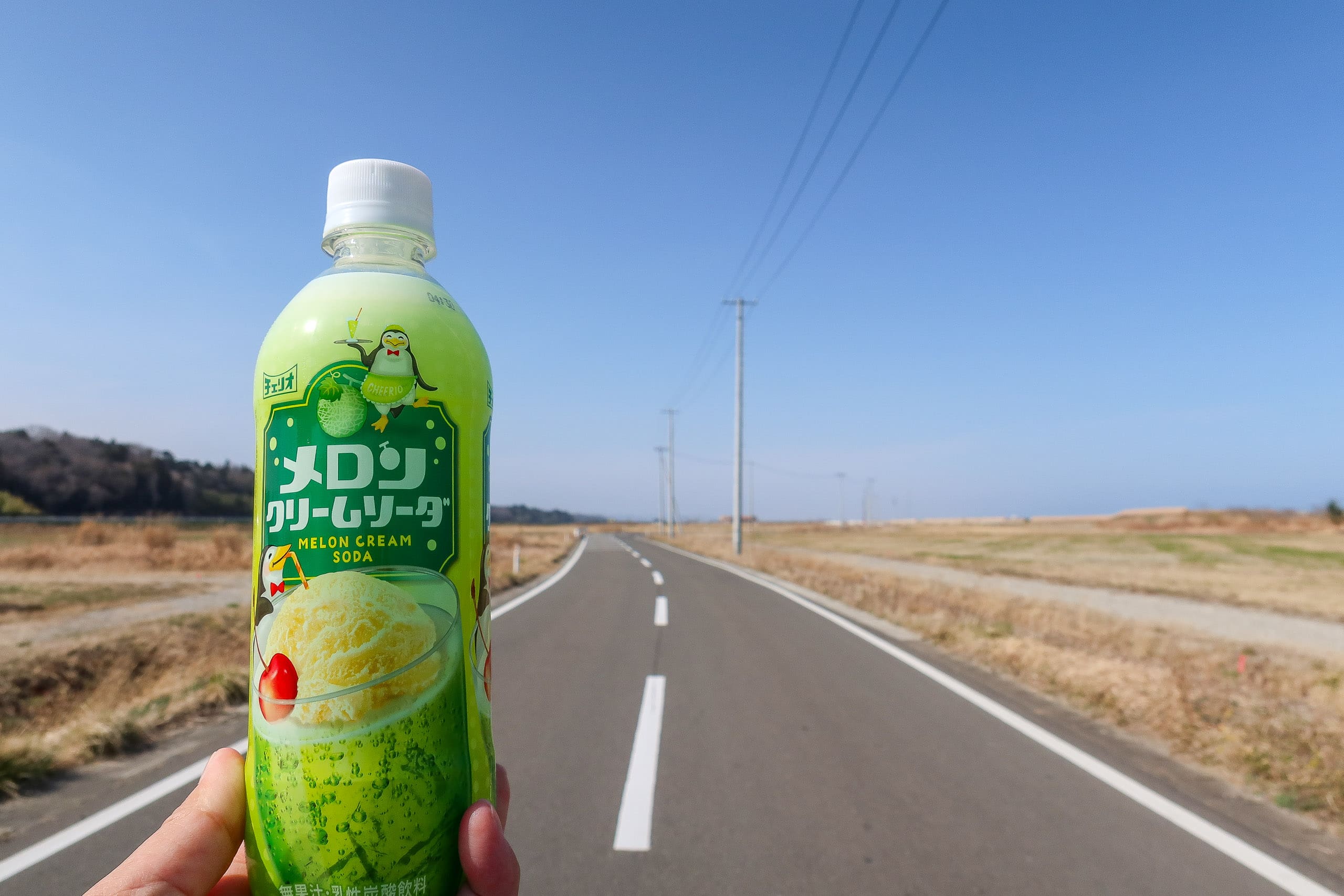
As we were walking on the wind-howling empty land for about 2.5 kilometers, a tiny orange-ish spot on the horizon gradually shaped something like a box-shaped building. Google Maps indicated there would be a memorial site, so that must have been it.
As we were getting closer to it, it looked like a school building — but half-destroyed.
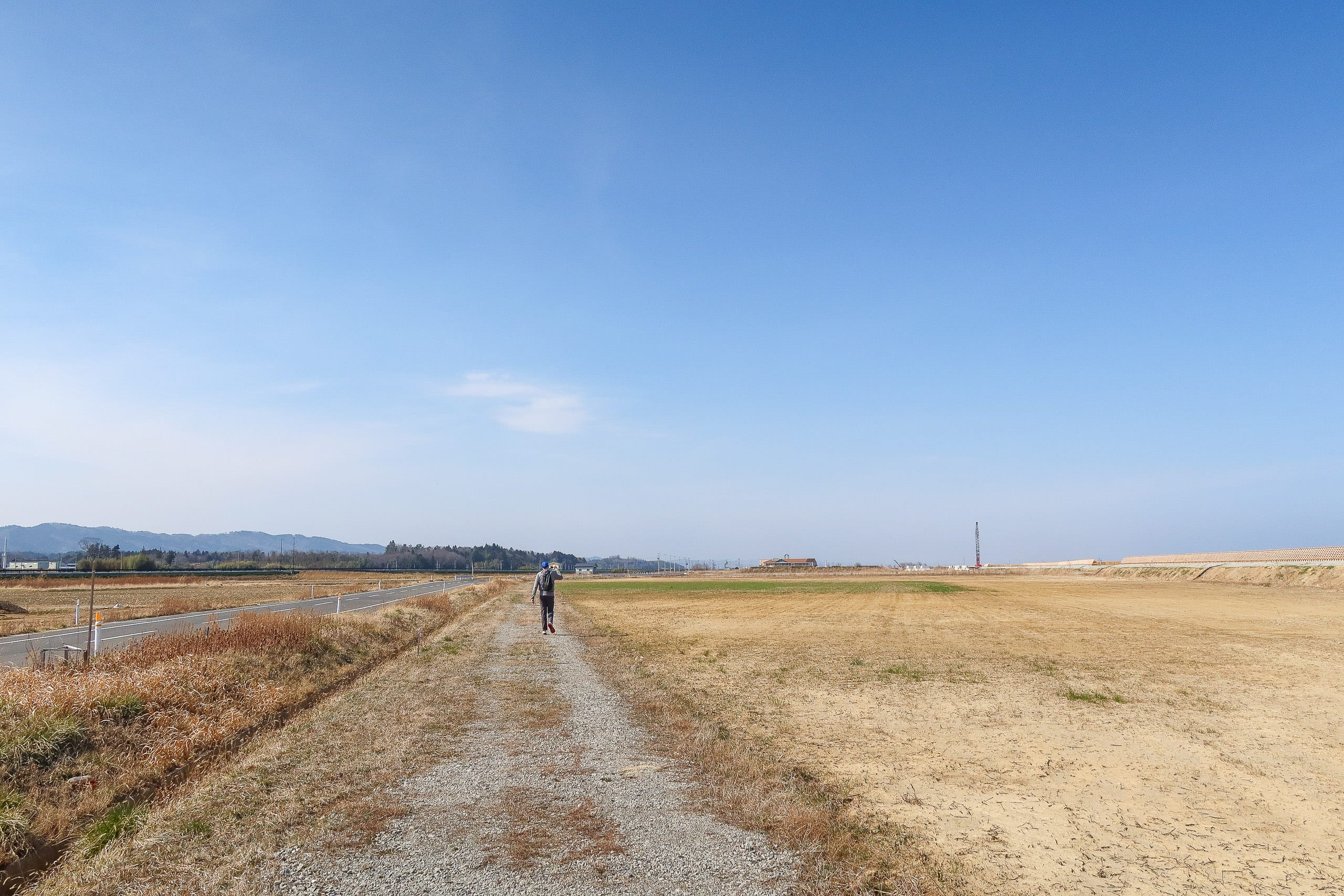
The building of the former Nakahama Elementary School 震災遺構 中浜小学校 were the only remaining disaster ruins in the southern Miyagi area destroyed by the Great East Japan Earthquake and the following tsunami in March 2011.
It was kept there, open to the public, as a museum to show what happened that day.
The deserted land we had been walking used to be a seaside village filled with houses and lives.
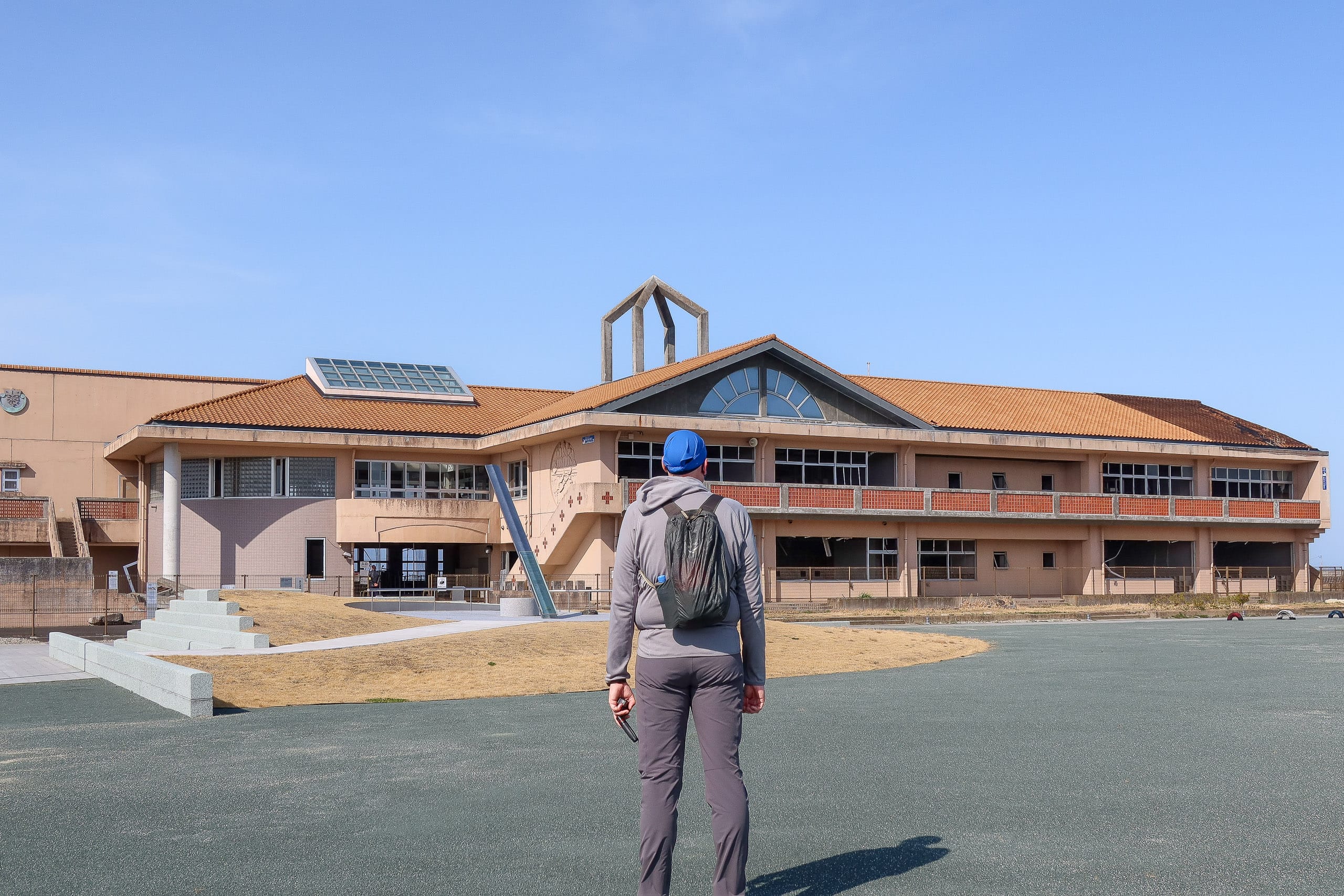
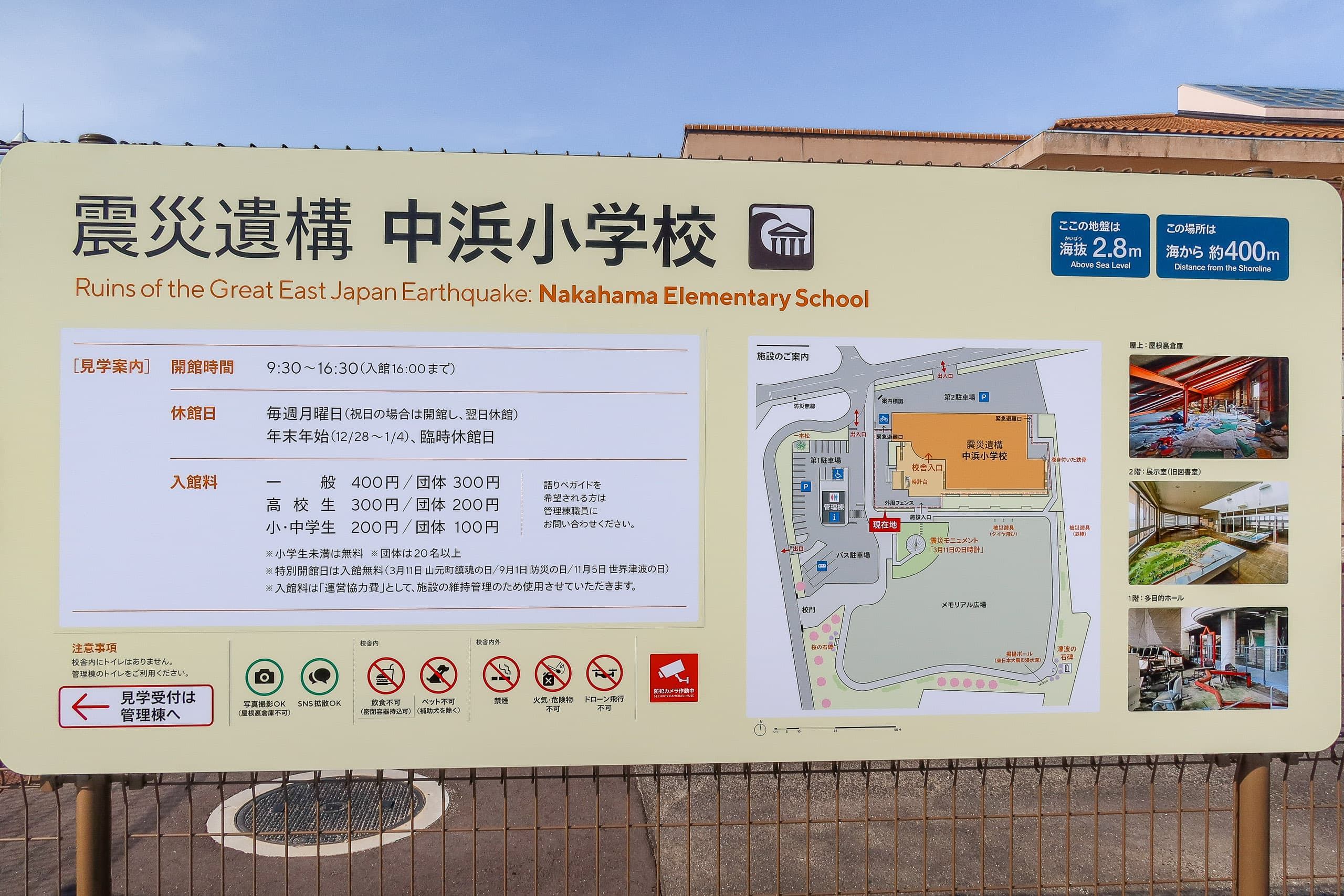
A local elder in a staff jacket stood by the school gate and encouraged us to see inside the building. He was amazed that we had come all the way from the Shikoku region and were walking the entire MCT. The younger lady at the ticketing box had the same reaction.
We entered the school building after using the new and modern bathroom in the ticket box and admiring the vending machines there (but did not buy any).
The first and second floors of the building were totally destroyed classrooms. The walls and windows were gone, so each floor looked like one big hall with piles of rusty student desks and chairs stuck on one side.
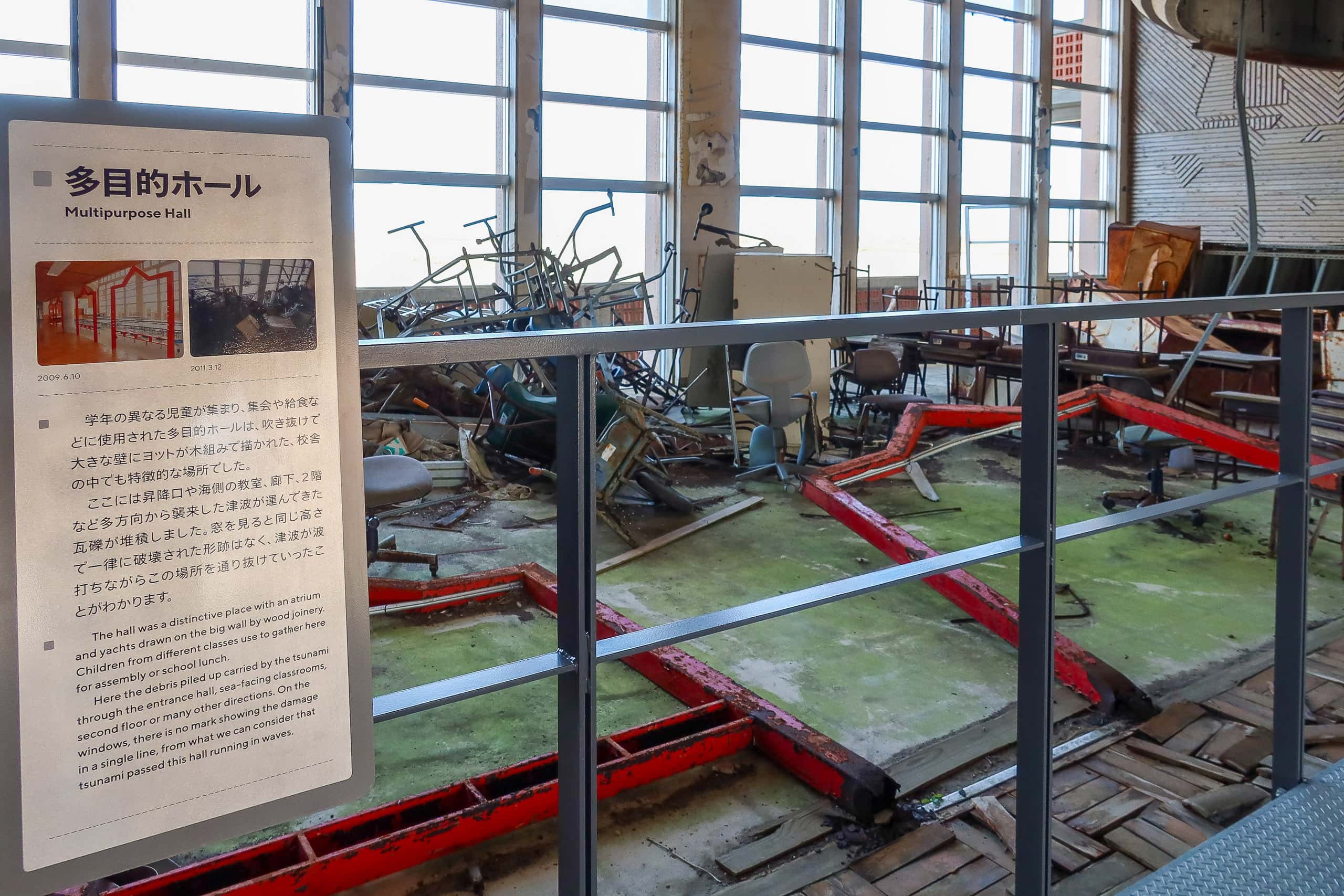
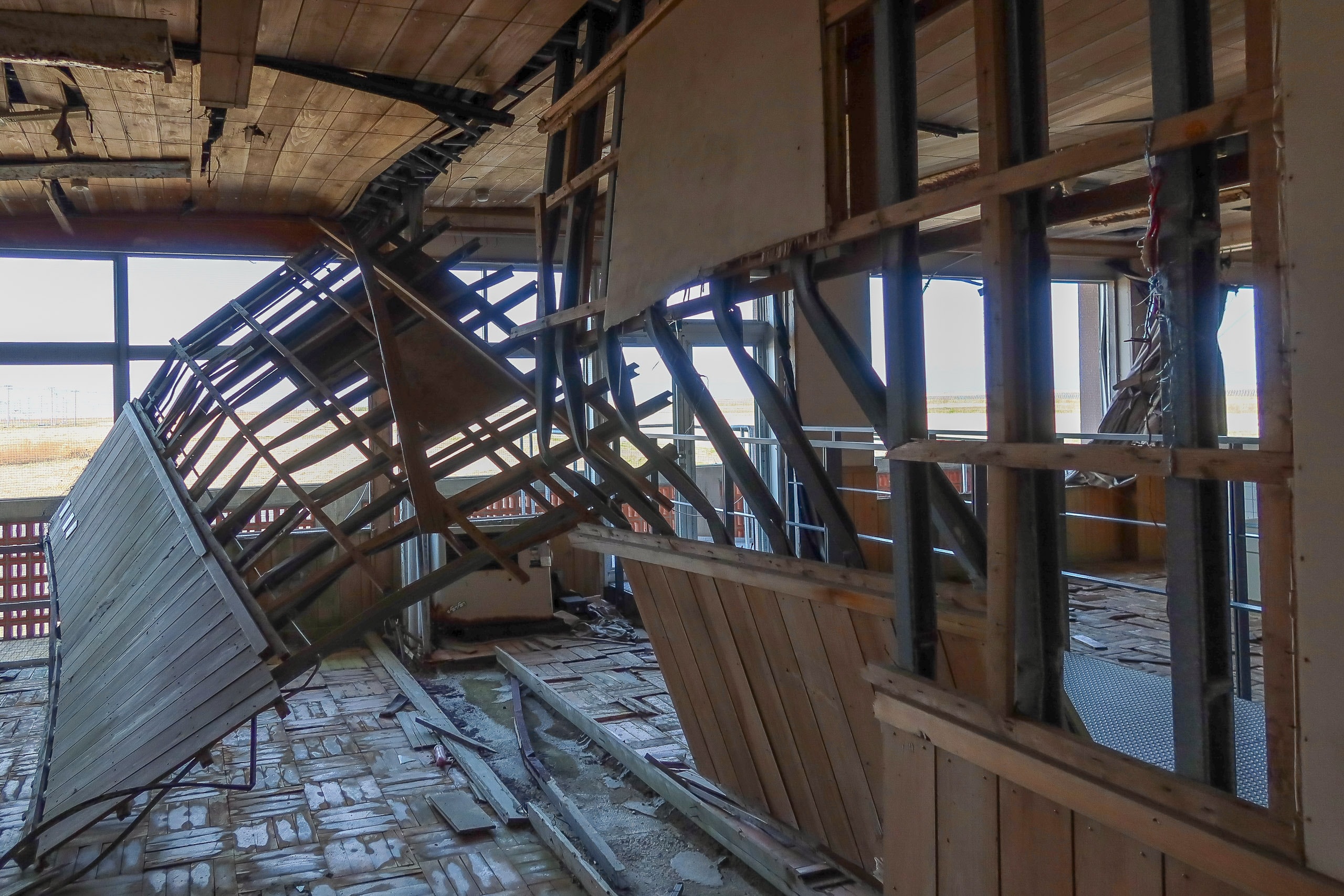
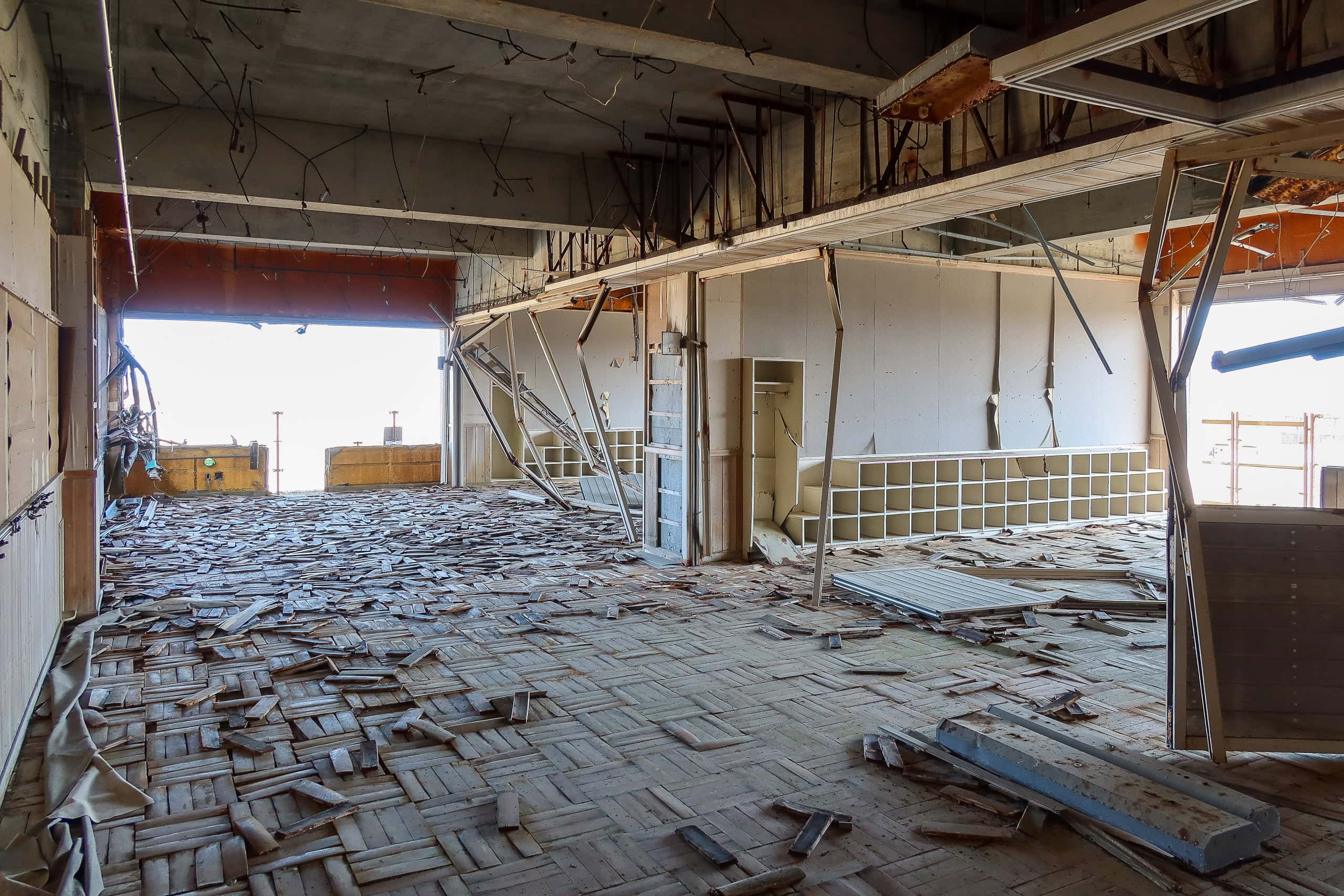
After we walked through the floors, a volunteer guide, another local elder, asked us to watch a short documentary film and take a special guided tour of the attic. There, all the kids and teachers evacuated and survived while the tsunami was washing away not only their school but also everything in their hometown.
They had to stay there and endure a couple more cold and anxious nights, not knowing their family’s whereabouts or even their safety, until the water withdrew and they were rescued.
We wish we could have had more time for it, but we had to go to make it to today’s goal on time.
All or at least some of the friendly staff volunteering at the school ruin might be former residents of the disappeared town…
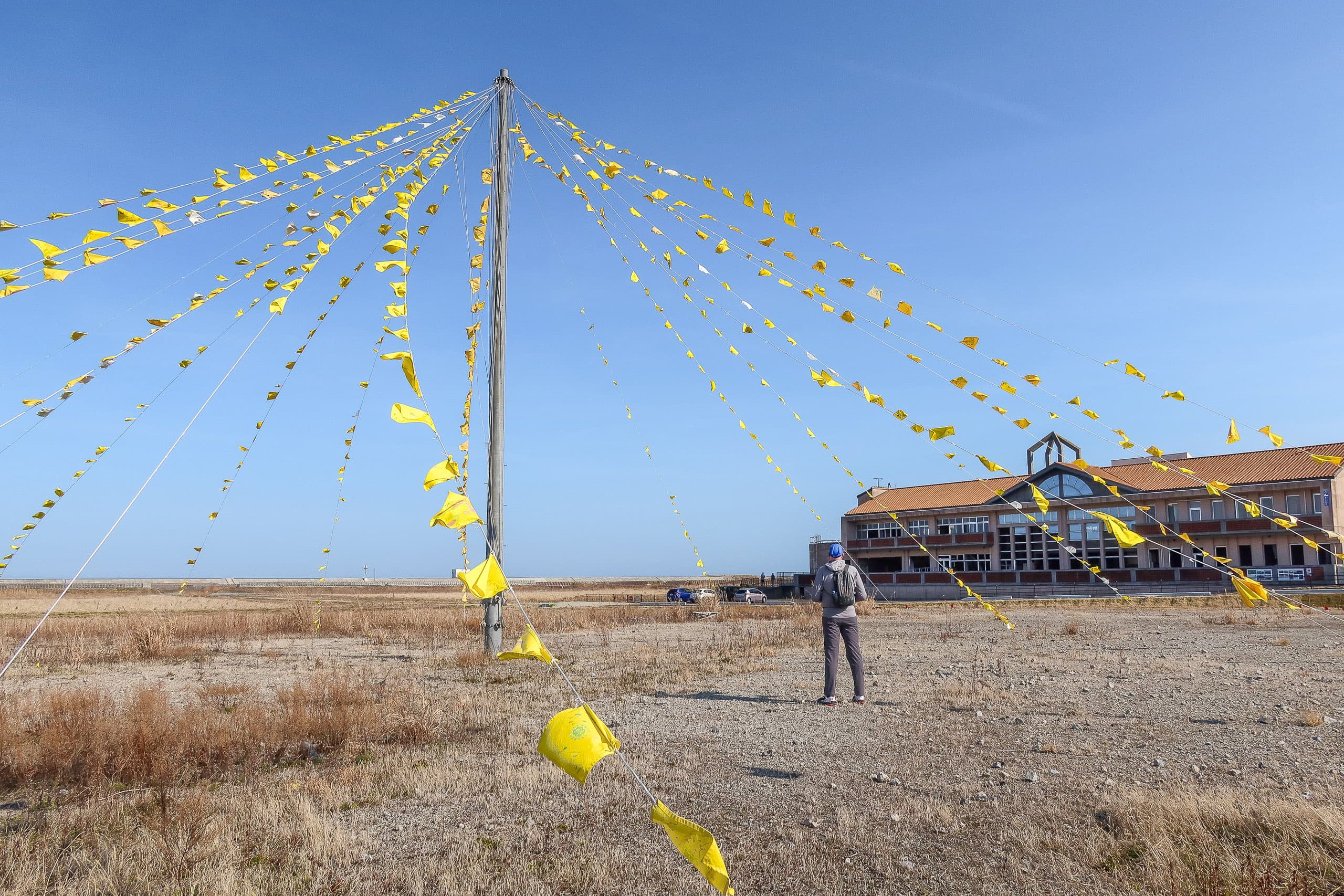
A surprise encounter
We were back on the quiet road in the deserted land and walked a bit shorter than a couple of kilometers. The MCT map book warned that this road would have heavy traffic of trucks and construction machines, but thanks to Saturday, it had been complete silence.
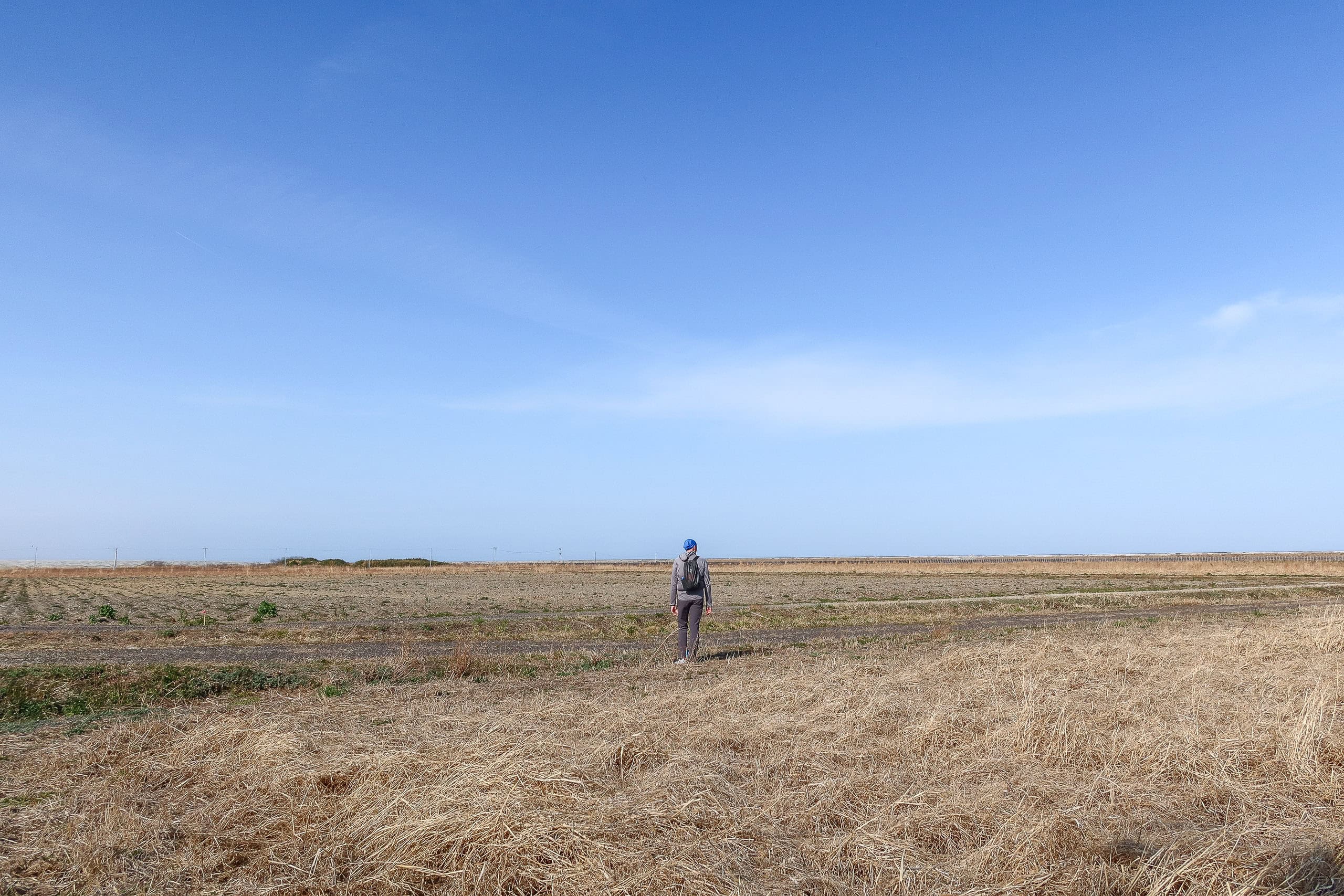
Finally, the road reached the Sakamoto River 坂元川, where large-scale construction was underway to strengthen the river banks. The small bridge we were supposed to cross no longer existed. Instead, we crossed a newly built larger bridge.
The old small bridge would have directly connected to the farming road through the earthen paddies area, but we didn’t bother to slide down on the now pathless slope of the river bank just to strictly follow the route shown in the map book. Taking the alternate straight path on the riverbank quickly led us to rejoin the original route.
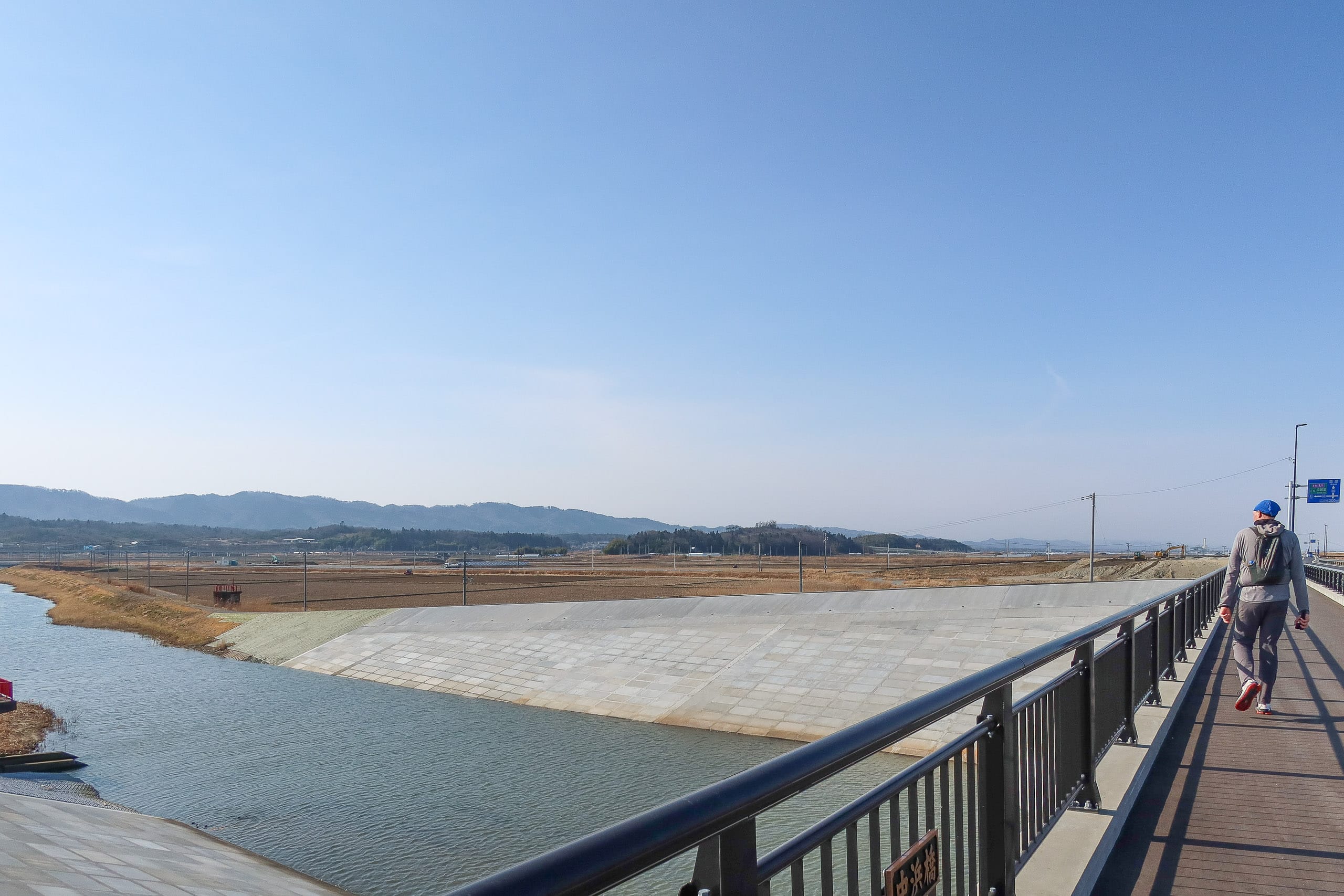
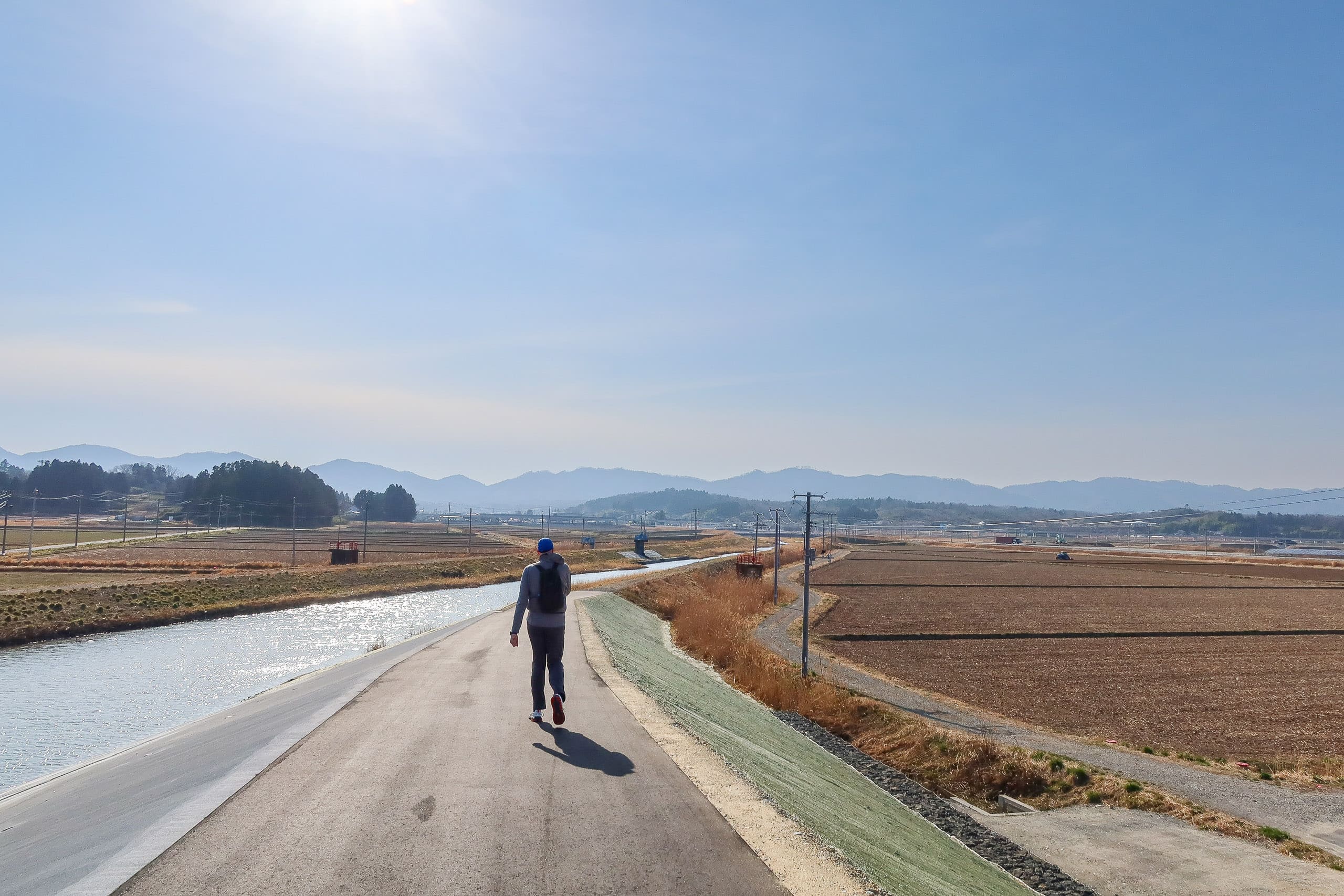
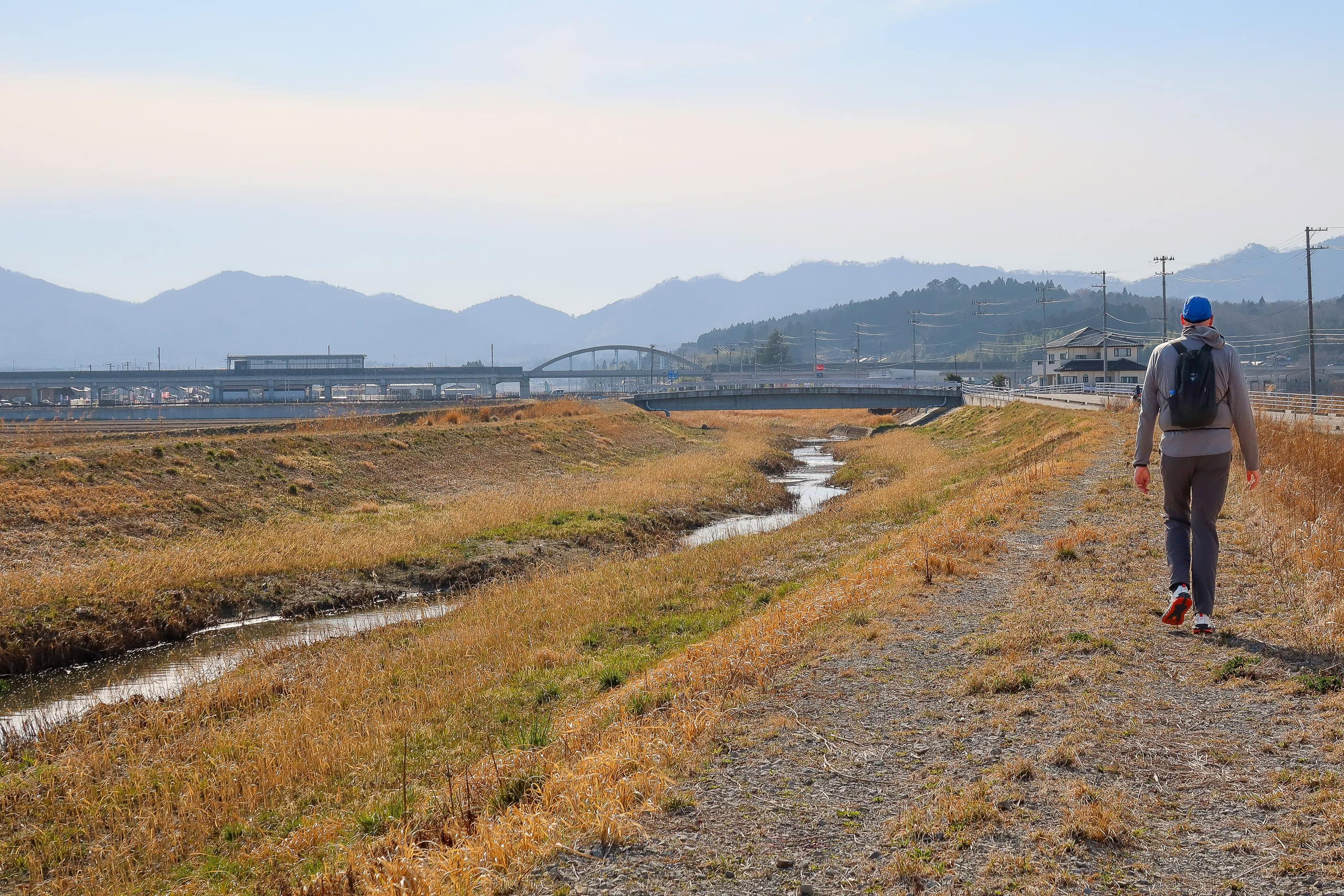
We passed under the elevated Sakamoto Station and saw a convenience store next to a post office in front of the station. We realized that we had not seen any “conbini (native Japanese speakers’ way to call the convenience stores)” today until this point.
The last five kilometers for today was the wide sidewalk of a busy main road, R-6.
Shortly after we started walking on the road with cars on both lanes continuously passing us, a van suddenly pulled over a few meters ahead. Curious, we were about to keep walking when a man got out of the car and waved to us. — Oh?
He introduced himself as the MCT Natori Trail Center director, with whom we had personally contacted some times to ask questions and, most importantly, to arrange a special boat. (You will know what it is about on Day 7)
He and another staff member had some business in Soma City today and were returning to their office along R-6. Then, “I knew you started from the south terminus, so I estimated you should be walking around here today. I was paying attention to the roadside and spotted a pair of hikers looking like you two,” he said excitedly.
What a coincidence and pleasant surprise! It was so nice of them caring for us.
We, the combination of an average-height Japanese woman and an exceptionally tall Dutchman, inevitably stand out wherever we are. But catching everybody’s eyes is not always bad, especially on an occasion like this.
We took a photo together and promised to see him again at the MCT Natori Trail Center. Then, their van drove away to the north.
Grocery stores along R-6 and the Yamashita station area
As mentioned in the previous article about Day 1, there was no convenience store or grocery shop near Shinchi station and our hotel. So, we checked Google Maps and saw two options for getting drinks and snacks.
- The first was a convenience store on the R-6, but it was still 2.5 kilometers away from our goal for the day, which was Yamashita Station 山下駅.
- The second was a big grocery store right in front of the station.
Our pick was the convenience store, and consequently, Erik had to carry a heavy plastic bag for the last 2.5km.
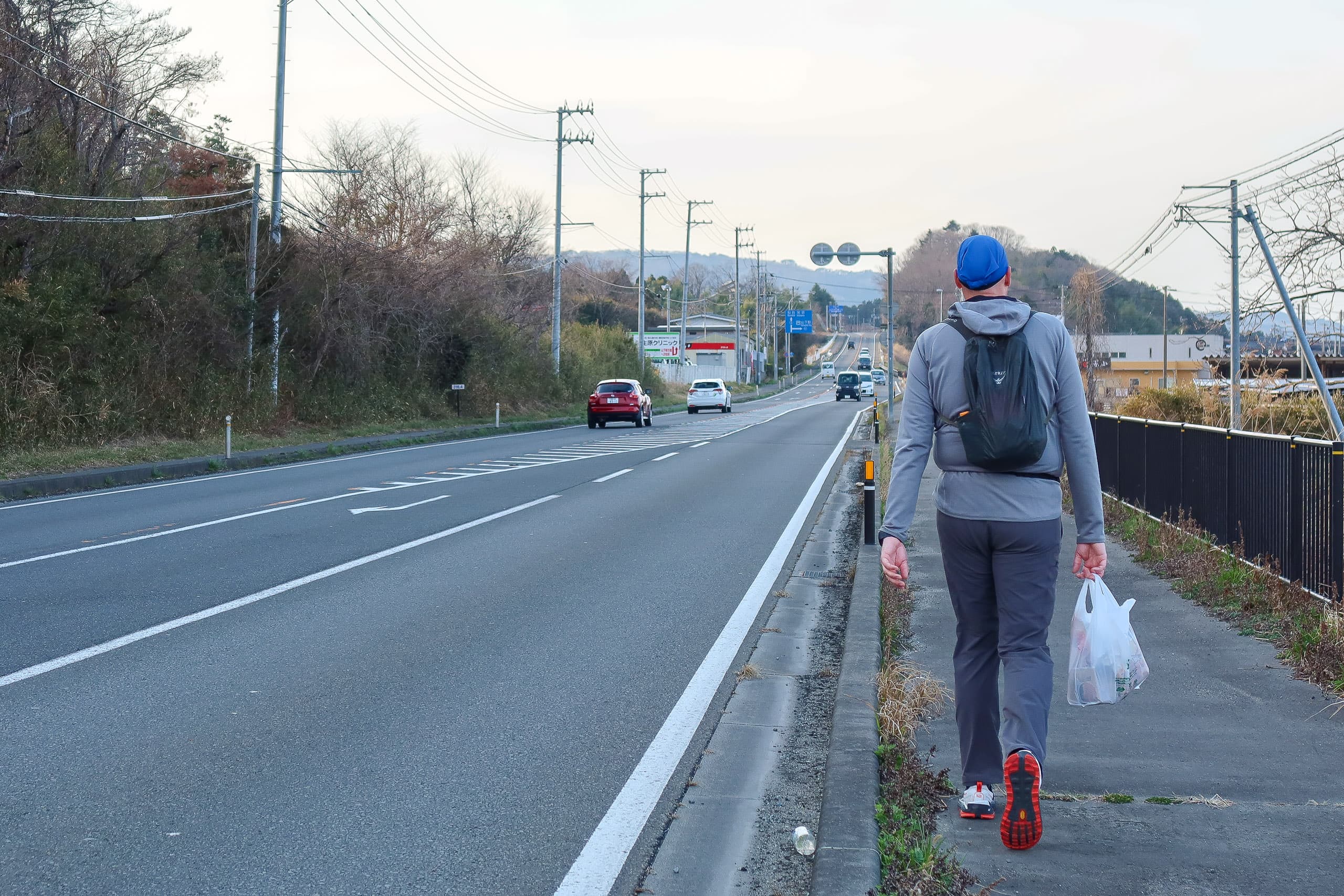
Unreasonable? Why would we need to contemplate between those two when the grocery store looked like the obvious answer?
By this point, our time to catch the train was getting tighter due to our spending extra time at the disaster memorial school and the pleasant encounter with the MCT Natori Trail Center staff. But we must not have missed grocery shopping before getting on the train because we had to get not only tonight’s snacks but also the next day’s lunch and hiking snacks—the Day 3 article will explain more about this.
We concluded that it was safer to carry an extra convenience store bag and walk as far as possible rather than arrive at the Yamashita station area, find little to no time to shop at the store during its evening busiest time and return to the hotel empty-handed.
At a major intersection in front of the Yamamoto Town Hall, we headed east to Yamamoshita Station. We will return to this point tomorrow to rejoin the MCT route.
In the end, we were right about the timing. We didn’t really have much time before the train’s scheduled arrival time. And Japanese public transportation is internationally famous for its punctuality in minutes.
We passed the grocery store to hurry to the station and took the train back to Shinchi station for one more night at Hotel Grado Shinchi.
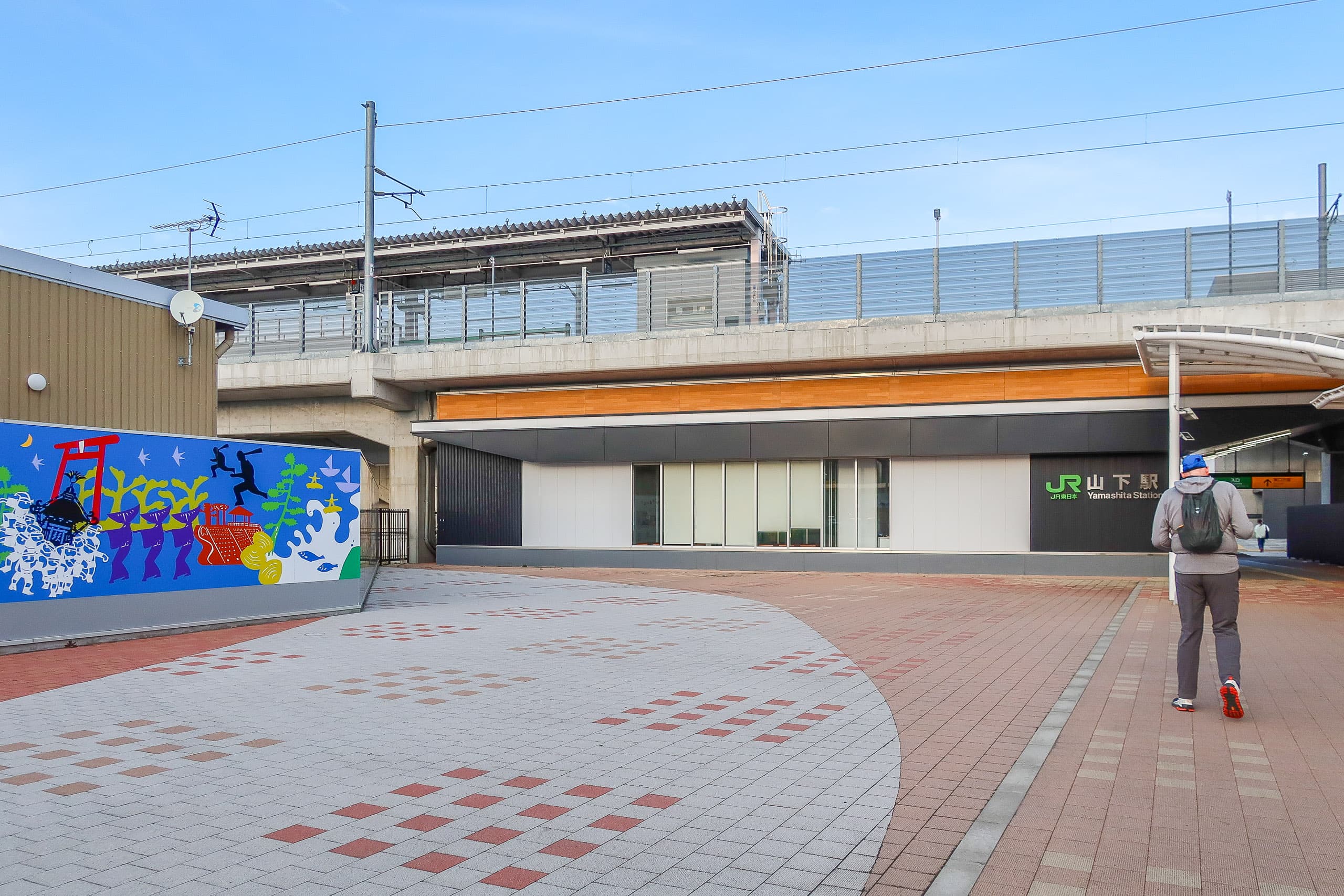
We covered about 27km today.
If we had not reached the Mt.Karou trailhead on Day 1, we might have needed to call for the day at Sakamoto Station, not at Yamashita Station. Then, we probably could not meet the lovely people from the MCT Natori Trail Center, as Sakamoto Station was away from the main road.
Most parts of the MCT route we walked today were hard-surfaced roads — concrete-, asphalt-, or gravel-paved — that made my soles of feet sore. Also, the so much pressure from the very steep downhill parts on the mountain trails around Mt. Karou really tired my knees.
I thought I was fine last night, but on day 2, my out-of-shape body finally started feeling the painful consequence of my lazy days during the winter.
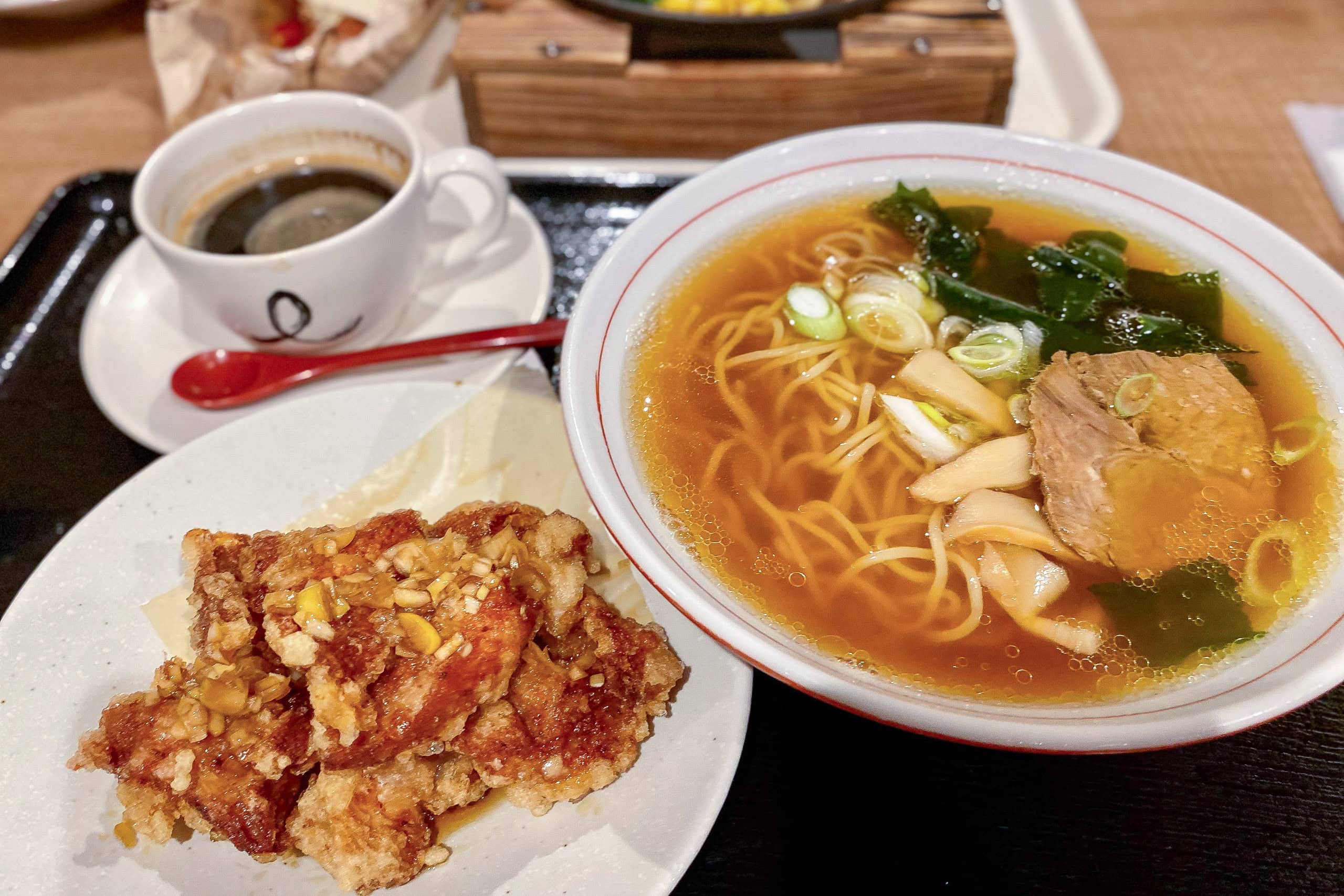
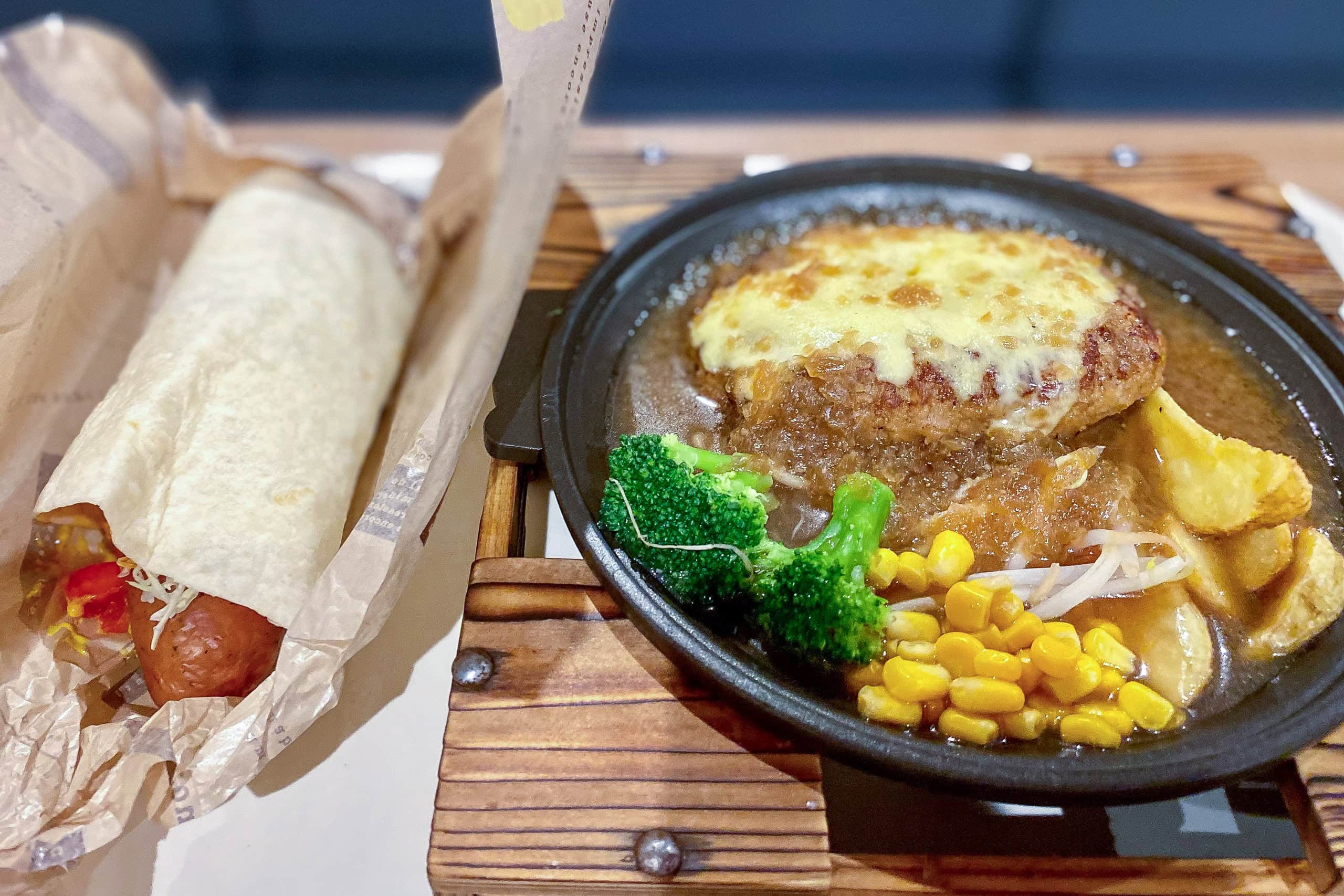
We were so thankful that this hotel had a large public hot spring that we could soak in for a long time. It truly helped our bodies recover from the long walk.
We had dinner at the nice, budget-friendly restaurant inside the hotel and then started packing all the things we left in our room today while hiking.
From then on, we would have to carry the full-weight backpacks.
MCT – Day 2
| Start | Mt.Karo Trailhead |
| Distance | 26.6km |
| Elevation Gain/Loss | 360m/496m |
| Finish | Yamashita Station |
| Time | 8h 45m |
| Highest/Lowest Altitude | 431m/ 2m |
Route Data
The Michinoku Coastal Trail Thru-hike : Late March – Mid-May 2021
- The first and most reliable information source about MCT is the official website
- For updates on detours, route changes, and trail closures on the MCT route
- Get the MCT Official Hiking Map Books
- Download the route GPS data provided by MCT Trail Club
- MCT hiking challengers/alumni registration

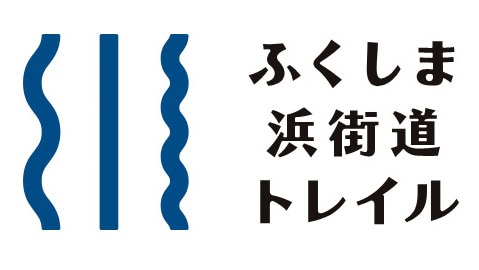



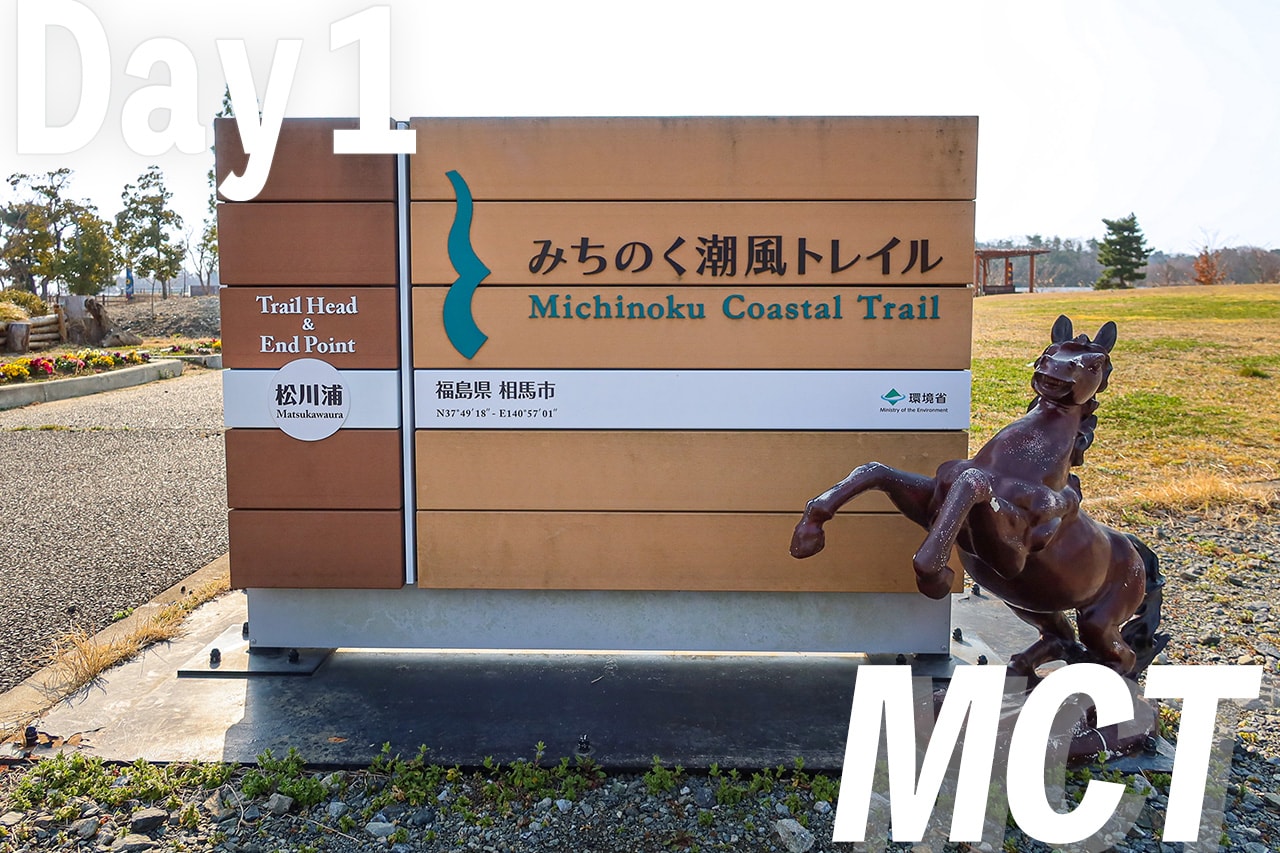
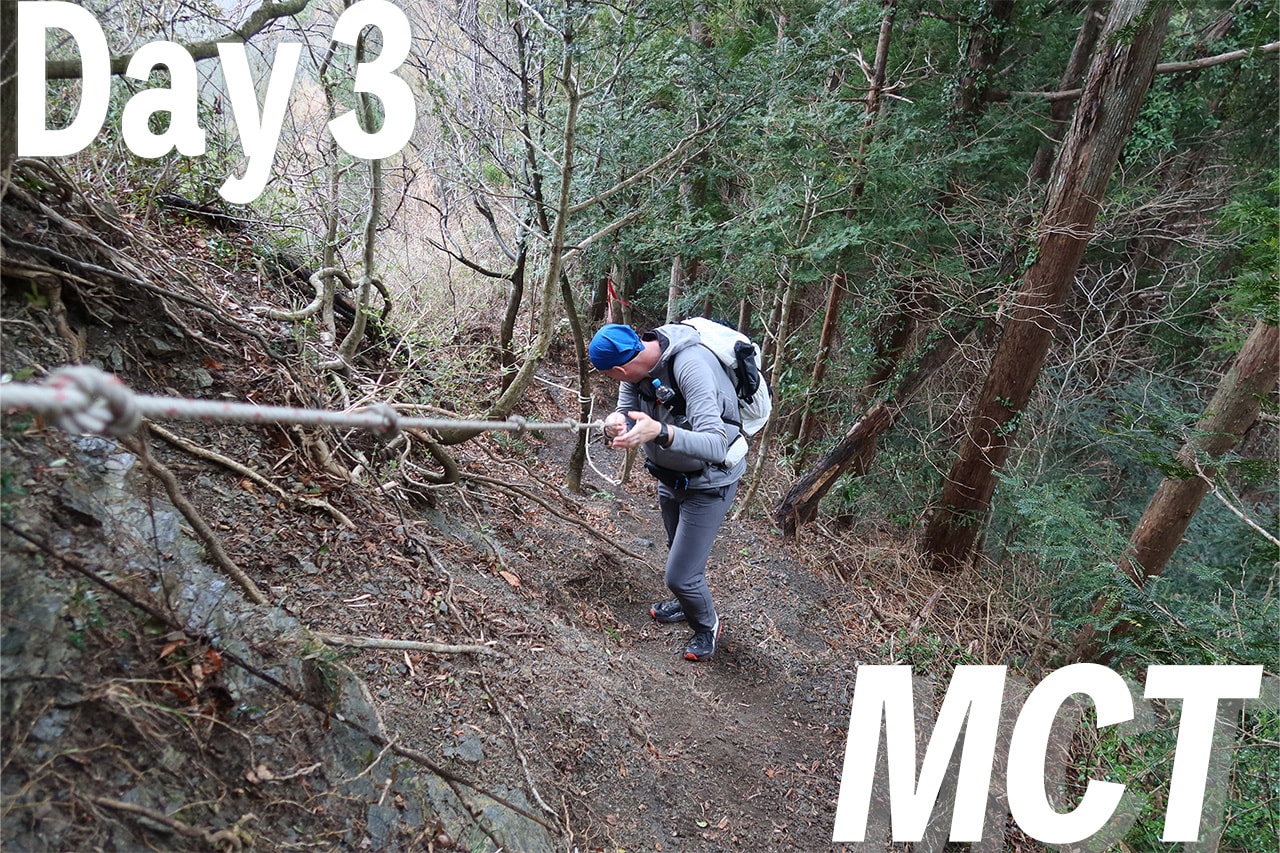
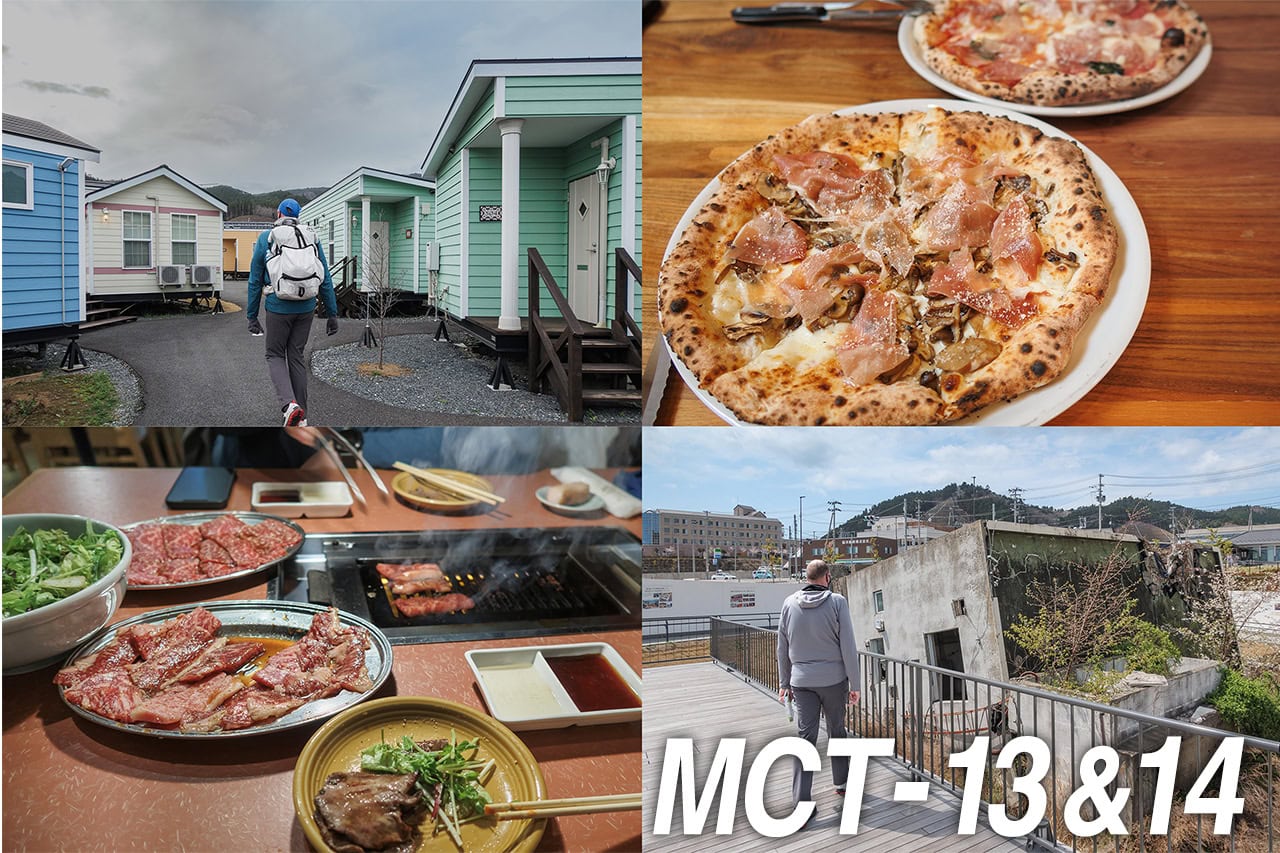
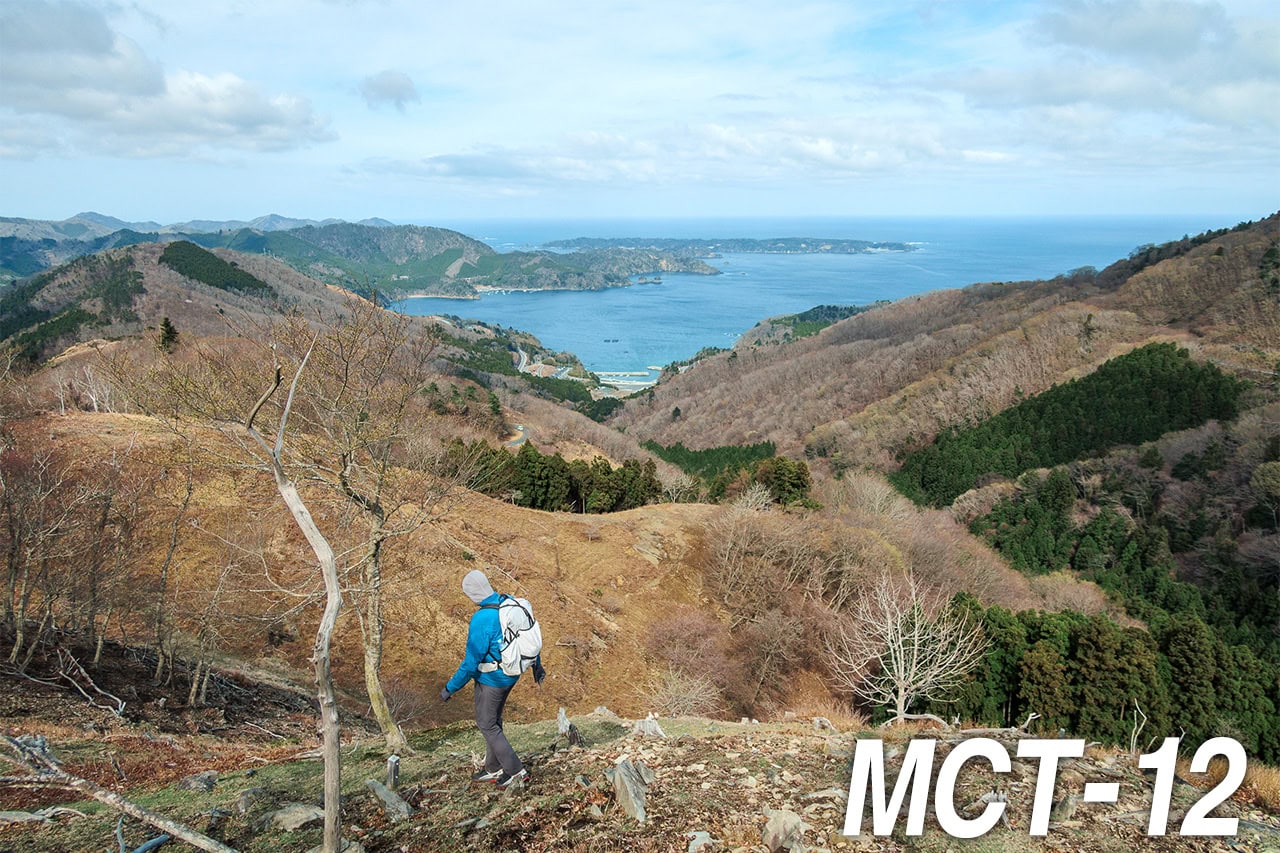
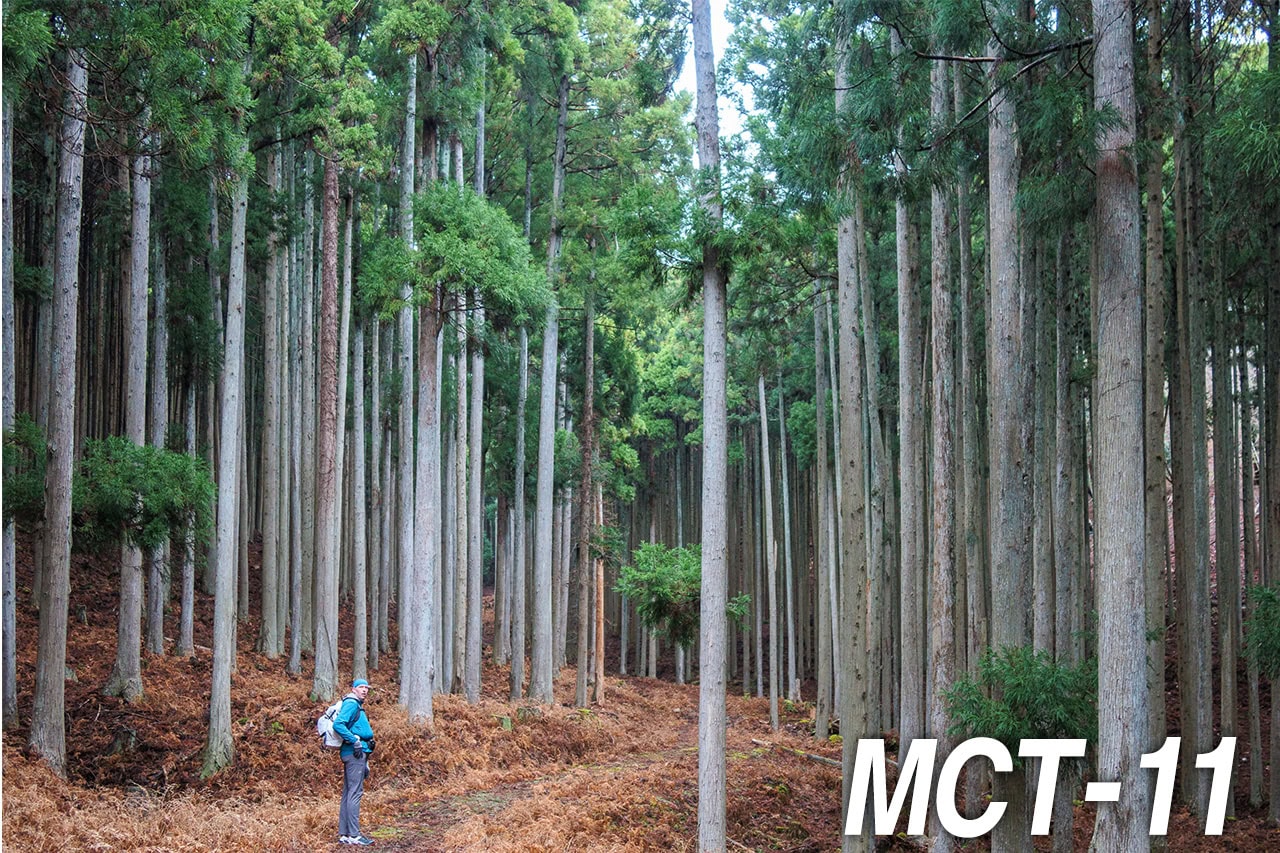
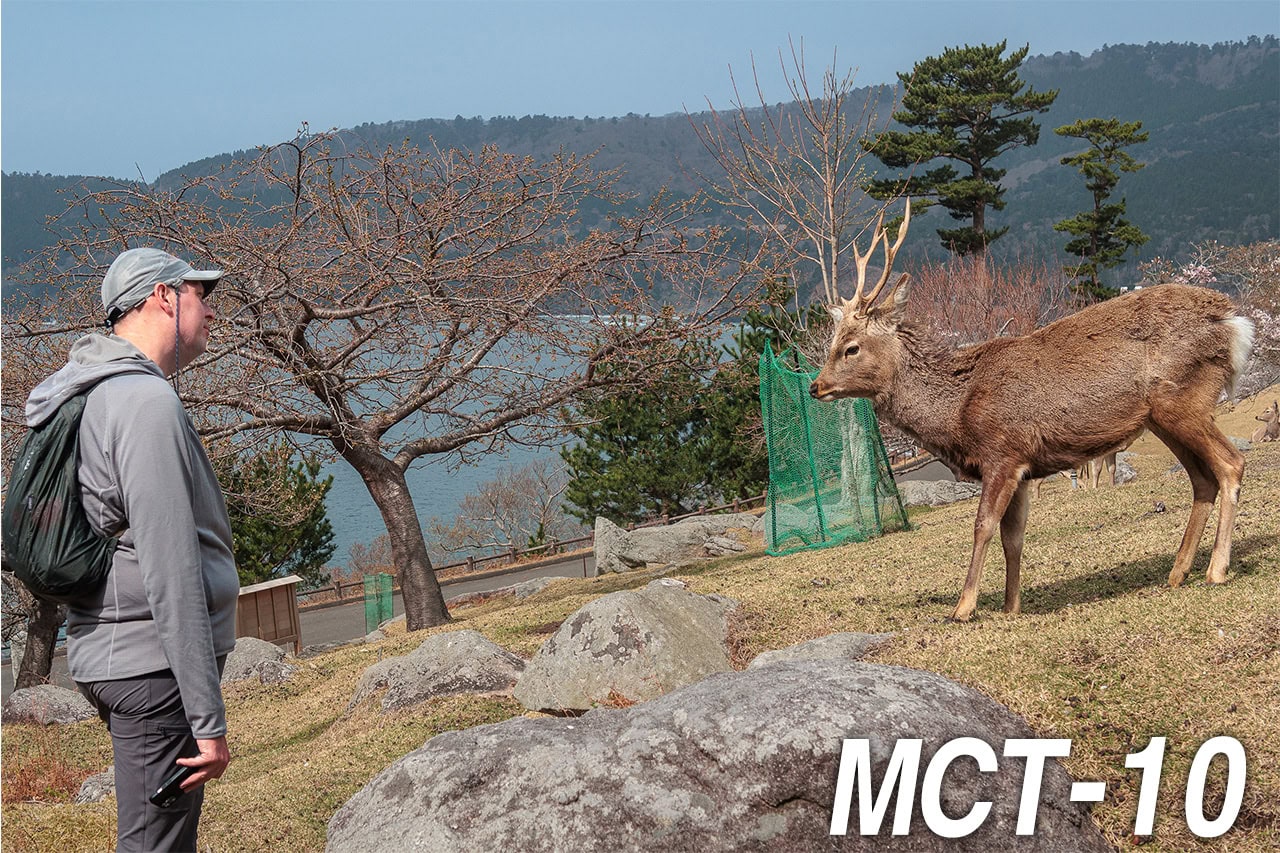
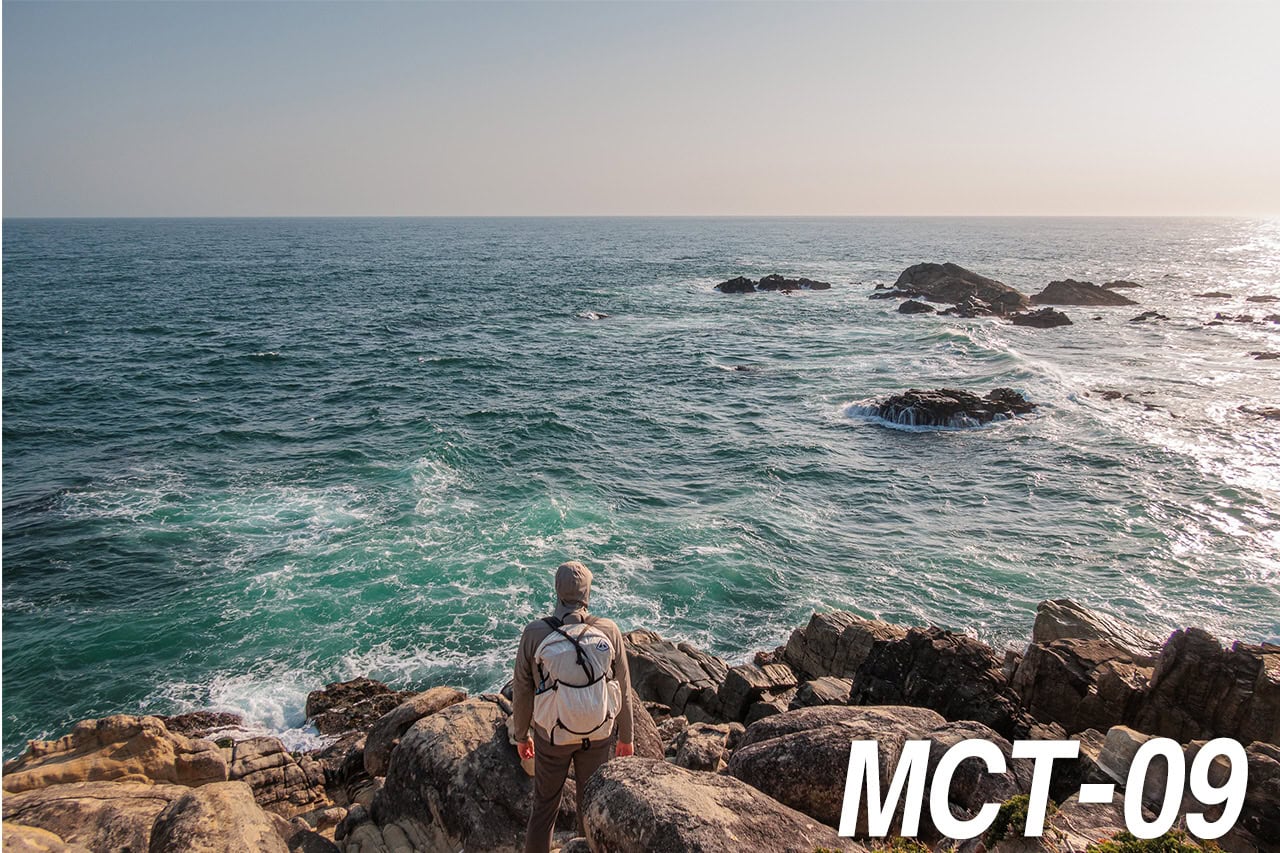
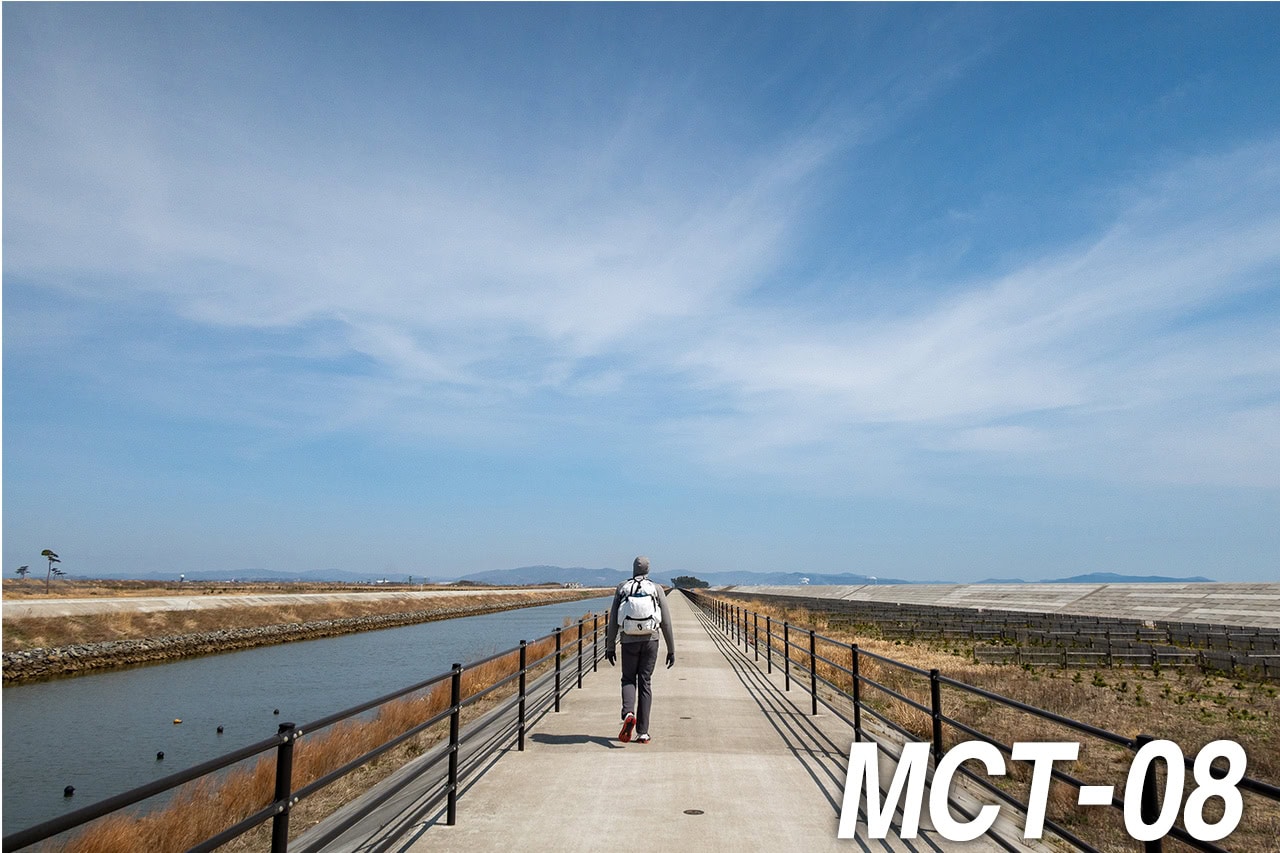
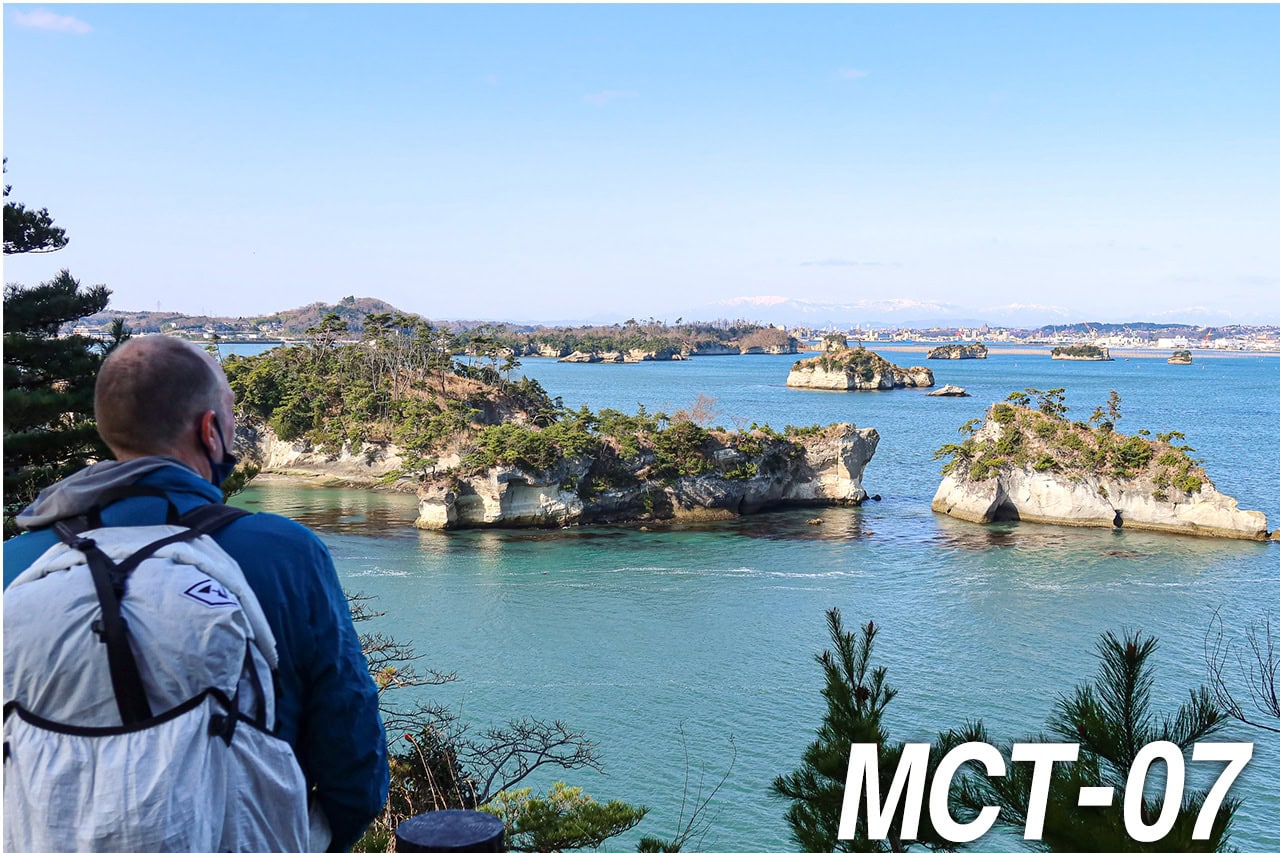
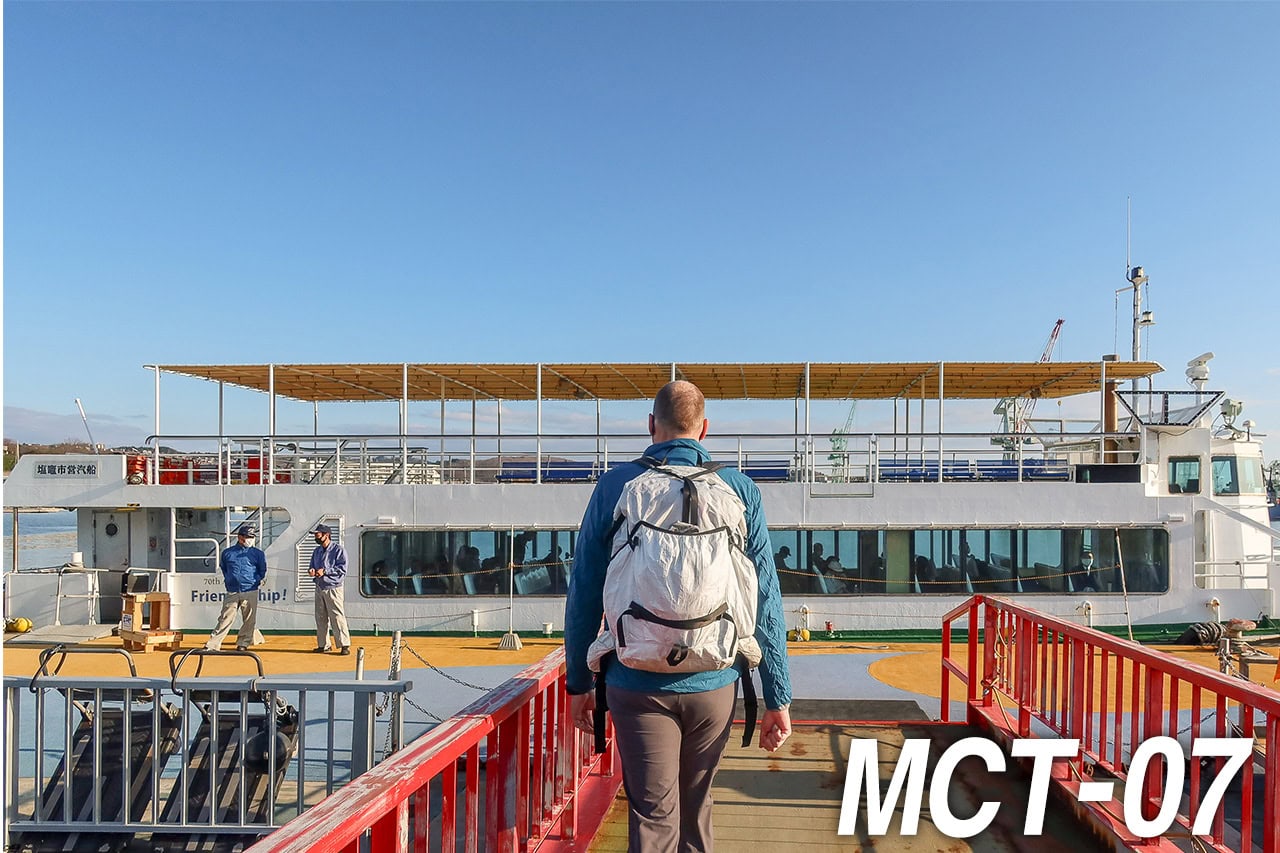
Comments